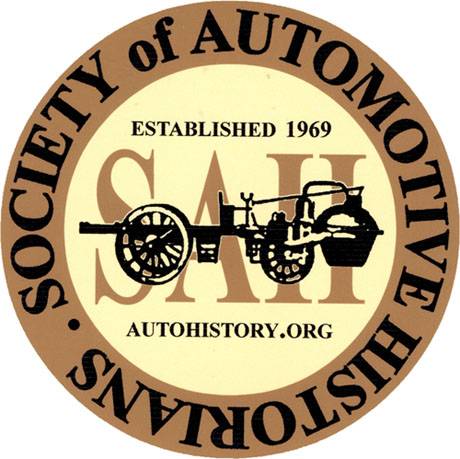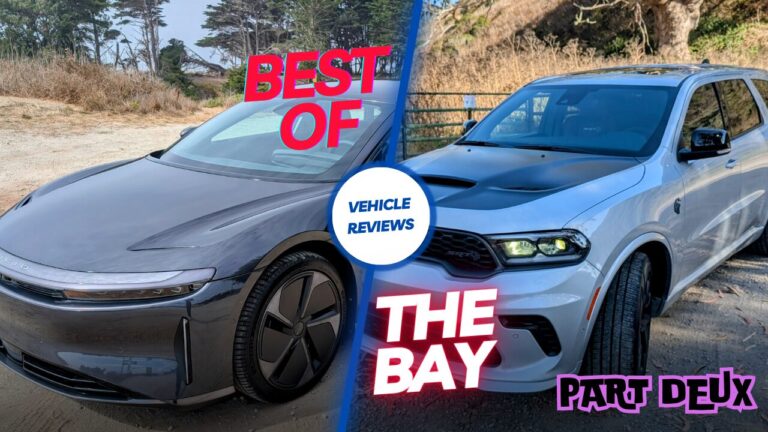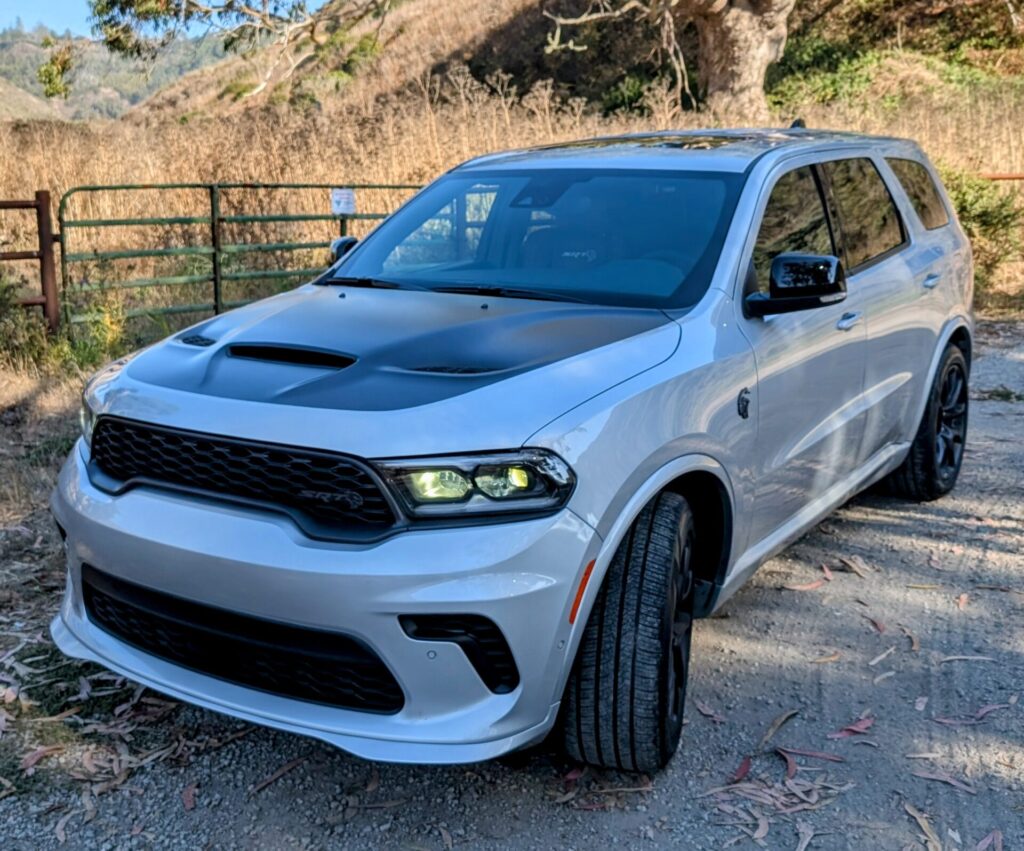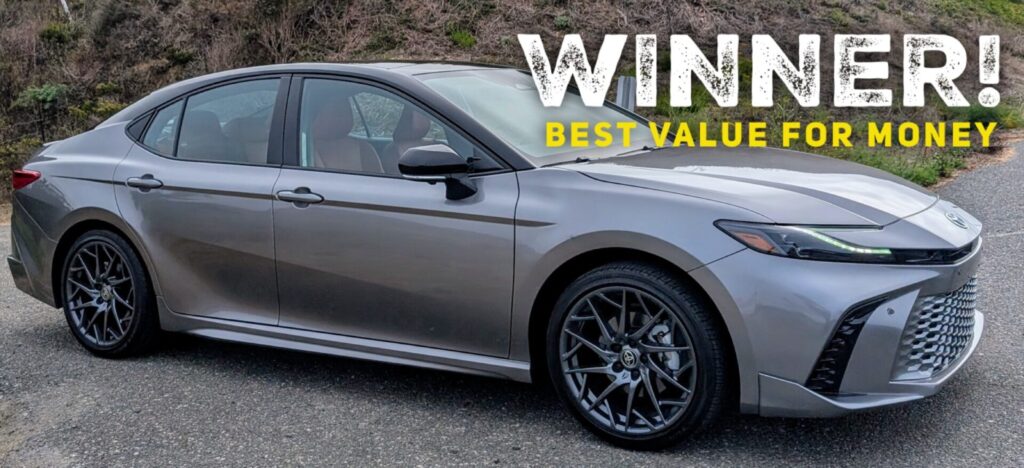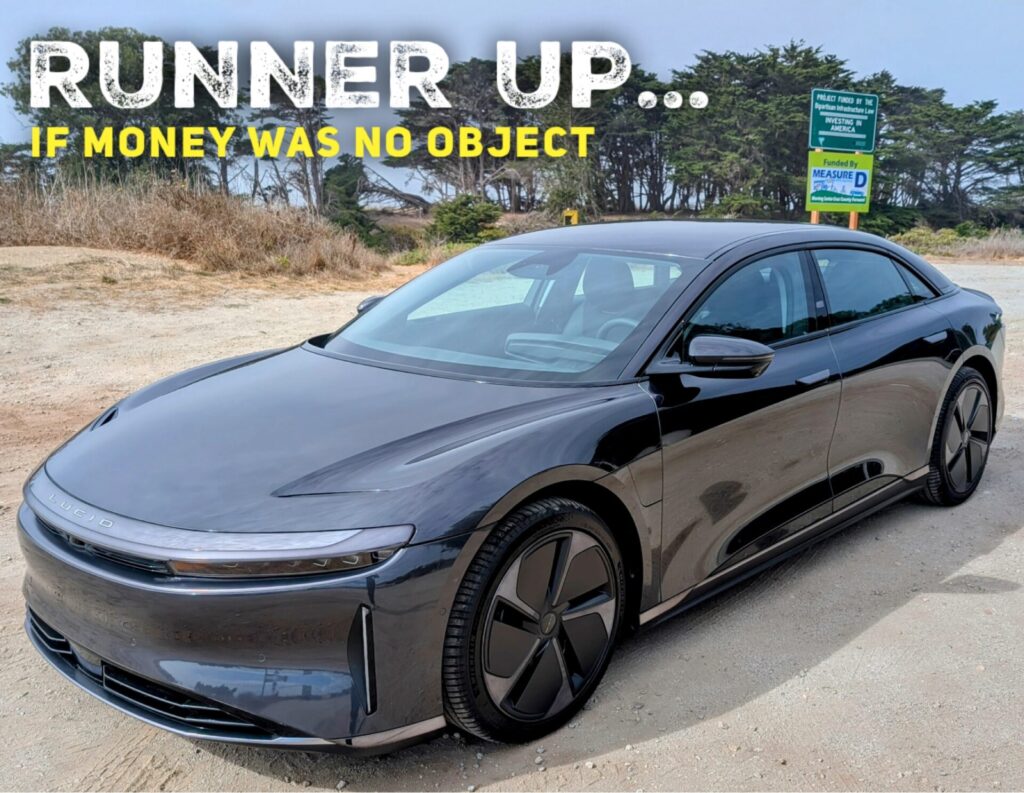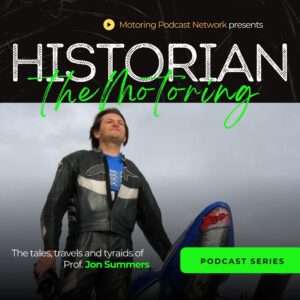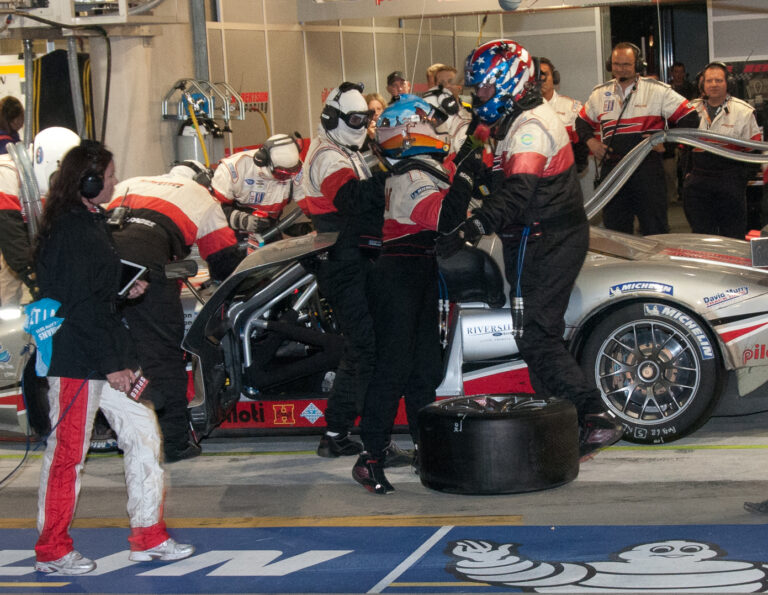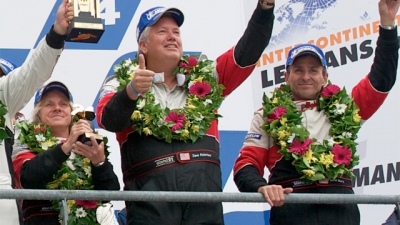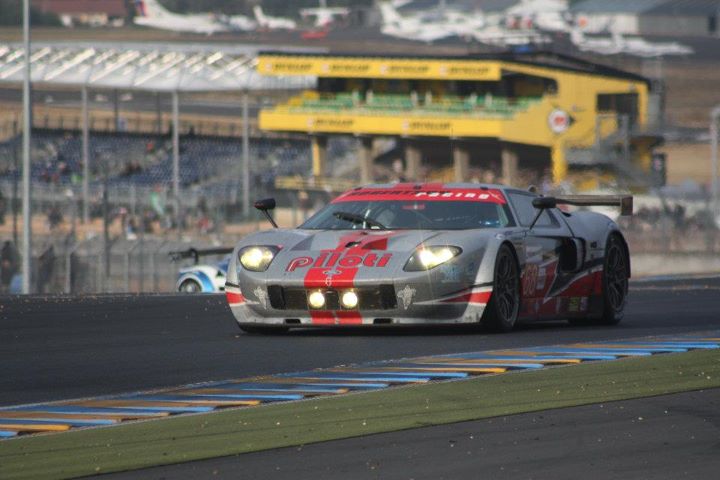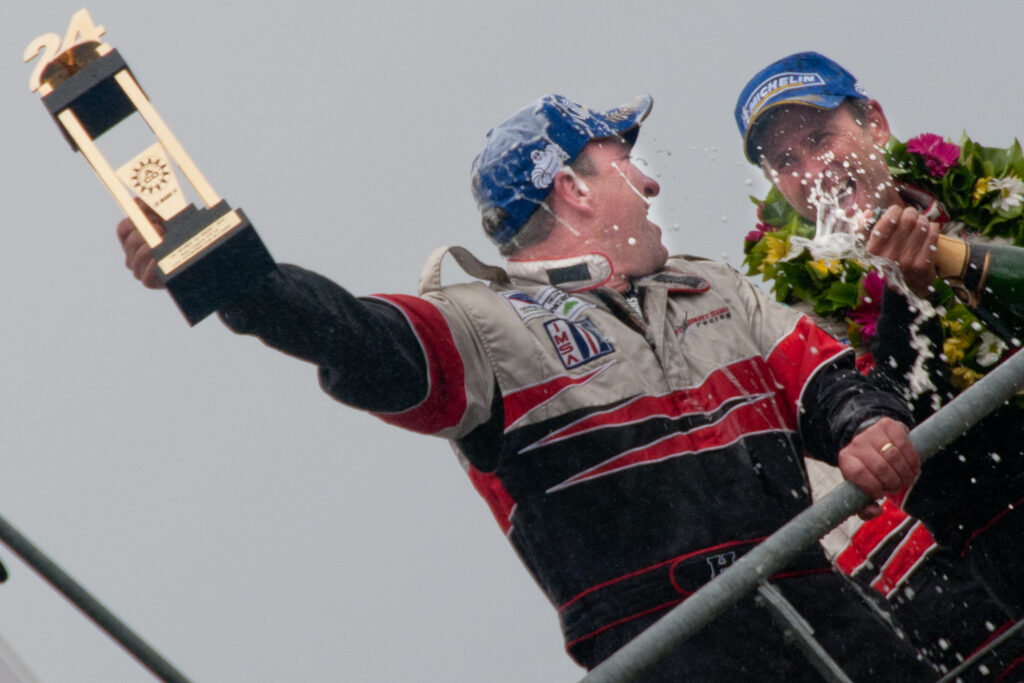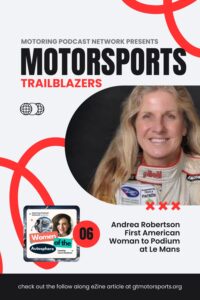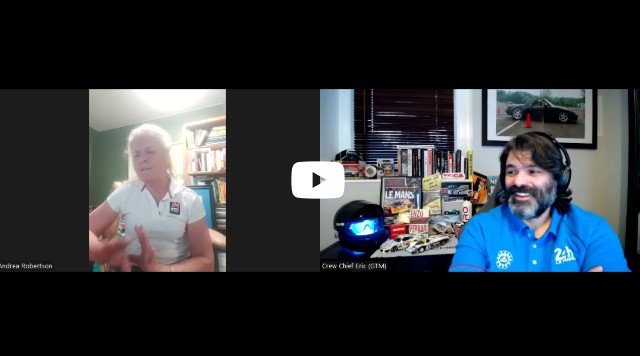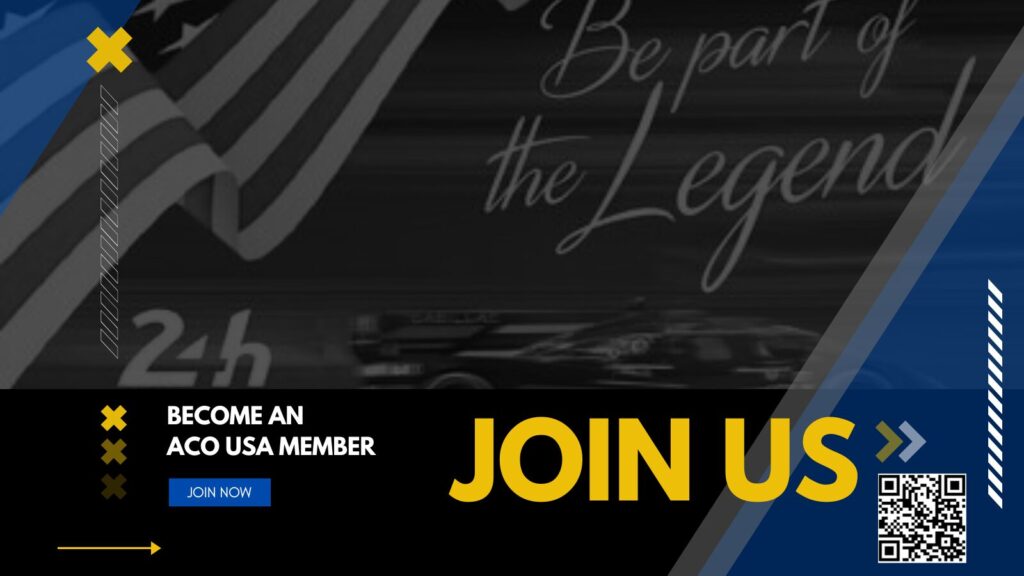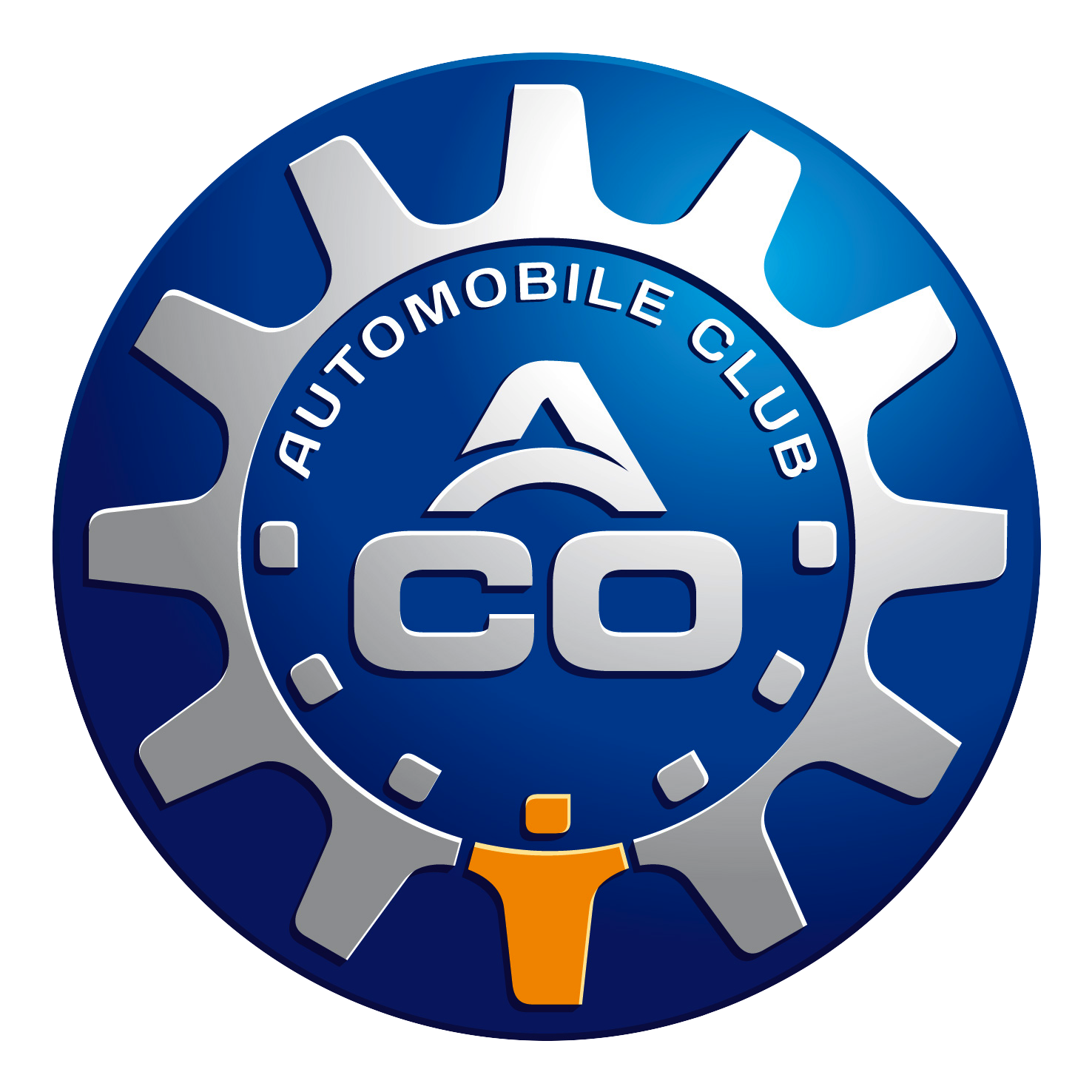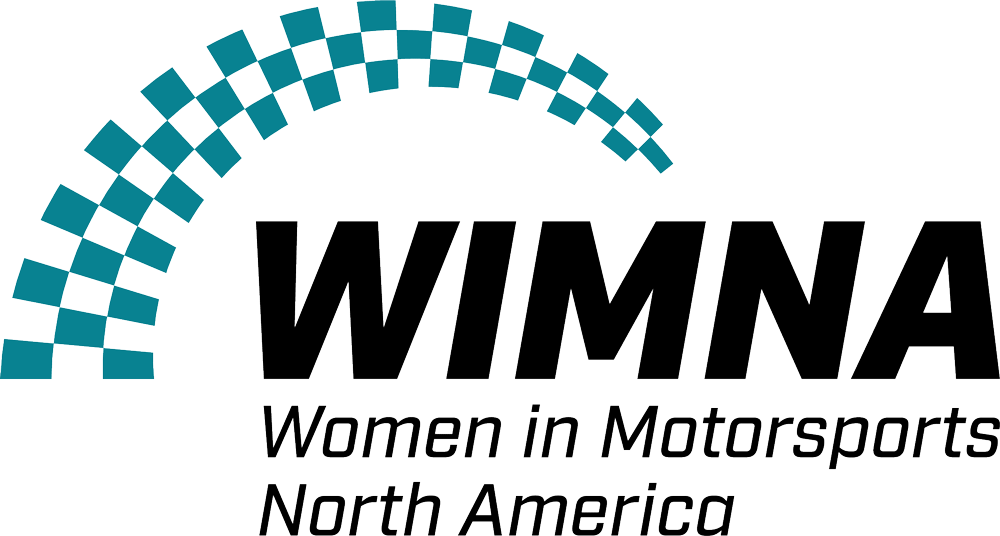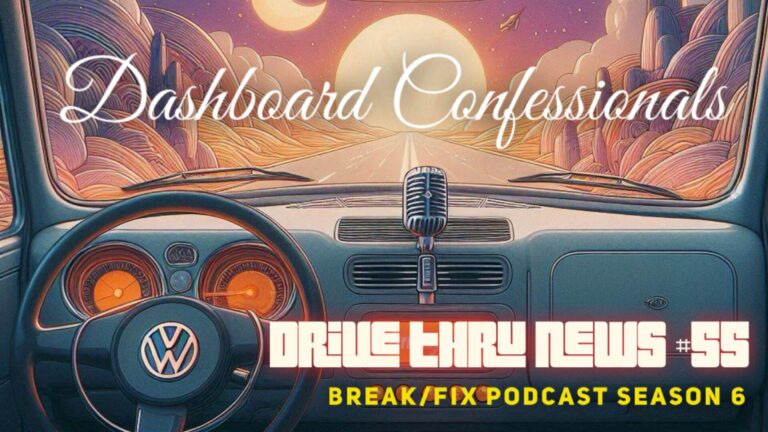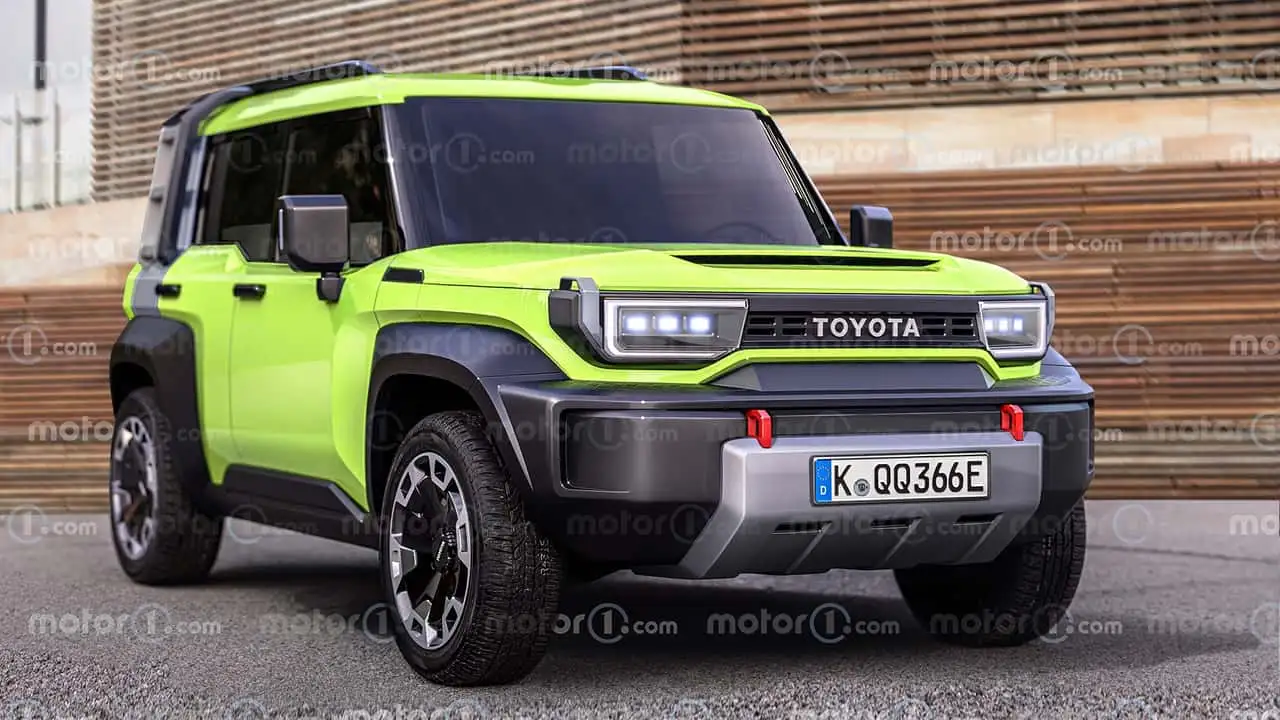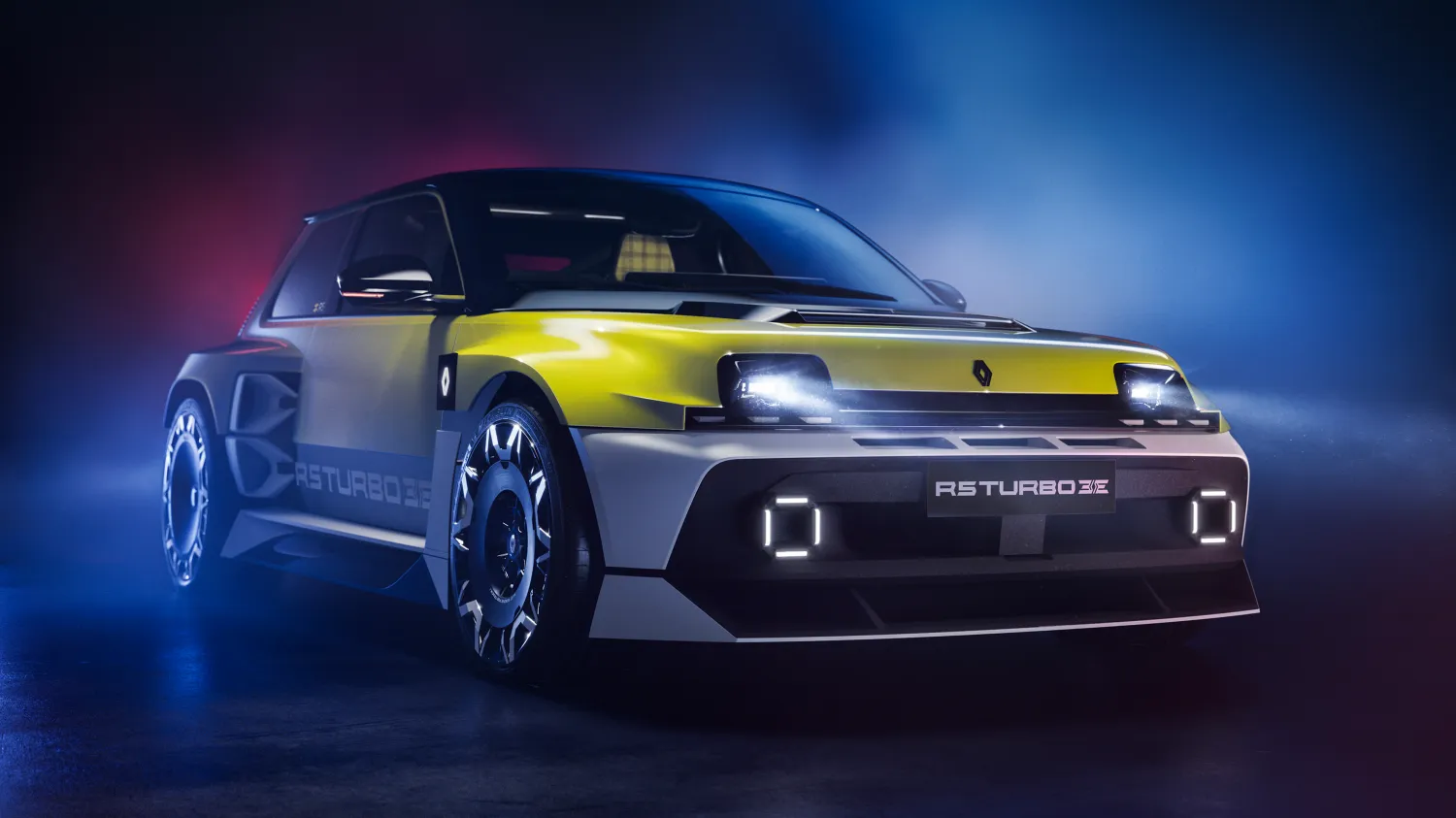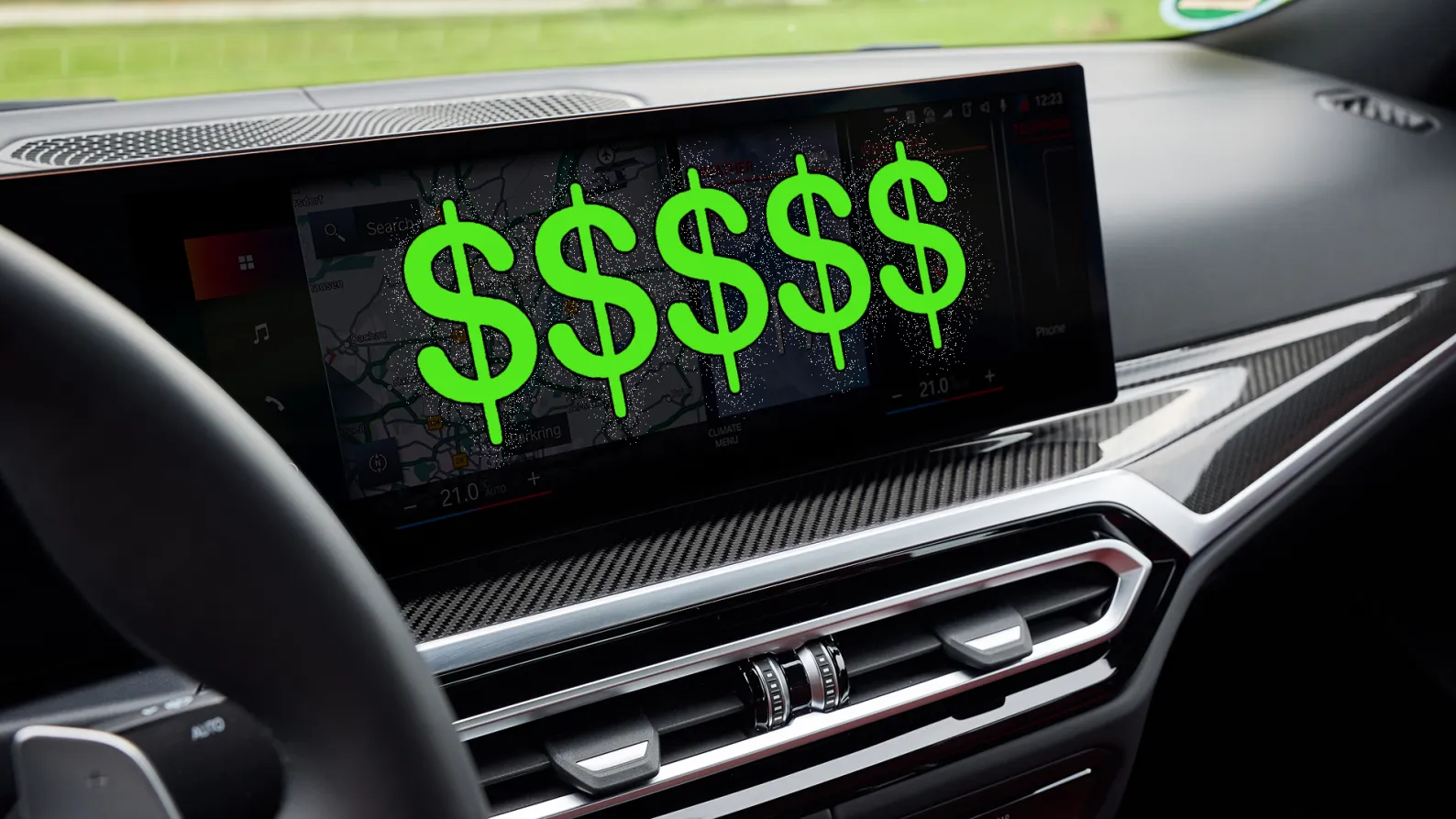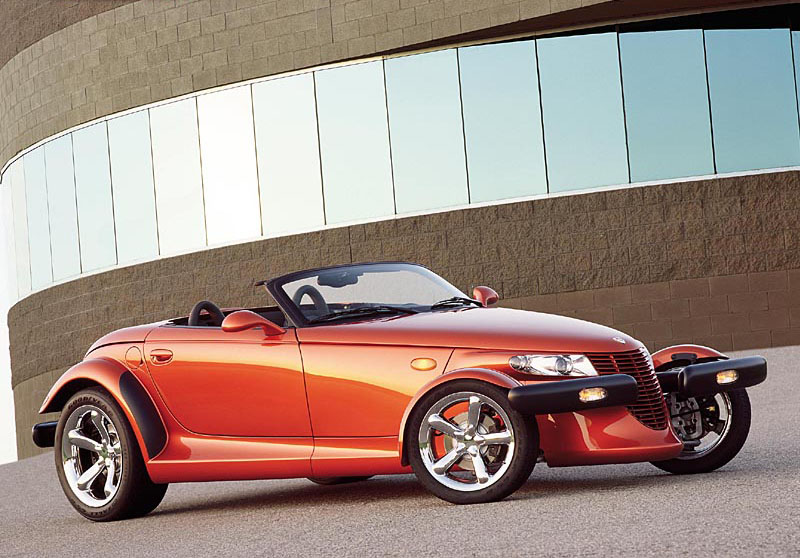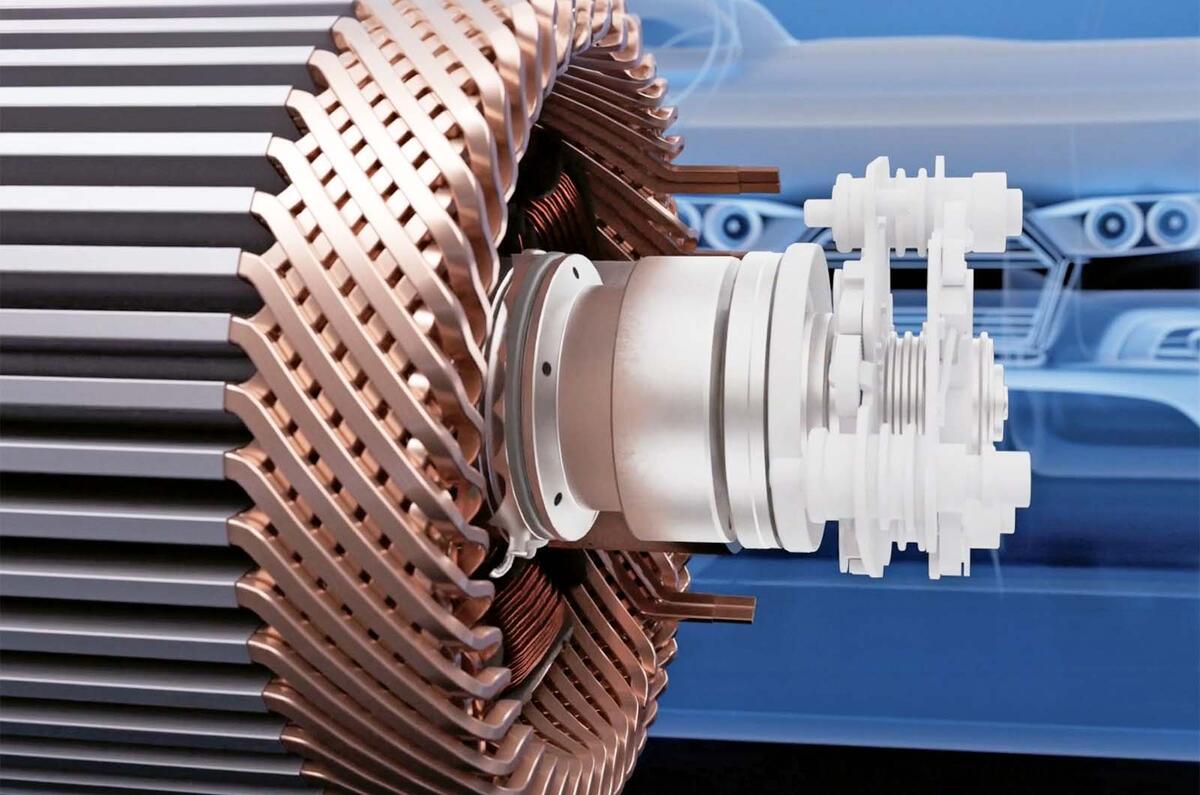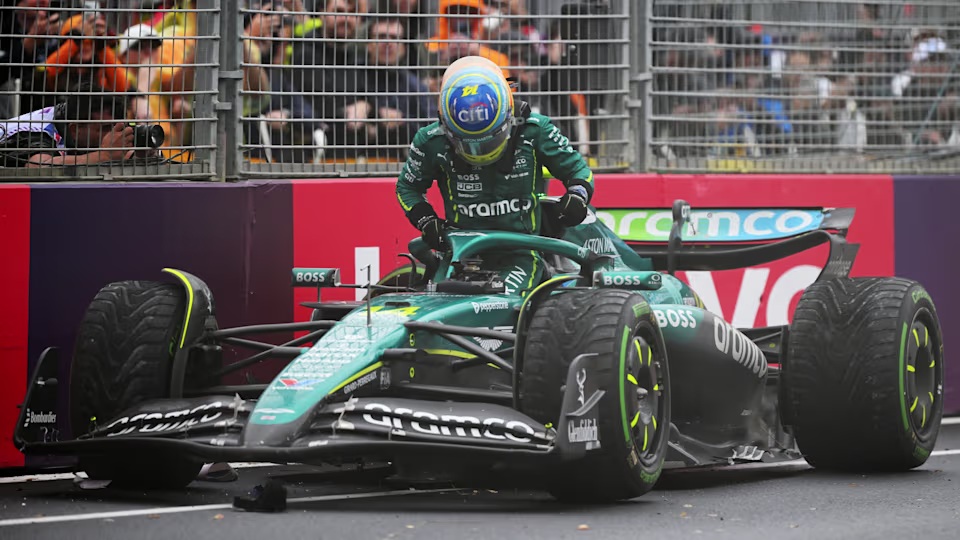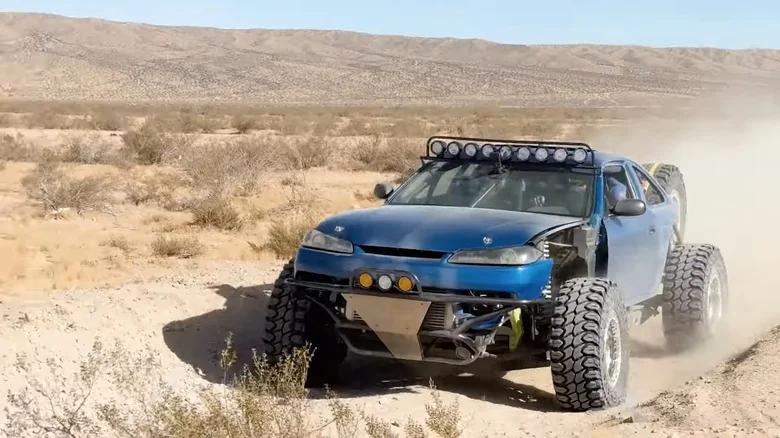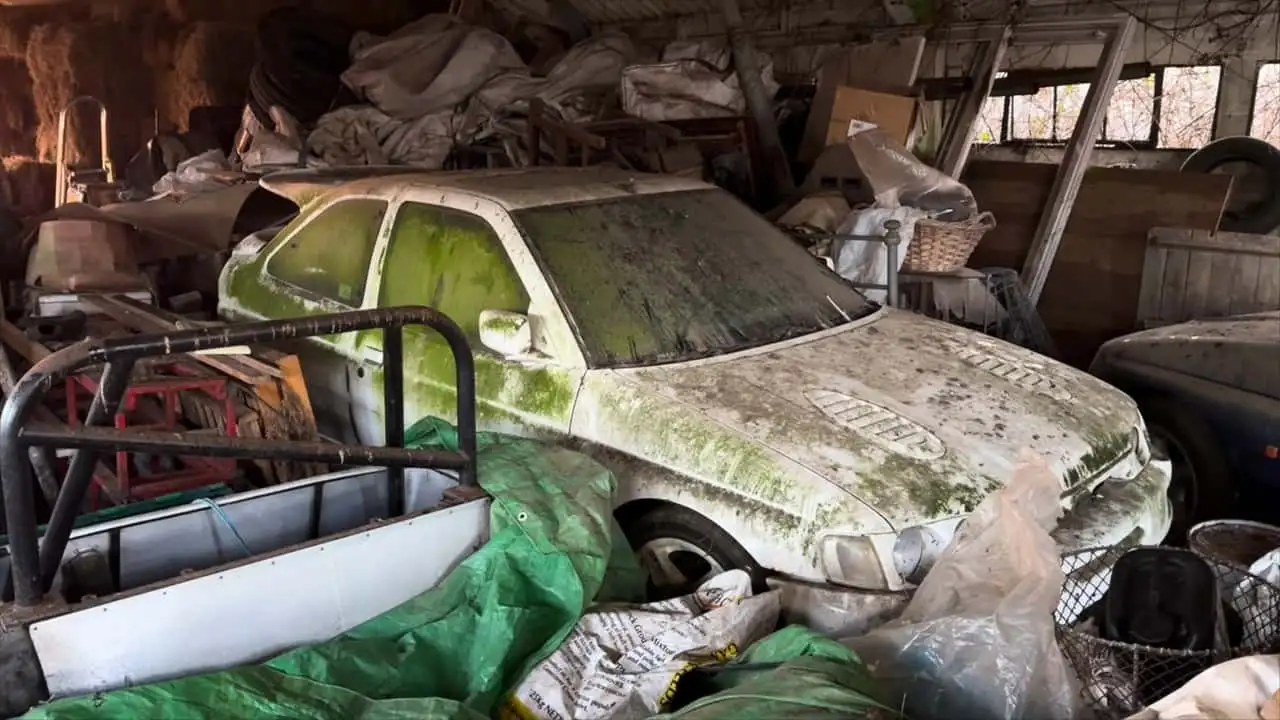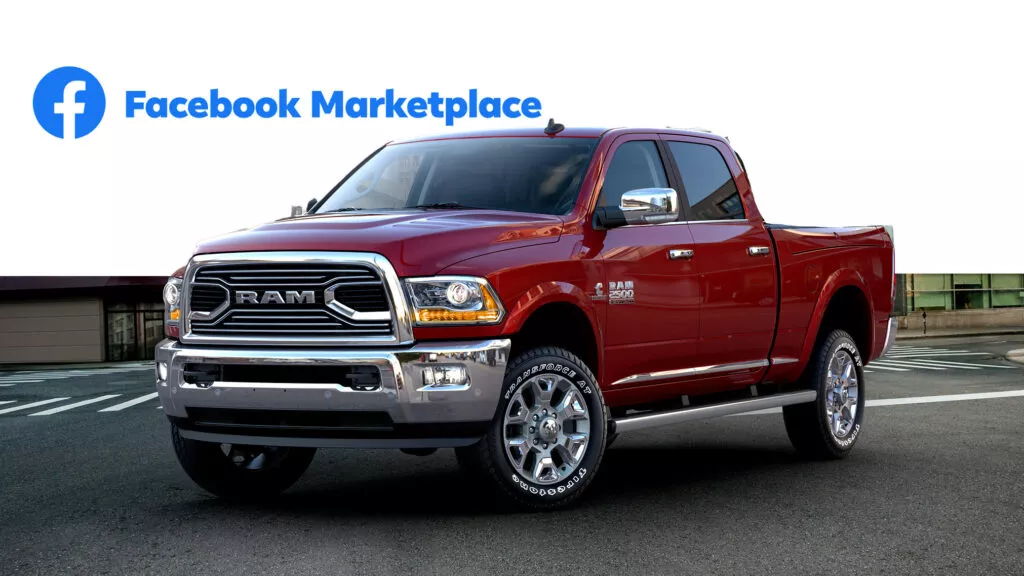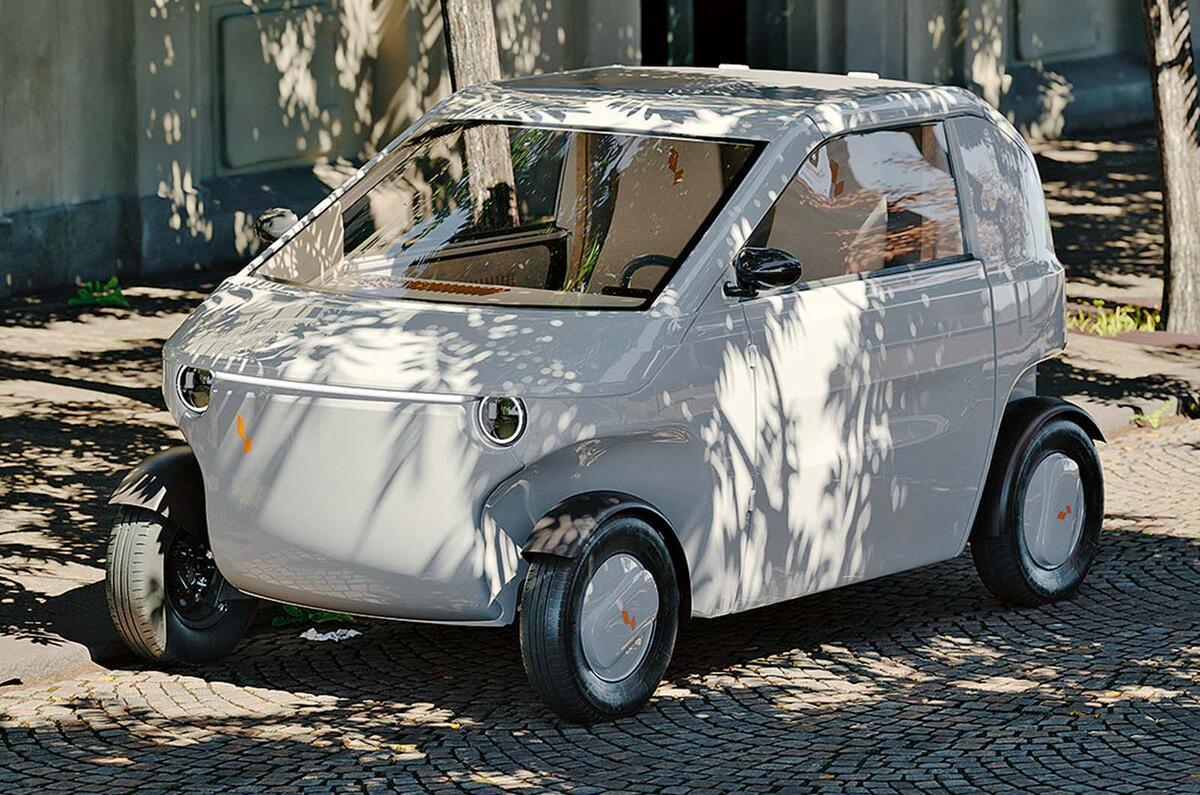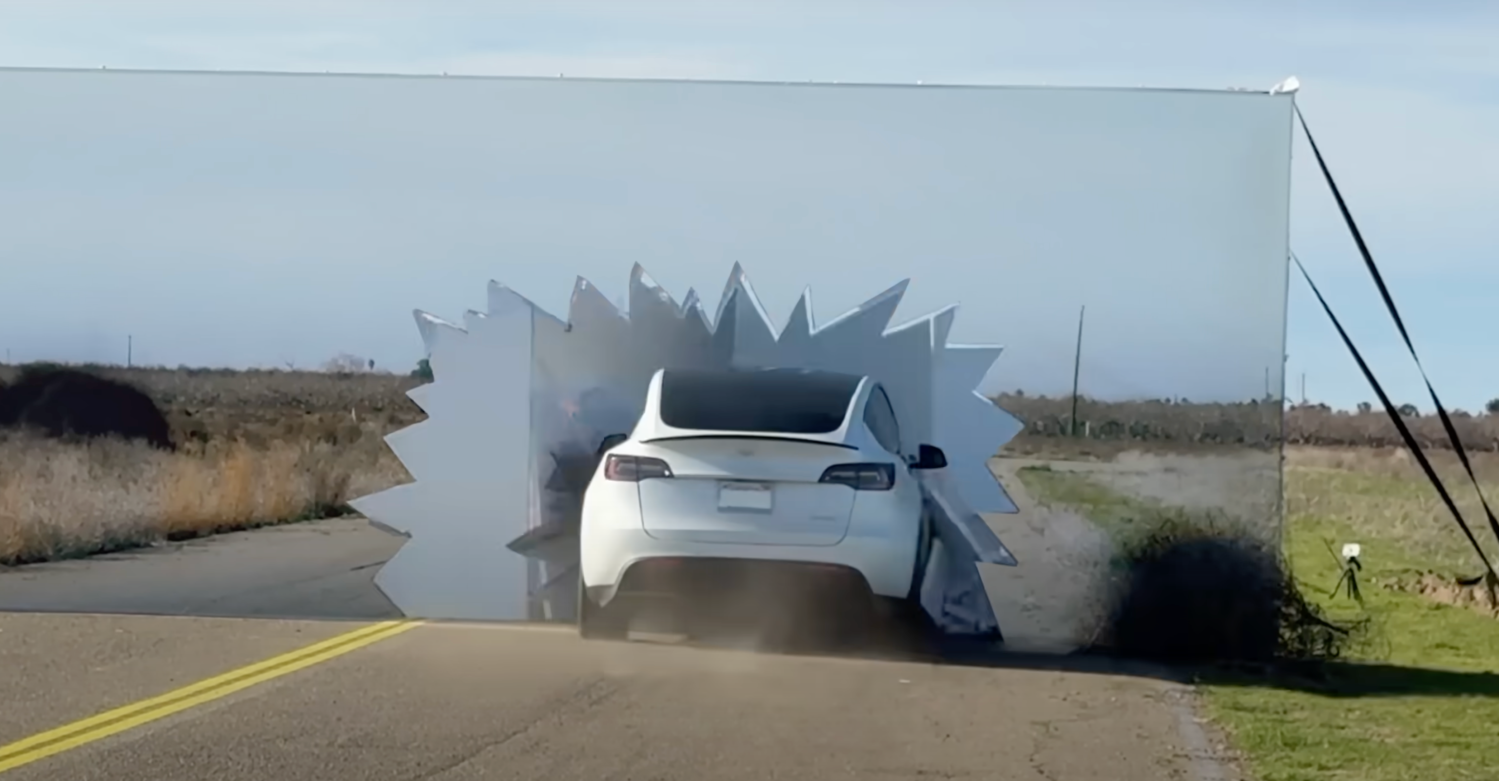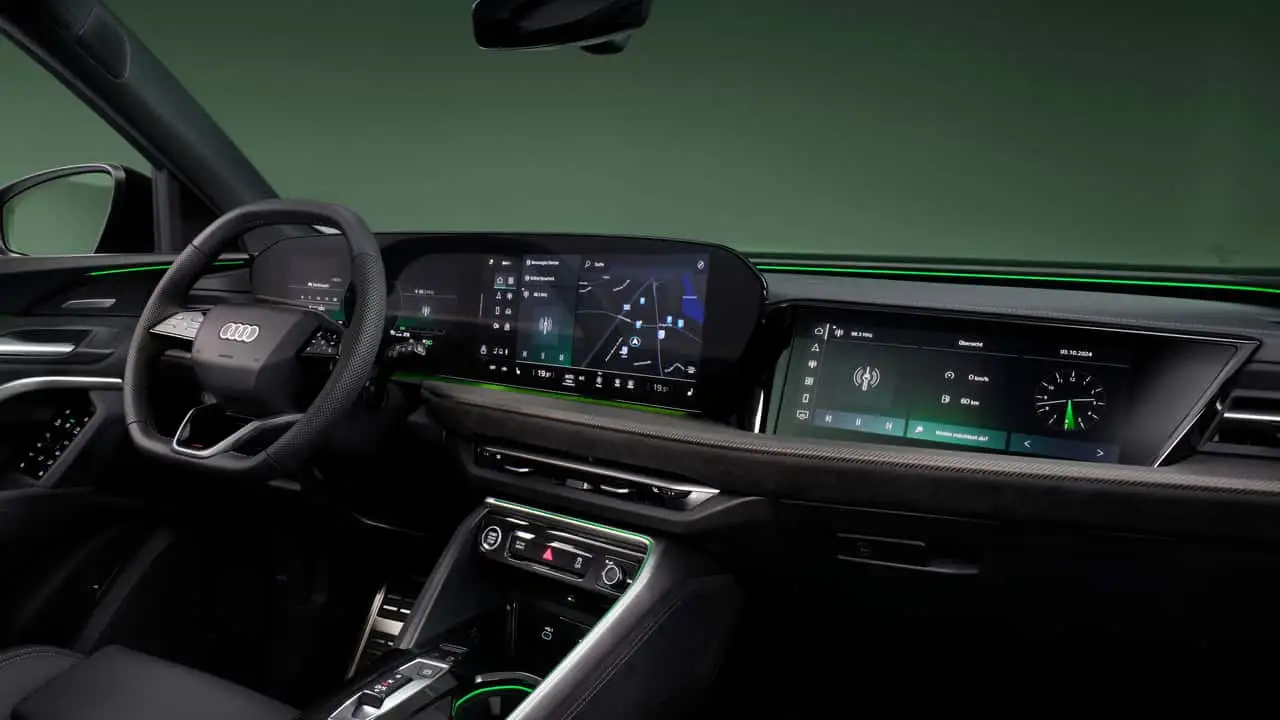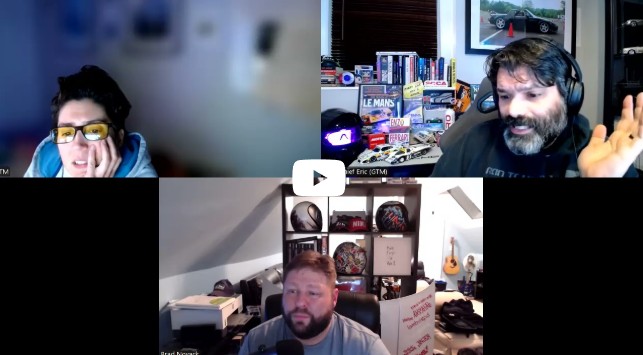Executive Producer Tania: [00:00:00] The drive-through is our monthly news episode and is sponsored in part by organizations like Collector Car guide.net Project, motoring Garage Style Magazine, the Exotic Car Marketplace, and many others. If you’re interested in becoming a sponsor of the drive-thru, look no further than www.motoringpodcast.net.
Click about and then advertising. Thank you again to everyone that supports the Motoring Podcast Network, grand Touring Motor Sports, our podcast Break Fix, and all the other services we provide.
Crew Chief Brad: Welcome to drive through episode number 55. This is our monthly recap where we put together a menu of automotive, motor sport, and entertaining car adjacent news. Now let’s pull up to window number one for some automotive news.
Crew Chief Eric: One for the thumb baby. Season six, we’re kicking it off, and I know you’re gonna correct me.
You’re gonna say, but that’s not right. That doesn’t make any sense. ’cause one for the thumb is a fifth one, right? I don’t know. Technically this is our fifth full season coming up [00:01:00] here because our first season was super short and it was only half. So I count this one as our fifth full one for the thumb baby.
I mean, we’ve done 55 of these. Did we even do drive-throughs
Crew Chief Brad: in the first season?
Crew Chief Eric: Yeah, we did. Our very first one was like in the second month of the show.
Crew Chief Brad: Really?
Crew Chief Eric: Yeah. Like August or something like that. Wow. We sold out that early. We sold out.
Crew Chief Brad: I have news.
Crew Chief Eric: You have news? What’s going on?
Crew Chief Brad: Actually, a lot has going on. Um, your car’s done. Uh oh. It it’s done. It’s cooked.
Crew Chief Eric: Hooked.
Executive Producer Tania: What does that mean? Yeah, what does that mean?
Crew Chief Brad: Oh, it’s somebody else’s problem now. Oh.
Executive Producer Tania: Oh, you sold
Crew Chief Brad: it. You sold it. I sold it. Whoa.
Crew Chief Eric: Professional. Let’s get into it.
Crew Chief Brad: This, this is, this is, uh, break fix dashboard, confessionals.
Dashboard confessionals with Brad.
Crew Chief Eric: Look, he’s a little misty-eyed about it for the first time in a very long time. You are not a Volkswagen owner anymore.
Crew Chief Brad: I know. And it’s gonna be for a while. I can’t [00:02:00] remember the last time I didn’t have two vehicles.
Crew Chief Eric: What made you kick the habit? Uh,
Crew Chief Brad: I got tired of throwing good money after bad.
Crew Chief Eric: That’s the definition of Volkswagen ownership. What are you talking about?
Crew Chief Brad: Exactly? So when I have my, what should I buy? I’m gonna have criteria, but it’s basically I was, it was the right kind of car. It was the wrong. Car though it was the wrong specific car.
Crew Chief Eric: Right.
Crew Chief Brad: But it was what I wanted, but it, the car was too ragged out and beat.
It was like, I enjoyed working on it, but I would’ve enjoyed working on it, making it better, not fixing the shit that the previous owner had fucked up the whole time. Like, yeah, I don’t wanna sit there and change brake calipers and fix wheel bearings and all, and wheel hubs and all that bullshit. I want to throw turbos and shit on it, and superchargers and coil overs and all the fun stuff.
And I kept throwing. Good money after a bad situation and it just kept getting worse. And the more I did to it, the worse it got. And I mean, I was double into it [00:03:00] what I originally paid. At least
Crew Chief Eric: it sounds like my BMW.
Crew Chief Brad: Exactly, exactly. Which is why I’m making a statement now. There are only three, maybe four German cars.
I will consider purchasing in the future ever
Crew Chief Eric: and 17 Japanese ones. So what are these four German cars? I’m very curious.
Crew Chief Brad: So the first one is a mark four R 32, because I’ll do it right and get the og. Good luck. Yeah, exactly. Exactly. So that would be the first one. The second one is an E 46. M three. Yeah.
Just because I’ve lusted after those cars ever since they were ever made. The third one is a nine 11, because who doesn’t want a nine 11?
Crew Chief Eric: I don’t want one.
Crew Chief Brad: Well, that’s you. You’ve already got a Porsche. You’ve already got a P car. The fourth one is probably even more unobtainium than a Mark four R 32. And that is the Mercedes CLK Black series.
Crew Chief Eric: Oh yeah. That’s number one on my list if I have to buy. We, and it’s funny, Tanya and I were just talking about Mercedes before we got on air, and she did some car spotting [00:04:00] on the road. She’s like, I’m not sure if it was a one 90 modified resto mod or if it was an actual EVO two or if it was a, you know, 4 65 60 SEC.
We’re trying to figure out exactly like what late eighties. Model it was or whatever. But yeah, the CLK black is definitely right up there.
Executive Producer Tania: I’d like to interrupt our program here in Arlington, Virginia. You can purchase yourself a 2004 Volkswagen, R 32 with 108,336 miles for the low price of $17,981.
Crew Chief Brad: What color?
Silver. They’re not unobtainium. They’re just more expensive. Which is fine because I’m not going to be in the market until the kids are outta daycare.
Executive Producer Tania: You’ll never get one of these. Then I, I’m going
Crew Chief Brad: to go ’cause they’ll all, they’ll all be trashed or they’ll all be destroyed.
Executive Producer Tania: Oh wait, you said daycare? I was thinking like when they were old enough to drive.
Nevermind.
Crew Chief Brad: Oh, no, no, no daycare. So like four years from now.
Executive Producer Tania: Yeah.
Crew Chief Brad: I’ll be able to pick one up then,
Crew Chief Eric: or I’ll
Crew Chief Brad: get something else.
Crew Chief Eric: Still a 20 plus year old mark. Four that needs everything. So you’re in the same boat all over again.
Crew Chief Brad: Yeah. But at least at that point, I’ll know what I’m getting into and I’ll [00:05:00] be a lot more choosy about the vehicle that I buy.
And I won’t buy a car that was at auction.
Crew Chief Eric: Well, yeah, but the thing is, the mark fours and the mark fives don’t share any DNA. So you’re going back in time. You know what I mean? I know. I prefer the mark
Crew Chief Brad: fours.
Crew Chief Eric: Oh, I, I feel you. I feel you. They’re just more specific, you know what I mean? Yeah. But
Crew Chief Brad: one thing I did find, you know, not to keep going down this train.
Crew Chief Eric: Oh no. You dropped the bomb.
Crew Chief Brad: So yeah, I just dropped a truth bomb for the first, for the first episode of the new season.
Crew Chief Eric: Now we’re going down this road.
Crew Chief Brad: The one thing I did find out between the mark four and the mark five is there’s a lot more aftermarket support for the mark four than there is the mark five.
Funny enough
Crew Chief Eric: to this day across the board, yes.
Crew Chief Brad: Exactly. So that was another thing I kept running into problem wise, is aftermarket support and even just stock part support for that car was really hard to find. Like I was, I, I needed, after doing all the rear suspension and everything, it was to the point where I, I basically [00:06:00] needed to replace the entire rear subprime Ooh.
Crew Chief Eric: Because it was
Crew Chief Brad: so rusted out and everything, and. I couldn’t find one anywhere.
Crew Chief Eric: Yeah. ’cause there were only a handful of those cars to begin with.
Crew Chief Brad: Right
Crew Chief Eric: Now, I will say build numbers wise, there are less Mark four R 30 twos globally than there are Mark fives. Like they brought 1500 to the US but I think total production numbers was still under 5,000, which is not that much.
Crew Chief Brad: No. Considering they brought 5,000 mark fives to the US alone.
Crew Chief Eric: Right. Exactly. So that then, which is really weird that you would think you’d have more stuff available, but now you’re in that weird period of, well, how much of it is shared with the second generation TT and you know, all that kind of crazy stuff.
So, so I
Crew Chief Brad: say, I say this and what I’ll, what will actually ended up happening is I won’t be able to find one. I’ll still have the itch for another Volkswagen and I’ll, I’ll shoot for the star, the R 32 and I’ll land on a 24 Val VR six. That’s what’s going to happen.
Crew Chief Eric: I got one on the trailer, it’s ready to go.
Crew Chief Brad: I know, but I, I don’t think you’re selling it and it’s not street [00:07:00] legal.
Crew Chief Eric: Everything has a price tag.
Crew Chief Brad: Everything’s for sale.
Crew Chief Eric: As for street legal, you know, that’s a whole nother problem. But anyway,
Crew Chief Brad: those are the only German cars that I will consider buying in the future. I will not buy another German car.
Crew Chief Eric: Wow.
Crew Chief Brad: The
Crew Chief Eric: lesson is finally learned. I guess German cars suck. No, I’m just kidding. That’s not true. I’m kidding. They’re just not for me. And to your point, my list of German cars keeps getting shorter every year.
Crew Chief Brad: Yeah, yeah. The older I get, the less I want to deal with all that. Fucky.
Crew Chief Eric: Chicanery. Yes, exactly. I don’t, I don’t wanna, okay.
Any
Crew Chief Brad: German listeners? Anybody that speaks fluent German, can you please translate fuckery to German so I can use that word?
Crew Chief Eric: Farik. Newgen. That’s what it,
Crew Chief Brad: the translate. It’s fucking stupid. That’s what it’s,
Crew Chief Eric: uh, yeah. All right. So why don’t we continue this thread. This is now the showcase. We’re gonna talk golf Far because that’s the first article coming out of Volkswagen, Audi Porsche News by talking about the latest R edition of the golf that’s coming.
Executive Producer Tania: What makes it an R? What makes any of these anything [00:08:00] anymore?
Crew Chief Eric: I don’t see anything special. You tell me, is it wheels in the Brakes? Because those brakes, they’re not even Brembo. I mean, look at these things. They look like the stuff you get at Advanced Auto that say like Corvette on the side. You just screw ’em into your actual calipers.
It looks like you have a big brake kit.
Executive Producer Tania: I mean, what makes this different than A GTI? Do they even make the GTI anymore?
Crew Chief Brad: Is that the problem? All wheel drive and more horsepower. Like a hundred more horsepower.
Executive Producer Tania: Oh, so it does still have all wheel drive?
Crew Chief Brad: Yeah,
Crew Chief Eric: it has our center caps for the wheels.
Crew Chief Brad: And a really stupid looking R on the back under the Volkswagen symbol
Crew Chief Eric: and that goofy exhaust and everything else that goes along way.
Yeah, by outward appearances, other than the color, the Subaru Blue, going back to the original mark for R 32, that Volkswagen R Blue is specific to the r’s. You can only get it on those models. Whoop Deep frick. It looks like every other STI out there. And it was on purpose because it was competing with the STI and the Lancer Revolution when those cars all came out together.
So they’ve kept that traditional, it comes in limited colors [00:09:00] otherwise, but they’re standard Volkswagen colors, black, white, red, silver, blue, you know, whatever. Compared to the previous golfer, what makes it so special? I don’t even know what addition we’re on the mark. 8.75 or some happy horse hockey like that.
13 more hearse PERS than the last one.
Crew Chief Brad: They just kicked up one more PSIA boost.
Crew Chief Eric: Yeah. More than likely it’s still dressed up with two 30 fives. They’ve been running the same wheel size since the mark fours. How pathetic is that? You got a car this big and they haven’t stuffed more rubber underneath of it.
Crew Chief Brad: It does look like it’s lifted.
Crew Chief Eric: It looks like a Tiguan. It does.
Executive Producer Tania: Well, the best part is. There will be a wagon variant that the US won’t see. Ah. And it will have the exact same performance in a heavier car. Ah. They even said it’ll be slightly slower. No kidding. You’re putting the same power in it, but you made it bigger
Crew Chief Eric: and heavier.
And that begs the question, how much more does this weigh than the previous golf R? Because 13 more [00:10:00] horsepower keeps it at the same power to weight ratio that it had before. So it’s not any faster.
Crew Chief Brad: The car weighs between 34 72 and 3,500 pounds. 3,500 pounds. Still heavy for a golf. That’s what my old one weighed.
Yeah.
Crew Chief Eric: The golf R have always been heavy. The original R 32 was like 33, almost 3,400 pounds, right?
Crew Chief Brad: Yeah.
Crew Chief Eric: Although they claim zero to 60 and four point whatever, 4.6 seconds and a top speed of 1 67. On what planet
Crew Chief Brad: nor life.
Crew Chief Eric: Yeah, right, exactly.
Crew Chief Brad: Who would pay $50,000 for this car though?
Crew Chief Eric: That’s the punchline I wanted to get to.
’cause I called it, I said the golf R is gonna be 50 grand and the GTI is gonna be right behind it with a 10 grand delta.
Executive Producer Tania: Who’s gonna spend 50 grand on it? And you know what? I already, I have the memory of a nat these days as I was listening to WTOP on my ride in this morning, as I do now, people still listen to that.
Yeah, man.
Crew Chief Brad: It’s the only thing she gets on her tape.
Executive Producer Tania: I was gonna say the am fm radio. Well see, here’s the problem. I’ve already heard the [00:11:00] 10 songs about 150,000 times, so I gotta like stop listening to the broadcast radio stations until there’s a new 10 songs that I can get sick of hearing.
Crew Chief Eric: So you can switch to Spotify’s Mix, which is the same 10 songs over and over again, at least those
Executive Producer Tania: 10 or 10 that I most likely selected.
But um, at any rate,
Crew Chief Brad: you were listening to NPR,
Executive Producer Tania: sorry, I was listening to WTOP. One of their new segments this morning was talking about the price of cars and how there’s this boom happening of more people buying cars at a hundred thousand dollars or more. And I’m like, who are these people? They started talking about Land Rover.
So that right there, that’s a very niche market. Of course, yes. Okay. But also, who are all these young Americans or whatever they were saying that are buying these a hundred thousand dollars cars? I mean, on the one hand, A GTI is $50,000. Everything’s creeping up a corolla’s. $40,000. I mean, pretty soon.
[00:12:00] Yeah. It’s gonna be pretty normal to be like, oh yeah, I spent $80,000 on, uh, you know, grocery getter. That’s pathetic.
Crew Chief Brad: These people, the young Americans are YouTubers and OnlyFans models, and I guess all these 10 99 ERs that are in the entertainment industry,
Crew Chief Eric: we’ve talked about this before. How many of these are leased versus bought?
Like, whoa, you know, you old Z deal boomers buying your cars? Ha ha, ha ha. Idiots. Okay, fine. But you know what? I like my freaking car. So over the long term depreciation, it’s gonna end up costing me less if I do the minimum amount of maintenance and not lease it. I mean, again, I don’t wanna get into that argument.
Yeah, you can have a hundred thousand dollars car if you’re renting it. Sure. What do you care? Woo, woo, woo. Rent that money, I guess. So we’ve seen those stories.
Executive Producer Tania: Don’t do the math. At the end of your life, you’ve spent how many hundreds of thousands of dollars
Crew Chief Eric: and you have nothing to show for it. You could have owned a My box when it was all said and done.
You probably own multiple my box. [00:13:00] So anyway, let’s ground ourselves back in Volkswagen News. So one thing I wanna add to this Golf R story. It started with your recently departed Mark V golf there, Bradley? Yes sir. That was the first R golf that came only in automatic and the new one is only coming in automatic.
So we’re gonna repeat the same mistake we made the first time, which is why the mark fives didn’t sell. Well. I do not have high hopes for this.
Crew Chief Brad: I don’t understand why they did that for the US market, because you could get it with a manual in, in, in the zeros
Crew Chief Eric: outside of the BMW and Porsche. People that are like, save the manual, save the manual, keep the manual, all that kind of thing.
There’s been a lot more people saying, I don’t care if it shifts in 0.3 milliseconds on the street. It makes, no, it doesn’t matter who gives a crap. We’re not at the berg ring. So it doesn’t matter if it shifts the most efficiently that it possibly can. They don’t even sound good with the DSG. It’s all this, eh.
And it’s like it shifts in 10 seconds and it’s [00:14:00] over and you’re like, well that was lame. At least, you know, if I wanna granny shifter or if I wanna rev it out and you know, blip shift and all that kind, you can’t do that with an automatic, it’s just, oh, it’s lame. Yes, yes, but it’s the bragging rights.
Executive Producer Tania: Oh, my car shifts in 0.23 seconds.
So much better than yours.
Crew Chief Brad: And I’m still dog shit slow around Summit Point, Maine.
Crew Chief Eric: Well that, and you don’t watch the lights properly and know how to read ’em. Then I got you off the line because by the time you figured it all out, I’m already taken off. Right? So it’s like big deal at that point.
Crew Chief Brad: And nobody can steal my car
Crew Chief Eric: and you’re still gonna get.
Your ass handed to you by a Tesla. So it doesn’t matter
Crew Chief Brad: at the end of the day what you have, but the Tesla is gonna get lighter as it goes down the road because its panels are gonna fall off.
It’s
Crew Chief Brad: like the F1 strategy where the cars get faster as they use their fuel uhhuh. The Teslas get faster as they drop weight, literally down the middle of
Crew Chief Eric: the road.
We’ll get to that a little later. The other thing that bugs me about this $50,000 [00:15:00] golf R is that when you bought. A golf R, especially the original R 30 twos. You got a super nice interior. Those Koenig high back racing seats hand stitched this and embroidered that and the black Alcan roof, it was special.
Exactly. It was a special car. Well, Audis were always really, really luxury and really, really nice. Especially starting in the nineties when they started to figure themselves out. You had like really fine leather and wood trim and you know, one of the first cars to have the mobile carone, all that kind of stuff in it.
I know that’s ancient technology bystanders, but 30 years ago it was a big deal. Now there’s these articles coming out that Audi is even admitting that their interior quality is getting worse every year with every model that they’ve put out. But the price of the cars to Tonya’s Point, continues to climb.
So you’re paying more and getting less, which is what bugs me. Again, going back to that Golf R situation, are you really getting something special for 50 grand over a GTI
Executive Producer Tania: are. We surprised the quality of [00:16:00] everybody’s stuff, for that matter, I’m sure has been going down. I’m sure it’s not just them.
Crew Chief Brad: There’s been talks about Mercedes quality going down ever since the.
Basically people would say that the best Mercedes cars were the ones in the nineties and before. Yeah. Anything after that generation. It’s all shit. Yeah. It wasn’t it. Back in the nineties, Ferraris and Lamborghinis and Maseratis and like the Italian brands were notorious for terrible dash quality and like the dash up there on top of the steering wheel and all that were known to like crack and blister and break apart and all that.
Yeah.
Crew Chief Eric: Porsche had that problem too, right? Because they were experimenting with weird new plastics and composites and all this kind of stuff. The materials didn’t hold up well to uv. Then you got the fun things, like you remember the nine 40 fours where they would put this like carpet on the dashboard to cover all the cracks and stuff.
You’re like, oh, that looks so,
Crew Chief Brad: yeah. Yeah, yeah.
Crew Chief Eric: Terrible. But you know, they solve those problems over time.
Crew Chief Brad: Yeah. The accountants are running the shop now. They’re making sure that they cut all the costs that they can.
Executive Producer Tania: Of course. And then you [00:17:00] get inferior products that don’t last long or you know, and you know, no one’s gonna have a real leather interior anymore.
Not cars that are meant more for the masses. Yeah. There’s, you know, a Ferrari somewhere, even if they still do maybe something super high end. Maybach.
Crew Chief Brad: That was something that Bentley always took pride in. Like they would get cows from a very special region. We’re cage free. Like no fences,
Executive Producer Tania: no way. That’s lying in your Lexus going down the road.
Crew Chief Brad: No, it’s all pleather.
Executive Producer Tania: It’s all fake stuff. And then you already had decades ago, everyone using whatever that stuff is called, that nasty spray stuff to make everything look so wonderful and and nice on the interior. And then you know what happens after 20 years, it becomes this gross, disgusting, melted mess that stains everything that touches it and looks like garbage.
Crew Chief Brad: 20 years, those cars are all gonna be in the junkyard after that amount of time.
Executive Producer Tania: Well, and that’s what I wonder with these new interiors that are admittedly lower quality by the manufacturers, it’s like, what are these gonna look [00:18:00] like in 20 years? What are they gonna look like in 10 years? Are they even gonna make it five?
Crew Chief Eric: What is it that Tanya used to say? Hot garbage. Hot garbage. That’s what they look like. I guess Audi’s gotta pay for that Formula One program. Somehow there, we found out the secret that in the new R eight that’s supposedly coming, who’s buying that? The article is talking about, you know, hybrid V eight and all this kind of stuff.
And I said, that’s great. The only thing that gets me excited about a new RA coming is that maybe Audi might return to IMSA in the GT three classes with something that’s sort of cool. But again, if you’re funneling all your money into Formula One right now, I don’t think they can be distracted with other high dollar racing programs like ISA or even WEC.
So I was like, oh, you know, I wonder if Audi’s gonna go back to lamont. It’s not gonna happen. I mean, unless money is suddenly growing on trees at VW and Porsche. And all we’ve heard about for the last year is plant closures, downsizing, how they’re losing money. And now we got dealerships that are being sued for [00:19:00] underperforming what?
How do you sue a dealer? What does that mean?
Crew Chief Brad: I hope they counter sue for the manufacturer making shitty cars.
Crew Chief Eric: Thank you. Thank you. ’cause that’s what I kept thinking, like is it the dealership’s fault that they can’t sell something that nobody wants?
Crew Chief Brad: I mean, if that was the case, who wants to be a Volkswagen dealer?
Crew Chief Eric: Well, and that’s just it. And I know one of the ones in our area, it was the same thing. It was Volkswagen Subaru and Subarus outsell. VWs nowadays, like three to one, if not more. And it became over the last couple years, Subaru only, there is no Volkswagen dealer here locally. So we’re like, oh, okay. Well that’s interesting.
Not that it matters. I order all my parts from ECS anyway. To your point, Brad, I mean, make a better car. I mean, they make some boring stuff. I will say Tanya and I drove by one of the dealerships the other day. There is still one up this way, and they had three ID buzzes out front.
Crew Chief Brad: So speaking of the ID buzz, I saw one rolling down the road today, may have been a wrap.
It was identical to the Teenage Mutant Ninja Turtles bus. [00:20:00]
Crew Chief Eric: Oh, nice.
Crew Chief Brad: It looked pretty sweet. I, I gotta say, I didn’t see if it was Leonardo or Donatello driving, but it did look pretty, pretty sweet.
Crew Chief Eric: One of the ones that we saw was that yellow that they have, I don’t know even know what to call that color?
Crew Chief Brad: Sunflower yellow or something.
Crew Chief Eric: Yeah. And then they have the blue orange, and then they had an all white one. And the all white one was like striking because it didn’t have the, it was absent of color and you’re like. Oh, that’s really interesting looking, you know, all one color. I’m like, I wonder what it would look like in black, you know, or dark gray.
Yeah. Like a eurovan instead of this two-tone sixties hippie bus thing. It’s like, I don’t know. I, I don’t like the hippie bus colors.
Crew Chief Brad: Eric, just for you. I just put something in the chat.
Crew Chief Eric: All blackness. Look at that. This needs some red striping.
Crew Chief Brad: Yes. It needs to be the 18 van.
Crew Chief Eric: Yes. Oh, I see it. Now. We need to put a VR six in this though.
Get rid of that electric garbage. Yeah,
Executive Producer Tania: I guess if you read through this a little bit more, so the complaint actually has been [00:21:00] going on since 2011 when they first started failing to meet whatever their sales target quotas were. And what they’re actually saying is that there’s other nearby dealerships that are selling well and meeting the targets.
So that could be indicative of a particular problem at this particular
Crew Chief Eric: location. Or they just care to focus more on their Subaru sales than their Volkswagens. Yep.
Crew Chief Brad: It could be anything. ’cause their customers don’t want the Volkswagens. Yeah. Their customers go to the other dealers for the Volkswagens, one of
Crew Chief Eric: the other Volkswagen dealerships.
Sell other than Volkswagens couldn’t tell you. So let’s move on to Lower Saxony. We did that last month and we don’t need to talk about it again for like what, another five years or so?
Crew Chief Brad: Yeah, yeah, yeah, yeah. I think that’s our cycle.
Crew Chief Eric: Yeah. Yeah. Yeah. BM, BMW and Mercedes not relevant. We know what they have.
We know we’re getting,
Crew Chief Brad: that’s the next time you talk about cars that nobody wants.
Crew Chief Eric: That brings us straight into STIs.
Crew Chief Brad: STIs
Crew Chief Eric: talk about a company that can’t find their butt from a hole in the ground right now. Ah, [00:22:00] this is what the British call taking the piss. I’ll just read the headlights. Stellantis taps Swedish startup for Quadric cycle production technology that uses a flat pack chassis.
We’re talking Ikea style, build it yourself kind of stuff. This is what Stellantis is focusing their attention on. Company doesn’t have anything to sell. This ain’t coming here,
Executive Producer Tania: so if they’re marketing it in Sweden, I bet it’ll do really well. Where is this being sold?
Crew Chief Eric: Not here. Look at this vehicle. In what Total recall.
Blade Runner
Crew Chief Brad: demolition, man, it’s, it’s the murder, death kill cab.
Crew Chief Eric: This thing is horrible. Nobody wants a car that looks like this.
Crew Chief Brad: You know what they’re doing? They’re adding more fuel efficient vehicles to their fleet to lengthen their mile per gallon average, or increase their mile per gallon average.
So they can build a 1200 horsepower Hellcat demon, Satan, Lucifer, Morningstar. Ooh,
Crew Chief Eric: the Lucifer Morningstar edition. Yeah. Yeah. There
Crew Chief Brad: you go.
Executive Producer Tania: Is this [00:23:00] actually a car that’s going into production or is this like a concept that they’re trying to prove this flat pack technology or whatever else they’re doing?
Crew Chief Brad: I’m gonna ask a question on top of your question, and my question is, who cares? Who cares?
Crew Chief Eric: So, I will say this, to answer Tanya’s question, the car in the picture. Exists already. That’s the lovely o whatever that Swedish manufacturer is, St whatever, FRG and Bergen. But the point is, it’s like Stellantis is partnering with lovely O to develop their own version of this not so lovely looking vehicle.
I mean, this thing is. Oh, this is bad. Just bring us a new charger or challenger for the love of Pete. All right, domestic news. We got some domestic news. Actually, Brad, I think you called this a while ago. This is the greatest fear of all this stuff come true. Headline reads, GM is sued for selling driver data to insurance companies.
Executive Producer Tania: Let’s be fair to gm. [00:24:00] GM sold your data to a third party. Third party, then sold data to the insurance company. Let’s make sure that we factually report that
Crew Chief Brad: GM has to sell your data because they’re not selling many cars,
Crew Chief Eric: Bazinga.
Crew Chief Brad: They gotta find a revenue stream somewhere.
Crew Chief Eric: There’s so many old cars to still enjoy.
Executive Producer Tania: It is just sad. This is the world we live in, where everything soon. It’s gonna be standard. And I think we literally said this probably in the past, talking about the same conversation is like soon your freaking toilet is gonna be smart and it’ll be feeding information. I don’t know where the Charmin,
Crew Chief Brad: pretty sure there are smart toilets that link to an app on your phone.
I saw advertisements, not for the toilet, but for smart water bottles that link to an app on your phone.
Crew Chief Eric: Why do you need that?
Crew Chief Brad: Because people can’t just write down or remember how many cups of water they’ve had in one day. They need an app to blink and tell them, Hey, time to drink some water. You. Is it that complicated to know that
Crew Chief Eric: [00:25:00] you need to hydrate?
Am I such. A Neanderthal that I can’t just drink when I’m thirsty. And if I’m not, I don’t, I mean, not to divergent into that conversation, but this is technology, be getting technology for the sake of technology for no good reason. And now that water bottle costs $250 and comes with a warranty plan for Verizon or something.
Why?
Crew Chief Brad: Because it’s cellular data. Yeah. Yes. The, the problem is people buy this shit. I don’t know. What’s the bigger evil that this stuff exists or that people buy it, which therefore make it exist.
Crew Chief Eric: And it’s all running on Amazon Web services. And don’t even get me started on that. That’s a whole other episode better than
Crew Chief Brad: CrowdStrike.
Crew Chief Eric: That’s a whole nother thing. But still, I mean, some things just need to be dumb. That’s that. All right. General Motors. And now we move to Asian domestic news. Brad, you brought us this one.
Crew Chief Brad: Yes. They’re bringing out a new FJ cruiser, and I never liked the first one. I thought [00:26:00] they were dumb. I had a friend that had one and he flipped it over trying to off road through a construction site.
What?
Crew Chief Brad: No, no, he was, he wasn’t off-roading through a construction site. He was off-roading at a friend’s farm on his birthday and flipped it.
Crew Chief Eric: I’m still gonna go with what, that’s my response to that.
Crew Chief Brad: That’s all I know. I wasn’t there. I wasn’t there. That’s what I heard. That’s the, the scuttlebutt around the water cooler.
So yeah, they’re bringing out another FJ cruiser. It looks like a Toyota version of the Land Rover defender, which is exactly what it is.
Crew Chief Eric: It looks a little better than the original. This is a rendering, so we don’t know if this is chat GPT due and it’s thing or not, but I agree with Tanya. It’s better looking than the previous one.
Crew Chief Brad: Well, yeah, the previous one looks like a turd.
Crew Chief Eric: It’s just goofy with that little door, like whatever.
Crew Chief Brad: Well, if this is what it looks like, it looks like literally a Toyota version of. The defender.
Crew Chief Eric: Well, that’s the prompt you put into chat, GPT. Please re-render the Land Rover as a Toyota boop. And there it goes.
Crew Chief Brad: Yep.
Crew Chief Eric: That rear end is terrible though.
Crew Chief Brad: Regardless of what it looks like. There is a desire for a Toyota [00:27:00] off rotor. I mean, they redesigned the Land Cruiser. They redesigned the Sequoia, you know, when they did the Tundra refresh. So the Land Cruiser was made a little bit smaller and a little bit more like off-road focused.
Yeah. Than the previous one, which was a tank of a vehicle. Jeeps sell well, Broncos sell Well, I’m not surprised that they’re trying to compete in that market
Crew Chief Eric: and the scout is allegedly coming. Let’s put air quotes on that one.
Crew Chief Brad: Here’s my question. You know, I always like to pose a new question each episode.
What comes first, the New Scout or the new DeLorean?
Crew Chief Eric: Considering there’s multiple companies with the quote unquote new DeLorean, they might make it to market first. Picking up where you left off on flipping FJS over in a construction site or a car park or a farm, or whatever it was. What about this next one?
Executive Producer Tania: What’s the point? Because other than the body panels, what is left of this being a two 40 sx? I don’t know. And for those that can’t see what we’re talking about, it’s an article about some Japanese company [00:28:00] that did a conversion to make a Nissan two 40 SX into basically a Baja, a pre-runner. So it’s got a hood, it’s got half of the front bumper, the headlights and the door panels, and the roof, and the rest of it is a custom chassis and everything
Crew Chief Eric: else.
So what kills me about this is why can’t this be like a remote control car, kinda like nascar, right? Where you put a plastic body on the top of this frame and it looks like a Nissan two 40, why did we have to sacrifice a two 40 SX to make this?
Crew Chief Brad: So I’m gonna theorize I have an idea of what I think happened.
I don’t care what the article says. I don’t care what the guy said, if he said anything about why he built it. I think he had the chassis. For the PreRunner. He had a two 40 SX that was sitting in a field somewhere, didn’t run. Mm. He was like, I’m just gonna take these body pan. I, I need a body for the PreRunner I’ll, that car’s not running and I’m not gonna fix that.
Let’s just go ahead and slap it together.
Crew Chief Eric: That’s like the top gear. How hard could it be? Yeah, yeah, yeah. Something like that.
Crew Chief Brad: So, I mean, [00:29:00] the offroad in me thinks it’s kind of cool. I mean, it would be kind of cool regardless of what body it had on it. If it had a Toyota RAV4 body, if it had a Toyota Super Body, the thing that would make it sacrilege is if they actually cut up a good working car.
But if they cut up a car that was already junk, then who cares? I mean, yeah, if I kept that R, things kept going wrong with it, I could totally see doing something like this with that. Because the only thing good about that car was the body panels. Are you sure about that? Well, two or three of them.
Crew Chief Eric: Yeah. I was gonna say you replaced some fenders and whatnot.
Crew Chief Brad: I replaced the fenders, the hood. I’ve still got the door downstairs that I need to sell with the wheels and a bunch of stuff.
Crew Chief Eric: Well, Brad, if that hasn’t gotten you upset enough, I know you’re a bike guy too. You’ve had plenty of motorcycles and this next one hits not so close to home for you. Were you planning on going to the Berg ring with the motorcycle anytime soon?
Crew Chief Brad: Yeah, I was gonna go next week, so I probably Oh, nice. Which is really, it really sucks. So I guess I’ll just have to stick with the Isle of Man.
Crew Chief Eric: So article reads, end of an era, the Berg [00:30:00] Ring Bans motorcycles from the Nord sfa. That’s significant because. S, they have a massive amount of folks that ride bikes on the ring, and I get it.
It’s a whole safety concern, is the reason why they decided. But more importantly than that, it’s not just safety of, okay, well, it’s motorcycles running with other motorcycles. Nope. The craziness of the berg ring as it always has been. It’s like, yeah, we’ll send the cars out and the pedestrians and the motorcyclists and the bicycles and the trucks and anybody that wants to pay to do a tourist lap of the ring, you can just go out and do a lap of the ring and they just send them out and people go varying speed.
It’s not like a controlled track day when bikes and cars come together, which we’ll talk about a little bit later. It’s not so good. I don’t fault the ring for saying no MAs, but on the same token, maybe they could have handled it a little differently. Instead of just cutting ’em off, they are giving them a couple of events and there’s a big bike only event that they do every year that I think is still gonna happen.
But as far as during those. [00:31:00] Tourist laps that they do. Tourist faran, I believe is the German term for it. That’s no longer a thing for motorcyclists cars only.
Executive Producer Tania: Well, if you’re into two wheels, oh boy, they still do the 24 hour bicycle race on the berg ring.
Crew Chief Brad: That sounds like torture.
Executive Producer Tania: Sounds amazing. How many laps do they actually get to do?
Crew Chief Brad: If I’m riding one lap? One lap in 24 hours?
Executive Producer Tania: It depends who’s riding it depends how big your team is. ’cause you can be on a 2, 4, 8 person team.
Crew Chief Brad: Sweet.
Crew Chief Eric: But yeah, so no fun anymore for bikes at the ring. But to your point, Brad, there’s still aisle of man, there’s still plenty of other places to go ride your motorcycles.
Yeah, it stinks, but I don’t disagree.
Crew Chief Brad: I like you. I feel like they could have handled it differently. They could have had like, like do go a swimming pool, you know, you run cars for 50 minutes and then you take 10 minutes. For 20 minutes and let motorcycles run. And then you go back.
Executive Producer Tania: Adult swim.
Crew Chief Brad: Yeah, you do a adult ride.
There you go.
Executive Producer Tania: Yeah. But there’s a lot of logistics there. ’cause now you gotta [00:32:00] act like a ski resort and then you gotta have somebody that goes on the back end and goes, all right, this is the last car. Yep. The track’s clear. Release the motorcycles. Oh, you mean organized? You’re gonna have a time delay in there and it all becomes, it’s gonna
Crew Chief Eric: be
Executive Producer Tania: organized, logistical nightmare.
It’s like last rundown. You gotta make sure all the people are down the mountain. Right. It’s like, well, you gotta make sure nobody parked their motorcycle on the side and wanted to wait for their buddy and their nine 11 GT three to show up. And then they go racing off together, you know? Good way to get yourself banned.
But that’s how they do it now, which is apparently
Crew Chief Brad: what they did because now they’re all banned.
Crew Chief Eric: Well, let’s switch back to EVs and concept cars and we’ll head to France.
Crew Chief Brad: Why
Crew Chief Eric: for, you know, some creep, Suzette. Oh, because
Crew Chief Brad: for, for what? You guys are lusting after.
Crew Chief Eric: Yeah. Because it is a giant tease constantly from Renault. With this, we’re gonna build the new R five, which is known as the R five [00:33:00] Turbo three E.
Executive Producer Tania: And they are, but they’re only gonna make 1,980 units, which is a throw to 1980.
So they’re gonna make 1,980 units of this awesome looking electric hot hatch. They
Crew Chief Eric: add more a Coutre Mall to this vehicle. Every time I see it, it gets better.
Executive Producer Tania: They just need to put a motor in it. Like a gasoline motor and sell it. Okay. Make this EV version, but also make a petrol version that looks like this and people will buy it.
Maybe it doesn’t need 540 horsepower, but maybe it does.
Crew Chief Brad: You all won’t be able to buy it here in the US for another 25 years,
Crew Chief Eric: of course.
Crew Chief Brad: So 2052.
Crew Chief Eric: Why do you have to. Burst my bubble like that, Brad, why you gotta bring in logic and realism and just let me live this French fantasy of owning this super hatchback
Crew Chief Brad: That ties into our, what should I buy?
Episode. We just,
Crew Chief Eric: I know, I know. A nice little intro there for folks as [00:34:00] they get to tune in for the rest of the season. This is the hotness. This isn’t just a hot hatch. This is El Fuego. This is the hotness. This thing is awesome.
Crew Chief Brad: That’s what they should call it. El Fuego.
Crew Chief Eric: They had a Reno Fuego. It was terrible.
Go look it up.
Crew Chief Brad: It was hot trash.
Crew Chief Eric: It was terrible.
Executive Producer Tania: Hot
Crew Chief Eric: cottage.
Executive Producer Tania: Well, here’s another de do moment. Did anybody not expect this? You know, there’s reports that say that by the year 20 30, 90 6% of new vehicles will be connected cars. You know, having built-in wifi, connectivity, access to all your services and whatever devices.
But of course. It comes with a cost because all that stuff is subscription based. Cool. Yeah. Every car has all this from a Kia to a Bentley, but recent reports would suggest that 76% of people in their survey that they did actually don’t want any of it. ’cause they don’t want to guess what paid the subscription fee.
Crew Chief Brad: Here’s a novel idea. Somebody buys a car, they pick and choose the features and stuff that they want. It [00:35:00] comes with the car. They buy it and then that’s it.
Executive Producer Tania: No, you don’t have to pay anything else ever again. And we’ve talked about this too. We’ve moved away from that model in life. Everything is microtransaction based and they’re just trying to do it in the cars too.
Oh, you want your heated seats? Here’s the subscription. You wanna be able to use your windshield wipers in the rain. Here’s the subscription. You wanna listen to the radio. Another subscription.
Crew Chief Brad: So I’ve got a logistics question.
Executive Producer Tania: Uhhuh,
Crew Chief Brad: from a manufacturing perspective, is it more cost effective to build all the cars with all the features already built in?
Like for example, the one Tanya just said, heated seats. You build the cars, you put the seats with the heated seats in, and then charge people to turn it on. Or is it cheaper to save on the materials and have some cars with the heated seats? In some cars without the heated seats, like, which is more cost effective.
Crew Chief Eric: So I’ve always argued that long term it’s cheaper to have all the features in there and then have them disabled than it is to have cars with and without because they [00:36:00] make them so hard to update backdate because what are you gonna do? Like as an example of our, you run a new
Executive Producer Tania: loom for your heated seats.
Crew Chief Eric: Yeah. You’re gonna run your own wiring for heated seats, just put the wiring in there and then it doesn’t, you know, there’s not a switch to activate it, which is actually the point of a video I saw on Instagram the other day. A guy has a newer BMW and he’s getting around some of these things because they put what would be a physical plate for like buttons and it has no buttons.
But he realized inside of there there’s like a little control board. So he 3D printed these little like actuators and he made like the fog lights work and he made some other stuff work that like had no physical buttons that were quote unquote subscription only because again, the computer is just turning on a circuit, on something mechanical.
He was able to get around it and I said, that’s gonna happen. Then they’re gonna be like, oh, that’s like piring the car, blah, blah. We’re gonna come after you
Crew Chief Brad: void your warranty. Yeah, yeah.
Executive Producer Tania: FBI warning. Right. Although it’s not anything that already hasn’t been happening [00:37:00] because cars that are sold in Europe are different.
Slightly, yes. And the car sold in the US take the comfort climate control switch that I need to install in my mark for in Europe. Was a standard feature that you could have one touch turn signals, not a standard feature on the US cars, however you can get the module and install it on the US based car because all the stuff is there.
Yep. This has already been happening. They already do this.
Crew Chief Eric: They’re just making more work for themselves at the end of the day.
Executive Producer Tania: I mean, I think I agree that it’s probably long term cheaper if you just put everything in there and then you either turn it on or off or you hide it, but it’s also. Why they had packages and cars, right?
Like, yep. To your point, Brad, of I wanna be able to choose what I want. Well, it’s okay. Well, I want the midnight murder edition, and that comes with, you know, X, Y, Z, other features and duh duh. Or I just want the Conno Box Toaster edition, and I have roller crank windows still in it.
Crew Chief Eric: Yeah. I think though we should make the distinction with these [00:38:00] cars that the interior stuff should be all the same.
All the creature comforts all the human stuff. Touch the button, get this, the heated seats, the heated mirrors, the power window. Like that chef should be standard. I think the exterior packages should be optional. Do you want the midnight murdered out, no Chrome Edition? Do you want the big wheels? Do you want big breaks?
Do you want stuff that can be bolted on to the basic car that you don’t necessarily need for every day? But as a commuter, as a driver? And I think that’s the other thing too, is the Europeans especially. They drive, but they don’t drive as far as we do. And, and I’m gonna just lay that out there. America’s a lot bigger and we do go a lot more distances in our cars.
You know, it’s not like a hop, skip and a junk from the DC area to Florida. I mean, granted, we can get on a plane, but the thing is, if you’re taking these long trips like we’re used to in America. You want those things, you might not need them. You know you live in Texas, but that one time you went to Denver to visit your friend and it was freezing ’cause [00:39:00] you were skiing.
It’s nice to hit the button to turn the heated seats on. Even though 99.9% of the time in Dallas, you don’t ever use them. Just give me the stuff and I’ll use it when I want to.
Executive Producer Tania: Well then that feeds into their subscription based model because 99.1% of the time I’m not using it. But that 0.9%, uh, let me just pay the month subscription.
’cause I’m gonna be skiing this month.
Crew Chief Eric: Cars shouldn’t have micro transactions because how much did you pay? As we talked about many times for that Tesla, for that F-150, for that nine 11 for the BMW. You’re a hundred thousand dollars into this car and now you want me to pay 4 99 for the heated seats for a month.
Hell yeah, get outta here.
Executive Producer Tania: But they’re brainwashing people into that because every other aspect of their life is that way. It’s awful. It needs to stop their third appendage.
Crew Chief Eric: I call it the digital enslavement device.
Executive Producer Tania: Or whatever the extension of their hand, the cell phone is nothing but a microtransaction suck.
They had to try. They all had to try, right? They [00:40:00] had to try and get on the bandwagon and see if they could make it work, but unfortunately. This is an area where, yes, people spend a lot of time in the car, but at the same time they don’t spend as much time as other things. So I don’t think they’re willing to pay for that kind of stuff because their digital enslavement device, they’re staring at that while they’re driving, not anything else in the car.
So what the hell do they need all these other special features for? ’cause they’re just staring at their phone anyway, going down the road.
Crew Chief Eric: They’re warming you up to the idea of the autonomous vehicle.
Executive Producer Tania: That too.
Crew Chief Eric: And like a lot of those futuristic shows, you know, you watch like upload or you watch, you know, the new this, the new that, whatever it is, and they’re like, oh, hello John Smith, blah blah, you’re on your way to the blah blah blah.
Would you like me to queue up this for you? And then it’s like B deducted from your bank account because you know it’s part of that concierge service now rather than part of the driving experience to have those, you know, creature S Can you imagine
Executive Producer Tania: you could get into your car and it knows your order so it already contacts Starbucks as soon as you get in the car and your order’s there and then you drive [00:41:00] through the touchless personless drive through, it’s Starbucks and it goes chaching deducted and then you pick it up out of the window and you just keep going on your way.
Crew Chief Eric: There are people right now going, yes, yes. Yes, I want that. This is like the smart water bottle. Some things should be dumb. You Boomer. I’m a Neanderthal. That’s what it is.
Crew Chief Brad: This is like that episode of Black Mirror. All the people are riding the bicycle like, and they have to, to ride the bike to generate Yes.
You know, points to do things. And then they spin their points, Dogecoin, their government efficiency coins. And then
Executive Producer Tania: they’re dicks.
Crew Chief Brad: No, they’re, they’re dicks.
Executive Producer Tania: I’ve merged the Doge in the efficiency coins. Sorry,
Crew Chief Brad: this is scary to me is what it is. What you guys are talking about. It’s very scary.
Crew Chief Eric: And you’re a hundred percent right because if it works with cars.
Generally it works with other things.
Executive Producer Tania: You can already pay $5,000 for a refrigerator that it will tell you what’s in it. It’s connected to wifi, Bluetooth, whatever to your phone. And I think it can create like a [00:42:00] grocery list. ’cause it knows you’re low on milk and gives you a warning, Hey, you need to buy milk.
So what stops it from going, Instacart needs gallon of milk. Do, do, do, do. And then boom, you have a milk delivery at your door.
Crew Chief Eric: Again, there are people going, yes, yes, I want this. I need this in my life.
Executive Producer Tania: And they’re the same people in the movie Wally that are just. In the wheelchair thing,
Crew Chief Eric: more like Idiocracy watching the nut Punch videos.
There you go.
Crew Chief Brad: I have a sure fire way to see what’s in my refrigerator and know when I need to go grocery shopping.
Crew Chief Eric: Here we go.
Crew Chief Brad: It’s really simple. I walk over to the refrigerator, it takes me about 10 steps. I open it and I use these things called eyeballs.
Executive Producer Tania: No, but look at all that energy you’re wasting by having the door open to look if the fridge can just tell you or have a camera for you to view inside
Crew Chief Brad: it.
You know, Tanya, it must be my new health conscious lifestyle that is driving this non laziness for me. I’m sorry I, I know [00:43:00] that’s not majority of the the world.
Crew Chief Eric: You got it all wrong guys. See, this is where. Married life comes into play. You learn the game and you turn to your significant other and you say, Hey honey,
Crew Chief Brad: go check the fridge.
Crew Chief Eric: Do we have any mustard? And they go, Nope. And you go, okay. I didn’t even waste the trip to the refrigerator. Look, I don’t need a smart refrigerator. I got a smart spouse. What the hell do I what I need on this electronics?
Crew Chief Brad: But what Eric isn’t telling you is he’s asking his smart spouse from his office, she’s sitting on the couch in the living room, he’s asking her a question to go check the fridge.
She doesn’t get up. She just says no. And now Eric has four bottles of mustard.
Executive Producer Tania: There’s a Samsung refrigerator meme that says the Samsung’s new fridge will ping your phone if you leave the door open. And the reply is. Why the fuck doesn’t it just close the door itself if it’s so smart?
Crew Chief Brad: The next thing they put hydraulic openers on the, like, the Rolls Royces
Crew Chief Eric: and a fridge will cost $5,000.
Crew Chief Brad: No, I, I got it. So, so I figured out how me [00:44:00] as a layman who doesn’t have a smart fridge, can see what’s in my fridge without having to get up. I put my GoPro in the refrigerator because I’ve got a GoPro lying around. I put that in the refrigerator and I just queue it up and I can use the GoPro app to my phone and then I can pull it up and say, Hey.
We’re outta beer.
Crew Chief Eric: Well, this next one is actually something smart for change. I came across this article, I found it fascinating. I was like, wow. Something I can kind of nerd out on. And coming at the heels of a lot of these EVs being in production for over a decade now, and it talks about how firms are putting a new spin, pun intended, on EV motor technology and how they’re trying to recycle and harvest materials out of older EV motors into these new designs that they have and how much more efficient these new motors are, and how much more power they can generate and all this kind of stuff.
So I won’t get into all the technical details, but the punchline is. As we’ve always [00:45:00] said, EVs are extremely wasteful because of all the precious materials that are used to create them, not to mention their detriment to the environment. You know, harvesting all these rare earth metals and all this kinda stuff.
So these firms like zf, you know, one of our favorite German manufacturers is working on. How do we take these older motors apart, reuse some of the pieces, you know, recycle them down, melt them down, turn ’em into something else, whatever it is. And so I thought this was actually really cool and I just wanted to share it.
Crew Chief Brad: Obviously this is a great idea, but isn’t this something that ice manufacturers have been doing with ice cars? The cars go to the junkyard, they get broken down to their raw materials. Aren’t those materials recycled and then put back into other things?
Crew Chief Eric: Why do you have to come in with that pin again and burst my balloon with this logic and realism?
No, absolutely. Now, the thing is there are rare earth metals in things like catalytic converters, but it’s not nearly the same amount of quantity or quality that that exists in an ev. So they have to go about it in a completely different way to [00:46:00] recycle.
Crew Chief Brad: Of course. I feel like ironing out the recycling process years ago would’ve been smart.
Yeah. Is
Executive Producer Tania: that the point of this article?
Crew Chief Brad: Probably not.
Executive Producer Tania: Well, it is and it isn’t because I thought they were also talking about using a whole other motor technology. Correct. I only skimmed through it. So magnets. But they’re magnets made from rare earth elements, but then those earth elements are actually recyclable and they could remake magnets once the magnets wear down.
Correct. And so you kind of have this. Cyclical never ending. I mean, sure, sure. At some point you get to a point where you’ve lost enough of it that you need to replenish with new. But that’s interesting. If they’re coming up with a different motor technology that’s not necessarily relying on what they’re doing today.
Crew Chief Eric: Exactly.
Executive Producer Tania: Still doesn’t solve the problem of mining for rare
Crew Chief Eric: earth metals for the batteries yet. That hasn’t changed yet, although there’s a whole fit, Panasonic and lg, and there’s all these new batteries that are coming that are not supposed to be lithium based, but we’ve heard about that for the last.
Five years. So who knows? Well these [00:47:00] things take time. They do. Well now it’s time we move on to Lost and Found. Brad’s favorite part of the drive through where we try to see what Chuck led Duck and Gray Chevrolet have to offer us this month.
Crew Chief Brad: Well, I’m not going to cars.com, but I will see that apparently there was an abandoned Ford Escort Cosworth.
Crew Chief Eric: Two
Crew Chief Brad: of them
Crew Chief Eric: actually.
Crew Chief Brad: Yeah.
Crew Chief Eric: One only has 12 and a half thousand miles on it. And as we learned from an upcoming, what should I buy episode, the Brits go nuts for anything with a Cosworth badge on it. Right.
Crew Chief Brad: Correction. Apparently the Brits go wild or anything with a blue oval on it. Not necessarily just,
Crew Chief Eric: yeah, that’s true.
Crew Chief Brad: For whatever reason, they loved them over there. So
Crew Chief Eric: these cleaned up, got running again. They will sell for a pretty penny, so they are projecting the cars could fetch over a hundred grand.
Crew Chief Brad: Then someone could take that money and buy a civic.
Crew Chief Eric: Ain’t that the truth?
Crew Chief Brad: Mm-hmm.
Crew Chief Eric: All right. Continuing with Lost and Frown.
Brad, this was another one you brought us. It’s from Haggerty, according to you, you being, not you Brad, but the audience [00:48:00] cars that never got the engines that they deserve. And I went through this extremely long list. I didn’t really need to go past the first one on this list.
Crew Chief Brad: The Dodge Dart.
Crew Chief Eric: Yeah. So I love the writeup on this where the crowd is saying, oh, the modern Dart should have got basically Alpha’s one T that came in the four C and blah blah blah, and this and that.
And you know this. And I’m like, another four banger. Who cares? Put a V six in this thing,
Crew Chief Brad: put a straight six in it, five cylinder. I don’t care. Ooh, a five cylinder would be cool. Yeah, yeah.
Crew Chief Eric: Don’t take a 1.4 turbo and then say, oh, I’m gonna put a 1.8 turbo in it. Like. Really, 400 cc does not make that big of a difference.
You can turn up the wick on those Abarth motors pretty high and make really good horsepower if you’re gonna do something, put a six cylinder in it,
Crew Chief Brad: what it really should have had, because the Dodge Dart actually wasn’t a bad looking car. It was a pretty cool looking car. You know, if I was in the market for a little, a little con car, yeah, I would’ve probably considered it.
They should have made an SRT version with the motor from the, [00:49:00] the SRT neon.
Crew Chief Eric: Yeah, for sure.
Crew Chief Brad: The, what was it, the two liter or 2.5 liter or whatever it was. The turbo motor. The Perche motor, yeah. That is what they should have put in this car.
Crew Chief Eric: Yeah, I agree with that. A thousand percent, but they just never did.
Yeah, they did the Abarth motor instead because fiat, and that’s that. Although those 1.4 liter turbos, they sound really good. They’re really throaty for what they are. But again, it’s a front wheel drive, like you know what you’re getting yourself into.
Crew Chief Brad: Yeah. It’s ANCA car. It’s not meant to be anything else but Anca car.
Crew Chief Eric: There’s all the usual suspects on this list. The Fiero, the Prowler. I was surprised by the Citro and Ds and the Cadillac ante. And then there were things like the Fiat X one nine should have had a different engine. And I just sort of scoffed at that going. Yeah. And what did Fiat have in 1973 when the X one nine came out, other than a one and a half liter engine?
Like, give me a break. What are you gonna put in it? And then there was some talk about the Panther chassis, which is, you know, your Crown vs.
Crew Chief Brad: Which I think is dumb. I think the Crown Vic was fine with the 4.6. Yeah. It was built for longevity, [00:50:00] not for performance. Exactly. You could get the performance version, which was the mercury marauder, which did have the modular motor, uh, make it 300 plus horsepower.
So quit crying about it. If that’s not what the car was designed for. Some vehicles are designed for certain purposes and they don’t need all of that. And then one, one that kind of got me here is the cc. Yep. I thought there was a V six cc. Yeah. You
Crew Chief Eric: read that too, right? Because I was, I read that and went, did you guys not realize it came with a 3.6 liter VR six?
Hello? I don’t know. That was sort of a stupid nomination there. Then there’s the, one of all, the ones, the most obvious one outside of all the malaise era cars, which there’s a reason why those cars got those pathetic engines that they had, you know, the gas crisis. We’ve talked about that on what should I buy as before?
It’s the DeLorean. Yeah. We all know should have got a bigger motor. There were reasons for that too. So my argument to a lot of this is. Some of these cars are old enough now. Do the swap.
Yeah.
Crew Chief Eric: Or they’ve already been done. People putting Hellcat engines and LSS and every, [00:51:00] it’s Ls swap the world folks. If you have the money in the wherewithal, you can take any of these, I hate to call them gutless wonders, but they are.
And turn them into something awesome because that technology, those engines that we want them to come with didn’t exist until way after they were out of production. So it was a nice little fluff piece
Crew Chief Brad: going down that little tangent. You know what would be really cool? In a DeLorean, what’s that? A two, Jay-Z, A big turbo.
Straight six Toyota, two Jay-Z and a DeLorean.
Crew Chief Eric: I don’t know that it would fit back there.
Crew Chief Brad: No, I, I don’t, I’ve never seen the back. Two
Crew Chief Eric: Jay Z’s pretty long. It is the DeLorean’s big, but it doesn’t have that much space back there. Like it’ll fit a V eight because the, like a LS is tight, but yeah. Uh, in line six, I don’t think you’re getting it back there.
Crew Chief Brad: Okay, well nevermind then.
Crew Chief Eric: It’s a good idea though. I like it. I mean, you know, we could just cut the back of it off and just have it hang out there. So it’s all good.
Crew Chief Brad: I mean, you could. That’s an option.
Crew Chief Eric: Alright, well we said we weren’t gonna talk about Tesla,
but this month it’s unavoidable. We [00:52:00] have to talk about this one, right? Tanya?
Executive Producer Tania: You know what, we’ll talk about the two things. We’ll talk about the first one, which is a public service announcement To those of you out there who have elected for reasons that you can keep to yourself about purchasing a cyber truck.
But if you have, there is a total recall on every single cyber truck that’s been produced and sold due to. Exterior panels, trim pieces in particular that may detach themselves from the vehicle at any point in time, including when driving
Crew Chief Brad: weight savings.
Executive Producer Tania: So please make sure you get into a service station to get that fixed before you injure somebody.
Crew Chief Brad: So wait a minute, is there a Tesla service station?
Executive Producer Tania: There is
Crew Chief Eric: one in that WH and Diesel
Executive Producer Tania: video. I have seen some and there’s normally a tremendous amount of Teslas parked in the parking lot. I don’t know what that means.
Crew Chief Brad: Well, the Tesla’s not selling them, so they need a place to put ’em. So they just park ’em in the service station?
No,
Crew Chief Eric: they’re
Crew Chief Brad: recalling them. Oh yeah, they’re recalling all of them. All the ones that they did sell. The ones they can’t sell, they’re just sitting there. It’s like the Ford [00:53:00] F two fifties sitting in mall parking lots and stuff, because chips,
Crew Chief Eric: I think a lot of people are hoping that they’re just going to stay there when they recall them and maybe crush them or something.
Crew Chief Brad: I think nowadays
Executive Producer Tania: that might be the case.
Crew Chief Brad: So somebody brought up a good point about that too, is what happens to the cyber trucks that have been wrapped or painted? Is Tesla gonna pay to have those wraps redone?
Crew Chief Eric: No. Those are actually being held together by the wrap, so they’re probably more stable. Oh, oh, the, the
Crew Chief Brad: adhesive from the wrap is better than the Elmer’s glue that.
Tesla used originally.
Crew Chief Eric: You got it.
Executive Producer Tania: Moving on from that, there is an interesting article. This is so good, that was posted by Electric and it’s discussing this YouTube video from a former, I think NASA engineer now turned, you know, YouTuber as everybody does at a certain point in their life apparently. But the point of the video and his assessment was to compare LIDAR versus the camera system of a Tesla.
You guys watch this? I did.
Crew Chief Eric: I did. Yes.
Executive Producer Tania: So it was 18 minutes long for those, they [00:54:00] might be interested. The first about eight minutes of it actually had nothing to do with Nope.
Crew Chief Eric: Typical YouTube garbage people stop watching. So they didn’t actually see what happened because they broke the seven minute mark.
Executive Producer Tania: Yeah, so it was about eight minutes and 30 seconds of nothing to do with the cars. It had to do with Lidar technology, but as it was applied to. Taking Lidar footage of Space Mountain at Disney World and the Haunted Mansion ride, which if you’re into that kind of stuff, I found the Haunted Mansion part.
Interesting. ’cause I didn’t realize how far away the ride actually was to the entrance outside of the park fence line. At any rate. Fast forward about eight minute 30, where he then starts to go into a comparison test between a Lidar vehicle and a Tesla model three. It was a model Y. They all looked the same, correct?
It was a model Y. So basically he ran it through six different tests, which were pretty interesting, trying to simulate real world events. The first test was stationary. Dummy of a child in the road. Can the lidar see it? Can the [00:55:00] Tesla camera see it? Both the cars were able to see the random child object that was standing in the road.
No problem. Then they did the test. Of course, the child that shoots out in front of the road from behind another car, you know, stimulating that neighborhood experience you might get
Crew Chief Eric: that is so fake because kids don’t play outside anymore. So that is not a valid use case.
Executive Producer Tania: That was an unrepresentative use case.
Could be a, a dog. I guess
Crew Chief Brad: that’s when they, when they start adding player characters to fours. A horizon.
Executive Producer Tania: Yeah. There you go. And speaking of dogs, if you own an all black dog, please don’t let it out on the street at six o’clock in the morning when it’s dark outside, because it’s really hard to see when it’s standing at the edge of the road.
Not if you have xito light bulbs. I don’t think I would’ve seen it even with those. The dog was not harmed. It was busy sniffing at a tree. Any rate. So second test, child running out, both passed it. Then it gets interesting. They tried to simulate fog or whatever. So they had fog machine, da, da, da, lidar, wind, Tesla, camera fails, [00:56:00]
Crew Chief Eric: which was awesome.
And then I knew the next one, it was like rain. I was like, this is gonna be exactly the same,
Executive Producer Tania: which was a deluge of rain that they shot like three different fire hoses out. Was not representative of a normal rain situation, though it could be representative driving through a hurricane. Lidar winds, Tesla fails.
Then they did
Crew Chief Eric: the xito headlight test. Yeah, the xito
Executive Producer Tania: headlight challenge, which I actually was kind of wondering if the Tesla was gonna make it or not. But they both passed that test. I will say the lidar passed all the tests better. I think it stopped sooner. It recognized, yes, the object faster than the cameras.
And then there was the final test.
Crew Chief Eric: So funny,
Executive Producer Tania: which, oh God. Which was, which was the hook kind of on the whole article. ’cause it’s Tesla autopilot drives into Wiley E Coyote, fake road wall in camera verse lidar test. And they literally set up a fake wall. Very much Looney tune styles that blended in with the background of what they were.
But [00:57:00] to the human eye, you instantly could see the guy wires holding this wall up. You, you knew that there was a wall there. So what do we think happened?
Crew Chief Brad: I know what
Crew Chief Eric: happens
Executive Producer Tania: besides what the title says.
Crew Chief Brad: Wiley Coyote hit the wall.
Executive Producer Tania: Wiley Coyote not only hit the wall, went through the wall, it was like a styrofoam wall and everything.
Obviously, he didn’t wreck his Tesla for this. I mean, it just goes to show the superiority of the Lidar system because. As he said in the video, the lidar doesn’t care what you had painted on the wall. The lidar knows there’s something there that shouldn’t be there. The camera couldn’t distinguish that it was fake.
It just saw, oh, open road. It couldn’t tell that that was an object Impeding the lane of travel. So it blew right through. It didn’t even hit the brakes.
Crew Chief Eric: Not only that, the lidar could penetrate through stuff, which was part of what they were showing even at the night vision where it was picking up things.
If you notice it was lighting up things on the side of the road because it’s lidar. Right? Right. So it’s, it’s getting that resonance back so it knows where [00:58:00] objects are, regardless of what’s going on. So it could have done the Wiley Coyote test in the dark? Oh yeah. With the headlights off in all the conditions.
The rain could, you could’ve done every condition and the lidar would’ve won. Overall, the Tesla would’ve gone through every time. A hundred percent.
Crew Chief Brad: Two points. One, didn’t Elon say something about Lidar being dumb or stupid, or not usable or, or something like that? Wasn’t he quoted saying something like that?
Crew Chief Eric: They were never gonna use anything but cameras on the Tesla is what he, I believe he said,
Crew Chief Brad: yeah. For some reason, I thought he said, like, specifically said something about lidar not being good at technology or something like that. And two to the Tesla’s defense, 90% of the drivers out there in in the world would not have been paying attention enough to see that it was a Wiley coyote wall and they would’ve hit it as well.
I don’t, I don’t know that that’s necessarily,
Executive Producer Tania: that’s probably true when you’re looking at TikTok instead of driving. You probably would’ve driven through it.
Crew Chief Brad: Yeah. I mean, if you’re on the road, you’re doing about 50 miles an [00:59:00] hour. I mean, unless your situational awareness is where ours is, I can see how Joe Blow soccer dad ends up just driving right through it.
’cause it was pretty convincing.
Executive Producer Tania: And they did a really good job with the wall. I will say, I believe in the early, early days of Tesla, I thought they started out with radar, if not a mix of radar and camera. And then he basically, I think at some point was like, well, the radar technology’s not here, so we’re gonna go camera, we’re gonna double down, quadruple down, quintuple down.
And I think he’s so dug in that the cameras are superior. He doesn’t wanna backtrack, although like what does he care? ’cause he is happy to backtrack on anything, I think. But I don’t know what it is that they’re so dug into the cameras, but it’s like, come on the Lidars way superior.
Crew Chief Brad: Can you record Lidar footage and sell it?
Executive Producer Tania: No. No. You cannot have your Tesla watch your neighbors doing inappropriate things for others to be viewing through their front windows. From the driveway. Correct.
Crew Chief Eric: [01:00:00] Inside or correct outside the car. Do there, but your Tesla
Crew Chief Brad: is always recording.
Crew Chief Eric: Yeah. It’s ridiculous. And
Crew Chief Brad: it’s doing something with that data.
But the car is using lidar. I mean, they’re not recording the lidar. No. It’s just, it’s live. It’s what? So I think that’s, that’s good point. Think that’s one of the reasons. I mean, it’s storing data and data is money.
Crew Chief Eric: There you go. There we have it. The other thing that came out of this also was some further investigation about the autopilot system.
And in a situation like this, whether or not it was true or false, that it disengages and they prove that it disengages right before it figured out that it was gonna have an accident. It’s too late. Yeah. There’s been arguments about, oh no, well autopilot, you know, blah, blah, blah, blah, blah. So I’m like, okay, we’re, we’re just gonna leave that where it is.
But I think we already know where things stand with respect to autonomous driving.
Executive Producer Tania: You can’t do it with camera alone. There’s no way you’re gonna have access. You’re gonna kill people. But the
Crew Chief Eric: thing is, it’s not only that, it’s the liability on Tesla that basically they caught it on camera as the system disengaged itself.
So then if you looked at the black [01:01:00] box recorder, autopilot wasn’t engaged at the time of the accident. Now the liability’s back on the driver because they weren’t handling the car correctly.
Executive Producer Tania: Well yeah, of course. ’cause you were always supposed to have your hands on the wheel. You’re supposed to still be paying attention.
Well, if I had to fucking pay attention and put my hands on the wheel, then I’ll just drive. Then I might as well be driving the car.
Crew Chief Brad: Difficult. I know. It’s like smart water, which is why autopilot it does not exist.
Executive Producer Tania: No, it does not. And I won’t get on my soapbox.
Crew Chief Brad: It sounds like the Tesla people say, let go, let God.
The Tesla did the same thing. You got to the point where it’s like, I’m gonna let go. Let God Jesus take the wheel. Jesus took the wheel right through the wall. Well, that’s unfortunate. Lower expectation.
Crew Chief Eric: I read this next article and I just said, is this a Daniel thing? The only thing I could say is, stop buying cars on Facebook. Marketplace. I would never buy a car on Facebook. Marketplace. I would never buy a car site unseen. Go put your hands on it. Go see it. To verify it. Do your Carfax. Like, I know all that stuff is annoying, [01:02:00] but you know what?
I don’t wanna deal with individual sellers anymore. I will go to CarMax, I will go to whatever. I just don’t wanna deal with it anymore. Right. I don’t wanna deal with the hassle. And I know, Brad, you just sold your car privately and all that. I’m not trying to say anything.
Crew Chief Brad: No, I didn’t sell it privately.
Crew Chief Eric: Wait, how’d you sell it?
Crew Chief Brad: Carvana.
Crew Chief Eric: You sold your car on
Executive Producer Tania: Carvana. Ooh, they came and picked it up. Damn. Just like the commercials.
Crew Chief Brad: They came and picked it up. I didn’t wanna deal with tire kickers and all that bullshit. I just like, you know, and they gave me a good deal. So I was like, you know what, screw it. I mean, they gave me more than I paid for it originally, so.
Crew Chief Eric: Well, they’re gonna just take it to auction. They’re not gonna do anything with it. Well,
Crew Chief Brad: exactly. I, I asked the guy, I was like, this car’s destined for auction, isn’t it? And he was like, yeah, I mean, it’s too old. Too many miles. It’s too beat up. I was honest. I put it, it’s in rough shape. They’re gonna take it.
They’re gonna take it straight to auction. They’re not even gonna mess with it. Yeah. But whoever gets that car is gonna be lucky. ’cause it does have the United Motorsports triple tune on it. Nice. They’re lucky.
Crew Chief Eric: Unfortunately, this other gentleman who bought a Ram 2,500 from Facebook marketplace, he is out 28 [01:03:00] grand and then he was two weeks later surrounded by the police.
That took him and his truck away because it turns out the car was stolen. But he didn’t know that
Crew Chief Brad: red flag. Number one for me is that it’s a 3-year-old Ram 2,500. So heavy duty for only $28,000. Right. That’s a red flag to me.
Crew Chief Eric: Well, that’s why he jumped all over it. He was like, that’s a good deal. That truck
Crew Chief Brad: should be easily double that.
Executive Producer Tania: I wouldn’t pay 28 grand for that truck.
Crew Chief Brad: Well, no, but think of the mulch you can haul with that truck, Don ya. Ah,
Crew Chief Eric: think of it, that short bed. The moral to the story is just stay away from Facebook in general. But that’s a whole nother conversation for a different podcast, not this one. Well, that’s unfortunate for that person.
It is. I feel bad because. Stuff like that happens all the time. And, and I bring it up jokingly about Daniel because he’s got a story, his first of three Duallies whole transaction and it disappeared in Texas somewhere. And I’m like, oh my God, man. Like it is what it is. But that’s really, really unfortunate.
But do your homework. At least run the VIN and make sure the car isn’t stolen, because I wouldn’t want the [01:04:00] poppo showing up somewhere along the line. Somebody would’ve flagged it. You know what I mean? Like
Crew Chief Brad: where’s the title for the vehicle?
Crew Chief Eric: Exactly. The title
Crew Chief Brad: would be in the dealership’s name. How was he able to title the vehicle or get plates for it if he didn’t have a title?
So many questions. This story stinks for some reason.
Crew Chief Eric: It does. It really does. It’s a little fishy. As we transition into our next segment, I wanna close out lowered expectations with the rest of the center story. Did you finish it, Tanya?
Executive Producer Tania: Yeah. So I did finish the Netflix Sena Docudrama series, whatever we wanna call it.
The
Crew Chief Eric: Shusha
Executive Producer Tania: love story. Yeah, Suha love story. Um. I did not listen yet, unfortunately, to the podcast review. So am I giving my comments now or am I waiting till the next time?
Crew Chief Eric: I mean, that’s up to you.
Executive Producer Tania: So I will say cinematically and all that stuff. I think it was. Well executed. It was a good production of a, of a show, of a series.
I mean, his family and everything had, I think, [01:05:00] a big hand in the script and, and the development of and everything. Right. I think you can tell that because maybe those that aren’t familiar with the Senna background wouldn’t have picked up on it. Or maybe you would, but there was very much a reverence through the whole thing.
It was almost like it was Jesus Christ on the screen. Every time you saw him. It was always this
Crew Chief Eric: passion of
Crew Chief Brad: the center.
Crew Chief Eric: That’s the sequel comes out on Easter,
Crew Chief Brad: that a Pontius pile and it, it pros
Crew Chief Eric: punches pro.
Crew Chief Brad: Punches pro sent Christ and punches prost.
Executive Producer Tania: Oh my gosh. No, but there was definitely just like this awe and this reverence constantly and the way the cameras and everything was was on him and he was so soft spoken and I don’t know. And he was kind of, I guess. Softer spoken in real life too, but I don’t know him, obviously I never got to meet him, all that stuff.
Was he really as nice a guy as they [01:06:00] portrayed him to be like off the track? On the track? I don’t think they quite portrayed his, his ego, his red mist, all that stuff that he think he could be. I think they glossed over a lot of that. I don’t know if it’s true, and you probably talked about it in the podcast and I’ll have to listen, but.
After a while toward the end they portrayed his relationship with pros to be very chummy. And I’m like, did this really happen? They’re like, suddenly their B, f, F and it like they were hardcore bros on like his final day alive and all this stuff. And he, it was like prot was the last guy he ever spoke to before he died and all this stuff.
And I’m like, that’s like a complete. Fricking 180 from what we thought the relationship was. Is that even true? It’s like, was it drama, theatrics, their relationship and they were actually chummy? Or is it just we threw the chum in there. That pro was like, y’all can’t make me be the devil here.
Crew Chief Eric: You need to listen to the podcast episode.
So I’ll answer will be revealed. [01:07:00] That’s right. So we’re gonna put a pin in this and next month you’ll come to us and tell us what you thought about the three-way crossover between me. John Summers, the motoring historian, and William from the Ferrari marketplace. So you’ll have to let us know. I
Crew Chief Brad: feel like this should just be a segment for the entire season.
Like we spend like two minutes talking about Tanya’s review of this and the podcast and like we only get two minutes for it. Tune in next week for whatever else happened with the podcast. And Tanya, same times, same center channel.
Crew Chief Eric: There you go. We have some rich people. Fangs sponsored by Garage Style magazine.
’cause after all, what doesn’t belong in your garage? The only really. Bit of important news here that I wanted to point out. We got a press release by way of William Met Exotic Car Marketplace. Concorso Italiano. One of the main events during Car Week over in Monterey is celebrating its 40th anniversary this year and they’ve already put tickets on sale to the event.
These big name Car Week events sell out fast. So if you are headed to Monterey this year and [01:08:00] you wanna get in on Concorso, which is a gorgeous show I attended, the one in 2023, all Italian cars, everything you can think of, including some gray markets, get your tickets now because they will not be available if you wait to the week of to go check out Concorso.
So all the details in the show notes, very, very cool stuff. So Tanya Brad decided that we were gonna rename Florida Man to at least for this month. Are you faster than an interceptor? So it’s time we go down south and talk about Roscoe Pico train.
Executive Producer Tania: Roscoe p Coltrane. Apparently Roscoe in North Carolina has just gotten a big upgrade to his vehicle fleet in the form of a Ford Mustang V eight interceptor, and the title is Feeling [01:09:00] Lucky, and I stopped there.
Crew Chief Eric: It’s like dirty, hairy. Make my day punk.
Executive Producer Tania: And I said, okay, V eight Mustang. We’re talking high speeds, feeling lucky.
We’ve all seen cars and coffee, so maybe
Crew Chief Eric: feeling like you might get away.
Crew Chief Brad: What happens if it’s a police interceptor Mustang chasing another Mustang?
Executive Producer Tania: So what you do is you go into a parking lot and then you exit the parking lot.
Crew Chief Brad: The Mustang’s Achilles heel. Yeah. Okay. Yeah, you got it.
Crew Chief Eric: See? See? Well, that’s like that shot on Instagram of all the highway patrol Mustangs at the parking lot of the police station.
How many of those survived on exit? But you know, this is not uncommon for the state of North Carolina. They’ve, for some reason, always had the fastest cars in the country as their highway patrol. They had Camaros back in the day. They’ve had Corvettes, they’ve had all sorts of stuff.
Crew Chief Brad: So did Florida.
Crew Chief Eric: Yeah.
And [01:10:00] so this is not anything new, but to your point, when he’s sitting in the woods. You might have a minute or two before he catches up with you.
Executive Producer Tania: Oh my gosh. Well, we are gonna go north actually for a hot second, and uh, I have been to Sunday River in Maine, so this one is an idiot. You don’t sing. An idiot, Subaru Impreza driver who decided that he was going to try and drive on a ski slope.
I
Crew Chief Eric: just wanna know what he was trying to recreate. Was it the classic eighties commercial from Audi where they drive the 5,000 up the ski slope? Or is he trying to recreate the grand tour where they came down the ski slope? So which one is it?
Executive Producer Tania: He didn’t get very far from what I could tell. He basically made it from the little short news clip that they showed.
He didn’t make it up anything. He was basically at the bottom of a green at the start of a lift, hit the lift. So they say he did like $45,000 of [01:11:00] damage to the ski resort, let alone the damage to his own car, which apparently was a lot of excessive body damage that they didn’t show a picture of his car.
33 years old. You should know better. Should you though. You should. You know, if it’s a 23-year-old,
Crew Chief Brad: maybe he’s originally from Florida,
Executive Producer Tania: transplanted up from Florida,
Crew Chief Brad: you, he’s a Florida man transplant. The Maine
Crew Chief Eric: doesn’t understand how all-wheel drive actually works. Know ground clearance is important. You know, not street tires.
Executive Producer Tania: Yeah. ’cause basically deep ruts, I mean, just. Buried it, uh, whatever wasn’t idiot.
Crew Chief Brad: But that’s not how Subaru sells their all-wheel drive systems. Some giron take their Subarus out to Roush Creek, the off-road park. Oh my God. They’re lifted. Foresters, you know, it’s, it’s a terrible idea, but they do it because Subaru drivers are special.
Bless their hearts.
Crew Chief Eric: Earlier we talked about the new R eight and we talked about bikes, and we talked about bikes and cars coming together.
Executive Producer Tania: I don’t even understand what the R eight did to go off the road into a tree.
Crew Chief Eric: [01:12:00] Everything in this video is dumb,
Executive Producer Tania: and then I don’t understand. The motorcycle had so much time to see what was happening.
How the fuck did you still run over the debris of the R eight and
Crew Chief Eric: fall? I laughed at that because I was like, what are you doing? I mean, obviously this wasn’t staged because why do you wreck a a hundred thousand dollars car, whatever the RA costs? What I saw from the R eight was they were booking pretty good because the video starts and the bike’s already doing 90, and the Audi’s way ahead of him.
Executive Producer Tania: Oh shit. You’re right. Okay. Didn’t see this pedometer. Yeah. Yeah,
Crew Chief Eric: and then he breaks. In the middle of the turn at Apex and then the carb gets away from him and there’s no runoff room. So he just wipes out. He almost went like
Executive Producer Tania: straight off.
Crew Chief Eric: Yeah, I don’t know what tree he hit ’cause there’s no tree there anymore.
So he obliterated whatever tree that was. This is like that F 40 that wrecked like the same thing. You know we saw that other video, but to your point, the bike, I laughed ’cause I was like, where were you looking? There’s nobody in the left lane just get outta, you ran over the rear bumper and then dropped the bike.
Like what are [01:13:00] you doing? Yeah, I don’t know. It’s the most bizarre 30 seconds ever. But again, this is why I. Bikes shouldn’t mess with cars on the street and vice versa because it always ends poorly one way or the other. And I’d hate to say, you know, go get your jollies off at the track. But unlike the berg ring, we already know cars and bikes don’t mix, so we don’t do that.
Crew Chief Brad: You can go to a track day with a bike. I mean, they have bike track days.
Crew Chief Eric: Yes, but this isn’t the bike’s fault like this all started.
Executive Producer Tania: No, the Audi,
Crew Chief Brad: yeah, the Audi needs to go to the track too. Going to the junkyard.
Executive Producer Tania: We don’t know what was happening before. This is a clip of that guy’s video, so we don’t know what Yeah.
Ass hattery they were doing up until this point. And the motorcycle just caught a glimpse right before he nails the drive axle or the bumper or whatever that was, uh, in the road. He was doing 25 miles an hour. So he slowed down from the 90 plus and still hit it. Oh God, but still hit it.
Crew Chief Brad: Well, he was doing Dave’s of Thunder.
You’re trying to drive through the smoke.
Executive Producer Tania: The other driver too. I’m like, okay, first of [01:14:00] all, you shouldn’t have been doing 90 at that curve. You should
Crew Chief Brad: not
Executive Producer Tania: on that road
Crew Chief Brad: at
Executive Producer Tania: all. But also, why
Crew Chief Eric: are you staying in your lane? You should have been like cutting. Yeah. If you could see around the corner, you apex that corner,
Executive Producer Tania: you don’t pretend like you’re like on a slot car track and try to stay in the lane.
Crew Chief Eric: Just because you have a fast car doesn’t mean you can drive
Crew Chief Brad: it. If you’re gonna drive illegally, go full illegal.
Crew Chief Eric: Yeah, exactly.
Executive Producer Tania: I mean that car is totaled. Hopefully the passenger wasn’t injured and the driver wasn’t too fiercely injured. Alright, now we go back down to Flora. Actually, I don’t, what did, where did that one take place?
Where were we with the R eight? Did it even say no? It, I don’t think it did. I don’t think it said, we don’t know. We were somewhere where that happened.
Crew Chief Brad: We were on earth.
Executive Producer Tania: Maybe we don’t know where we were, but now we’re going to florid. Oh my. And you know, we, we haven’t had one of these in a while, so we are due three months into 2025 and we hadn’t had a beer fueled stolen ambulance chase, but here it is, folks.
Oh
Crew Chief Brad: God. [01:15:00] Bingo. Bingo.
Executive Producer Tania: You got your Florida Bingo card
Crew Chief Brad: at my card is complete. Bingo
Crew Chief Eric: Dodge Dart at NASA Space Flight Center. We got ’em all now we’ve checked all the boxes
Executive Producer Tania: and I don’t even need to say anything else. I. He steals an ambulance, he’s drunk, he goes on a chase, they catch him. You know, it’s typical Saturday night things.
Crew Chief Eric: Yes, but what were the cops driving? That’s what’s really important. Now that’s what we need to focus on,
Executive Producer Tania: not the mustang va interceptors. So
Crew Chief Eric: what you’re
Executive Producer Tania: saying was he had a
Crew Chief Eric: chance. He had
Executive Producer Tania: a chance. He had a chance. So for those of you who are playing Florida, bingo, hopefully one of these days will have a nice, uh, gator story or hops into the crick to escape the poppo.
Crew Chief Eric: Oh, those are my favorite. And they get naked while they do it too. It’s, it’s amazing. And we
Executive Producer Tania: also need a good drunken lawnmower chase. Oh, those are excellent. Alright, now this last one is less funny than like piss you off a [01:16:00] little bit. So apparently there’s some guy down in Texas who is going around and there’s a video, there’s a couple like video clicks, short little Instagrams that you can see of him, quote, test driving these cars and they got the dealer guy and his passengers.
He’s just abusing the F out of these things and I’m like, why are you doing this first? It’s stupid. Some of the times he is like on a public road with other people in traffic just driving like an ass hatt begging to have an accident like the R eight and like, what are you getting out of this other than trying to get your Instagram likes up.
Why are you doing this?
Crew Chief Eric: Because he saw the Jeff Gordon stage videos from 20 years ago of the, remember he would go in Yep. In disguise to the dealerships. Mm-hmm. And drive the Camaros. But that was all produced by gm. It was all on purpose. It the Super Bowl commercial or whatever too. Yeah. I guess he’s trying to do the real relay version of that.
But I mean, he’s getting the likes on Instagram, 175,000 views or whatever.
Executive Producer Tania: It’s funny, they can’t catch this guy yet, apparently. ’cause I guess he’s using a fake name and then he never shows his [01:17:00] face in any of the videos. So I don’t think they’ve actually caught the guy yet.
Crew Chief Eric: Wouldn’t
Executive Producer Tania: the dealerships
Crew Chief Eric: have cameras?
Wouldn’t they see him? Isn’t that,
Executive Producer Tania: I don’t know. And don’t you have to provide a driver’s license? They don’t just give you, unless you have a fake ID and everything lies on it. I, I have no idea. Like how you haven’t caught this guy yet. Yeah.
Crew Chief Eric: Is confusing. This could also be BS as well to get people to go into those dealerships for all you know.
Crew Chief Brad: So I have a confession to make.
Crew Chief Eric: Uh oh,
Crew Chief Brad: dashboard confessional. Yes. This is my dashboard confessional. When I was younger, in my twenties or so, one of my hobbies was going to car dealerships and test driving cars. Some of them were cars that I was interested in. Many of them, most of them were cars. I really was not going to be able to buy, but I wanted to be able to drive them so I would take them for a drive.
Now they were all normal test drives and you know, it wasn’t like I was doing what this guy was doing, but when I met my friend Andrew, he was working at CarMax, the first time I ever met him, I went with this other guy and we went to CarMax and they [01:18:00] had a 96 or 98 SVT Cobra on the lot. And I was like, Hey, can I test drive that?
And he was like, sure. I mean he, he thought I was a potential buyer. And so I took it and that one was a little more reckless. I got the car sideways a couple times, almost did a cars and coffee and yeah. And now we’ve been friends for 25 years.
Crew Chief Eric: There you go.
Crew Chief Brad: What this guy is doing is trash.
Crew Chief Eric: Are you sure you did it or did the Mustang actually do it to you?
It might actually be the natural behavior of the Mustang.
Crew Chief Brad: It was like the movie Maximum Override, like I was just along for the ride like everybody else. Autopilot Pontius pilot took the wheel. That’s what Tesla needs to call it. It’s not autopilot. It’s Pontius Pilot. Pon
pilot.
Executive Producer Tania: That’s awesome. Oh, and just like him, the autopilot washes.
Its hands of it by disengaging
Crew Chief Eric: man,
Crew Chief Brad: Jesus. Oh, you can’t take the wheel.
Crew Chief Eric: That’s right. Oh,
Crew Chief Brad: [01:19:00] Jesus’. Hands are tied at the moment.
Crew Chief Eric: Now we have to go behind the pit wall
Crew Chief Brad: and talk about motor sports news. Brad, what did I, what did I what? What happened? Guess what?
Executive Producer Tania: Guess what? Guess what?
Crew Chief Brad: Um,
Executive Producer Tania: guess what? I subjected him to.
Crew Chief Brad: You made him watch a race.
Executive Producer Tania: I made him listen to it. It was on the laptop in the garage while we were doing some work. I had the race playing, so he at least was listening to it, possibly sometimes seeing it.
Crew Chief Brad: So I’m just sitting here waiting for Eric to say, I told you so.
Executive Producer Tania: Thank you. He said it multiple times.
He said it multiple times.
Crew Chief Brad: Thank you.
Crew Chief Eric: I’m gonna be nice.
Crew Chief Brad: Bullshit. When are you ever nice
Crew Chief Eric: flag on the play. I’m gonna start with Alonzo’s. He was baffled by his unlucky crash that came out of nowhere because it was the [01:20:00] same freaking corner that everybody was trying to cut in the rain through the sand trap. And if it worked for the first guy, it must work for the rest of us.
Meanwhile, crash off into the side eating a sandwich. He’s done. I kept saying it. I was like, every time somebody came through that turn to that chicane, I’m like, guys, you know it’s raining. The curbs are slicker than snot and you’ve got this garbage sand on the inside, and you saw it happen with Ptri. He coded his tires.
He made it to the next corner and then he was off because he had zero traction. After putting it through the sand trap and you’re confused by what happened. This is like racing 1 0 1, driving in the rain. The rain line is where you have grip.
Crew Chief Brad: Also, don’t touch the curbs.
Crew Chief Eric: No kidding. Like we learned all this crap in HPDE, like we learned it all a million years ago.
But again, their Formula One, they are the best drivers in the world.
Crew Chief Brad: They need to go back to HBDE. I think he
Crew Chief Eric: was surprised by the crash. Meanwhile, there’s all the Instagram videos of [01:21:00] Alonzo. I never wanna speak to the media again. I have nothing to say to you people. There’s nothing new to talk about. I am a robot.
Do not interview me anymore. I’m like, whatever, dude. Isn’t it time freaking retire?
Crew Chief Brad: It was a Sunday. Jesus was busy. He didn’t have time to take the wheel in that case,
Crew Chief Eric: let’s get to the punchline here. Okay. The juiciest part of the episode is about to happen. Let’s get to it. Hamilton first,
Executive Producer Tania: race of the season.
McLaren wins. Lando Norris, P one oh Max for stopping P two because of p’s. Unfortunate slide in the last few laps of the race, as was just mentioned, Russell. Mercedes. P three.
Crew Chief Eric: Give us the rest of the drivers between Russell Mercedes, the inferior Mercedes. Mercedes can’t develop a car.
Executive Producer Tania: Mercedes. Rookie Driver, Jimmy Antonelli.
Fourth place Uhhuh. Alex Alvin Williams. Fifth place Uhhuh. Lance Stroll. Aston Martin. Sixth. Nico Holberg’s. Kick Solver. [01:22:00] Seventh place O. Okay. Charles LeClaire Ferrari. Eighth place. Wait, wait, wait, wait. What haven’t I heard yet? Oscar Ptri McLaren. Ninth Place. Who should have been second? Wait, hold on. We’re in ninth place.
We’re like almost out of the points
Crew Chief Eric: at this point.
Executive Producer Tania: A two position drop from his qualifying position of eighth Place.
Crew Chief Brad: Who
Executive Producer Tania: was in 10th place? Who was it again,
Crew Chief Brad: sir? Lewis Hamilton.
Executive Producer Tania: Seven time World Champion, Louis Hamilton. Oh, okay. Alright with his debut Grand Prix with Ferrari.
Crew Chief Brad: Now I will say a couple things.
One, the Williams team really surprised me.
Executive Producer Tania: Science was in P two during practice. I’m sorry, feel bad that he wrecked himself out on like Lab three,
Crew Chief Brad: another one where Jesus was busy. And then the next thing I’ll say,
Crew Chief Eric: not today, not today, not today, Carlos
Crew Chief Brad: Jesus put up a sign and said out to lunch,
Crew Chief Eric: it’s the time difference in Australia.
He was like, nah, man. True, true, true.
Crew Chief Brad: He was in another part [01:23:00] of the world. I’ll also say it was mostly a rain race the whole time. Pretty much rain races are very unpredictable and a lot of shit happens and a lot of the grid doesn’t turn out like it usually does during a dry race. So rain races do have a lot of variability
Crew Chief Eric: flag on the, I can’t even use the referee whistle anymore.
I’m gonna get a vula and be like. Because isn’t Hamilton touted as like one of the rain gods? Like when the weather gets bad, then Hamilton comes to life and all this bs.
Crew Chief Brad: Maybe in the Mercedes he was,
Crew Chief Eric: that’s the Hamilton of 20 years ago. Because the Hamilton I saw in Australia in 2025. Hang it up brother.
You’re done.
Executive Producer Tania: We’ll give him the benefit of a few more races to see how things turn out. We’re gonna
Crew Chief Eric: make it to the third round and I’m gonna tell you it’s gonna be the same
Crew Chief Brad: from then on. He was also having trouble with the team strategy and like understanding the team strategy and stuff. It’s, I mean, I’m not saying, I’m not saying you’re wrong,
Executive Producer Tania: Ferrari.
Ferrari though.
Crew Chief Brad: [01:24:00] Yeah. Ferrari did what Ferrari does
Executive Producer Tania: in offense or defense, whatever would be appropriate for here. They did Ferrari themselves because when it did start raining hard at the end of the race, everybody else pitted and they stayed out too many laps, kept trying to go on the hard tires and when they all finally pitted it f LeClaire, he would’ve been way higher up based on where he was had he pitted with everybody else, but they kept them out and they did a typical bullshit Ferrari strategy of like two years ago.
Crew Chief Eric: Yeah. They looked like they were in the drive through line in McDonald’s, like one car behind the other. Like what are we doing here? You know what I mean? This is ridiculous. The thing is that strategy, I don’t know how to understand, how you can’t understand it. Like they’re gonna tell you to pit and you come pit.
But the strategy behind the wheel, when you’re on track, you’re driving and you’re supposed to be driving to your limits and pushing past your limits and being the the God amongst Gods
Executive Producer Tania: Actually not anymore. See, because. They actually tell them not to as the strategy
Crew Chief Eric: then what is the point of this anymore?
Executive Producer Tania: What I’ve observed over the last few years of coming back [01:25:00] in and watching it is they go really hard. Like the first two, three laps, they try to like win at the first corner basically. And then after the first couple laps, everybody just dials it back and they go into cruise mode.
Crew Chief Brad: It’s tire preservation
Executive Producer Tania: and then they all try to punch it in the last two laps of the race to win it again.
But no, it’s not like 20 years ago where it was like, we’re going hard every lap. 12 tenths the whole time. No, they go like 11 tenths the first laps and then they go seven tenths for 40 laps out of the race and then they start dialing it back in. Like they literally, like you can listen to the strategy where they’re like, oh, you know, don’t push, don’t push, or, or then they’ll be like, okay, it’s time to push now.
Can you go faster?
Crew Chief Eric: Are they giving birth? Like what is all this push up?
Crew Chief Brad: You know? Eric, to your point, they don’t make drivers like they used to.
Crew Chief Eric: Can’t all be sna can’t we? Oh, oh, I, I’m just saying Hamilton wrecked the Ferrari at the test [01:26:00] track. I don’t think it’s gonna get any better for him. And I don’t wanna hear about how, oh, new team, you guys told me all this stuff.
Executive Producer Tania: They’ll pull that. ’cause I already saw a thing where it showed his first years in any of the three teams he’s driven in. He did not win. So even when he moved to Mercedes the first time, his first year was crap. He got points, he got some podiums and all that, but he was not one the first time. And the same thing with like McLaren for the one year that he did it, I guess, or whatever it was.
And then, so people are gonna say if he has a bad year, they’re still gonna hang it and they’re gonna be like, oh, he did it in with the other teams too. So we’re gonna hold out for, you know, next year.
Crew Chief Eric: Uhhuh. Yeah, sure. Just like every football team. But the point is. By that point, he’ll be two years older than when he transitioned over.
Oh yeah. He’s aging out of Formula One. He just needs to stop. You can’t beat Father
Crew Chief Brad: time.
Executive Producer Tania: And it might just be that, you know, reflexes are down the drive to risk your life. He’s
Crew Chief Eric: already proven what he needs to prove. Now the thing is, if he’s still got it in [01:27:00] him to say he wants to better Schumacher and not be tied with Schumacher, then he’s gotta do it.
But if he can’t, then he can’t. It is what it is. There’s plenty of other champions out there that have settled for, I did what I came to do and I’m done, and what’s the point of hanging on and collecting a paycheck at this point? Because to come in 10th. 10th. Well look at Alonzo. I don’t understand what Aston Martin’s doing.
Two time
Executive Producer Tania: World champion coming in back
Crew Chief Eric: marker. Well, mid pack,
Crew Chief Brad: they’re like Tom Brady.
Crew Chief Eric: It would’ve been hilarious if Alonzo hadn’t wrecked, he would’ve finished in front of Hamilton. But to have Lance Stroll and all these other guys in front of you that we make fun of all the time, you know, in previous years, you’re like, dude, you’re done.
Like you’re not Haas, but you might as well be.
Executive Producer Tania: Well, this weekend is the Chinese Grand Prix, so we’ll see what happens there. We shall see. Champ, I’m coming over. We’re, which I saw
Crew Chief Brad: something. They’re having issues with tires, logistics, like getting tires, BS with tires. I don’t want hear it.[01:28:00]
Crew Chief Eric: Real quick, WRC News. I got hit over the head this past weekend. I wanted to get caught up because we’re moving into Kenya and some of the other rallies. Red Bull has started geofencing their race coverage, so the first three rounds are blocked in the United States. Can’t watch Monaco. Can’t watch Sweden.
Can’t watch Kenya. On Red Bull tv, so I am now forced to consider finally moving to WRC Plus, and then I found out WRC Plus is not available on the Roku Boo.
Crew Chief Brad: Did you use A VPN?
Crew Chief Eric: You know that’s a whole rat hole. How do you get a Roku to use a VPN? Figure that out. Right? That’s the problem. We gotta put the whole house in A VPN.
Yeah, that’s a mess. Does any rate. I just want to call back that we did a lot of coverage this month on different disciplines of racing, specifically TransAm and our friends at the I-M-R-R-C and the sponsor of our Motorsports News is now the Hall of Fame for TransAm and one of the 18 inductees. Amy Ruman was [01:29:00] featured on our panel earlier this month, so I invite everybody to check out the second week of March.
We did a whole TransAm week, covering the first 50 years Amy’s championship year in 2015 into 16 her, she actually won back to back and then this new panel with some champions of TransAm, which was a lot of fun. So check that out in our catalog of shows. And as I mentioned, the International Motor Racing Research Center is our sponsor for our Motor Sports news.
We do have more virtual center conversations coming for the rest of the season. We are just coming off this four parter. For International Women’s Month. By the time you listen to this episode, we’ll have wrapped that out and moved into our next block of programming and the Corvette Suite Stakes closed.
But the IMR seat stakes is back again. No more Corvettes, but you can enter to win a 2025 Porsche nine 11 T manual transmission six speed, or $75,000 cash option. So Brad, now that you got all that Carvana money, it’s time to enter this IMRC sweepstakes. Get yourself a new nine 11 and the [01:30:00] details are available at Racing archives.
Dot org and then click on sweepstakes in the top right corner.
Crew Chief Brad: As a reminder, you can find tons of upcoming local shows and events at the ultimate reference for car enthusiasts. Collect our car guide.net
Crew Chief Eric: time for the GTM Track side report. Just a couple quick things. There are some new developments from hooked on driving.
They have some additional information about their 4th of July weekend bash at Watkins Glen. It’s gonna be the one of the highlights of their season. It’s gonna be more than just a track day. They’re doing fireworks, they’re doing food trucks, they’re doing vendors. Live events for kids activities and more.
So your event registration for the 4th of July, HOD Northeast event includes all of those paddock activities, festivities and camping. So be sure to sign up early before it fills out because it is expected to sell out. So that’s hooked on driving.com for those details. And coming from hooked Dun driving, they have a newly formed HOD Mid-Atlantic region that they just announced.
It’s gonna fill in the gap between the northeast and southeast regions. They’re gonna be [01:31:00] covering tracks like National Corvette Museum, Carolina Motorsports Park, VIR. NC Car, which is the North Carolina Center for Automotive Research that Brad and I tried out many, many years ago. So we have their details in the show notes, but you can reach out to the new Hooked on Driving Mid-Atlantic region for more details on their upcoming schedule.
And we’re gonna have those events posted on our calendar as well. And PCA Potomac Region for those of you in the DMV has released their full autocross schedule for the season, and we posted that on our calendar as well. Most of the events do take place at Summit Point, so maybe you could double down do an autocross day and a track day while you’re there because there’s a high probability that one of the other tracks is gonna be busy and all of that can be registered for on motorsport reg.com.
Crew Chief Brad: Don’t forget, if you’re looking for that extra special automobilia to make your garage office den or man cave, be sure to check out garage style magazine.com for a list of upcoming auctions and events. Along with a curated list of items going up for sale all over the country [01:32:00] because after all, what doesn’t belong in your garage.
Executive Producer Tania: Welcome again to season six of Break Fix, brought to you by Grin Touring Motorsports and the Motoring Podcast Network. The month of March was dedicated to the fearless female trailblazers of the autos sphere. So be sure to jump back into the catalog. We interviewed 19 drivers over the course of the month, along with other great content.
And once you’re done with that, stick around and check out other programs we offer like screen to Speed, the Ferrari marketplace, the motoring historian. Evening with a legend, the log book, break fix, and of course the drive through.
Crew Chief Brad: And we’ve also got lots of great extras and bonuses to explore on our expanded Patreon page.
So if you’d like to learn more about our bonus and behind the scenes content and get early access to upcoming episodes, consider becoming a break Fix VIP by clicking the blue join for free button in the middle of the page when you visit patreon.com/gt motorsports.
Executive Producer Tania: And remember, for everything we’ve talked about on this episode and more, be sure to check out the follow on article and show [01:33:00] notes available@gtmotorsports.org.
Crew Chief Brad: And thank you to our co-host and executive producer Tanya and all the fans, friends and family who support Grant touring, motor sports and the Motoring Podcast Network. Without you. None of this would be possible. And this is my dashboard confessional.
Crew Chief Eric: And congratulations again on selling your card.
Combine that with your tax return. You might be able to buy
Crew Chief Brad: thinking a rotisserie chicken from Costco.
Crew Chief Eric: Well, does it cover your cyber truck allotment? Hey,
you didn’t make any comments about my hair. I’m disappointed
Crew Chief Brad: you didn’t make any comments about my hair, bro.
Crew Chief Eric: Oh, you’re looking neat and tidy there, my friend.
Crew Chief Brad: I know. I got a, I got a fresh cut. A
Crew Chief Eric: fade. Fade. He’s got all that money in his pocket now. ’cause he sold his car, you know, he’s like, I’m good. Rich now.
Make rain. Make rain. Uh,
Crew Chief Brad: no, no,
Crew Chief Eric: no. Alright, go ahead and do the intro.
See, all he did was he turned on his computer. He is just [01:34:00] teasing us now. That’s what it’s
Executive Producer Tania: What is that? From
Crew Chief Brad: Halloween. Oh, that’s
Crew Chief Eric: right.
Executive Producer Tania: Oh, is it?
Crew Chief Eric: It’s a good thing we don’t live stream this.
Crew Chief Brad: That would be fun.
Crew Chief Eric: Can you imagine
Crew Chief Brad: what bothers me about this is that I, I don’t get any warning. So I’m talking and talking and you guys keep talking over me and I don’t know if like I should be mad because you’re just like ignoring me or if you like you just don’t hear me.
And
Crew Chief Eric: it is the latter. Not the former my friend. It is, it is that
Crew Chief Brad: I figured, I figured
Crew Chief Eric: he’s got the touch a
Crew Chief Brad: touch too much.
Crew Chief Eric: No, he is, she’s talking like, uh, Stan Bush. She got the pow or the Transformers movie.
Crew Chief Brad: Yeah, I was thinking the ac DC song.
Crew Chief Eric: Yeah, yeah.
Well here we are in the drive through line. Me and her cars in front of us, cars in back of us all just waiting to order. There’s a idiot in a Volvo with his brights on behind me. I lean out the window and scream, [01:35:00] Hey, what ya trying to do
blind me? My wife says, maybe we.
Crew Chief Eric: We hope you enjoyed another awesome episode of Break Fix Podcast, brought to you by Grand Tour Motorsports. If you’d like to be a guest on the show or get involved, be sure to follow us on all social media platforms at Grand Touring Motorsports. And if you’d like to learn more about the content of this episode, be sure to check out the follow on article@gtmotorsports.org.
We remain a commercial free and no annual fees organization through our sponsors, but also through the generous support of our fans, families, and friends through Patreon. For as little as $2 and 50 cents a month, you can get access to more behind the scenes action, additional pit Stop, mini sos and other VIP goodies, as well as keeping our team of creators fed on their strict diet of Fig Newton’s, Gumby bears, and Monster.
So consider signing up for Patreon today at [01:36:00] www.patreon.com/gt motorsports. And remember, without you, none of this would be possible.




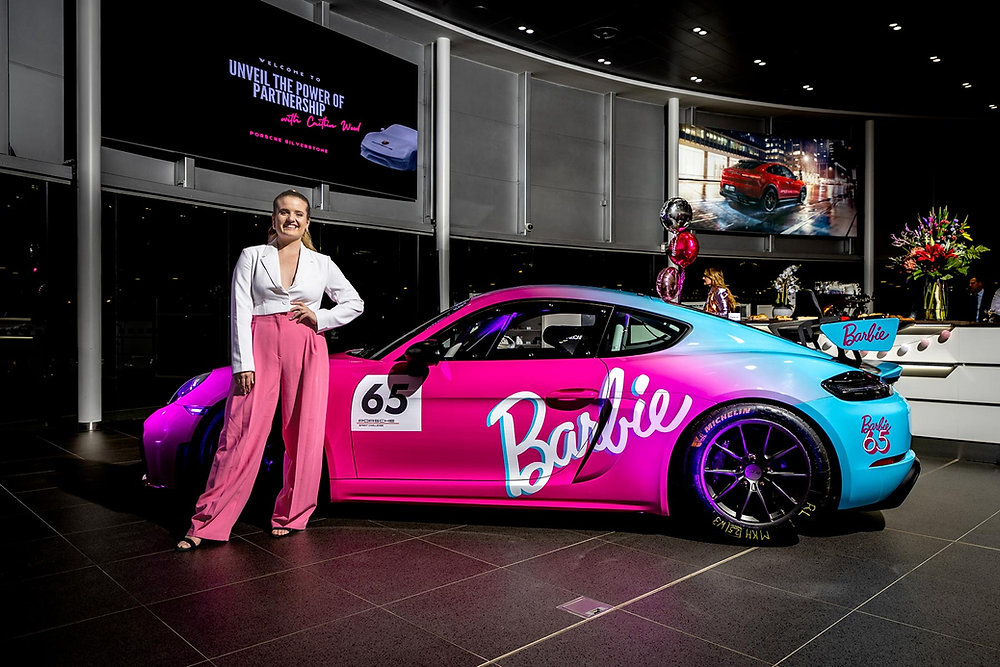





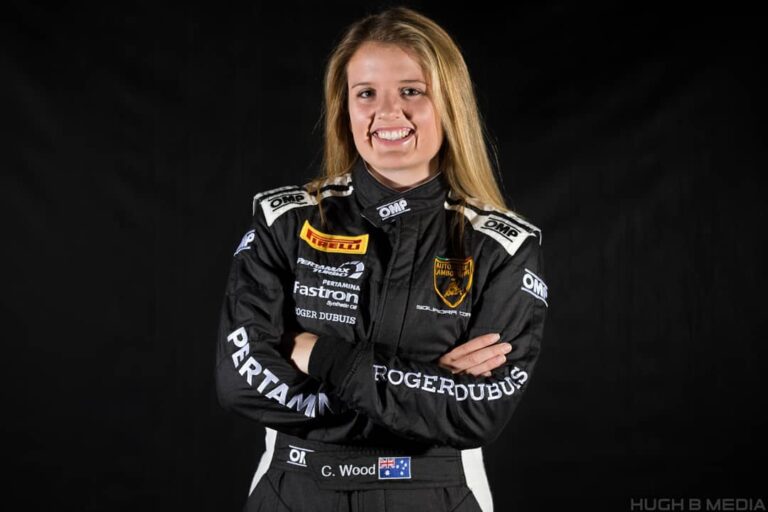


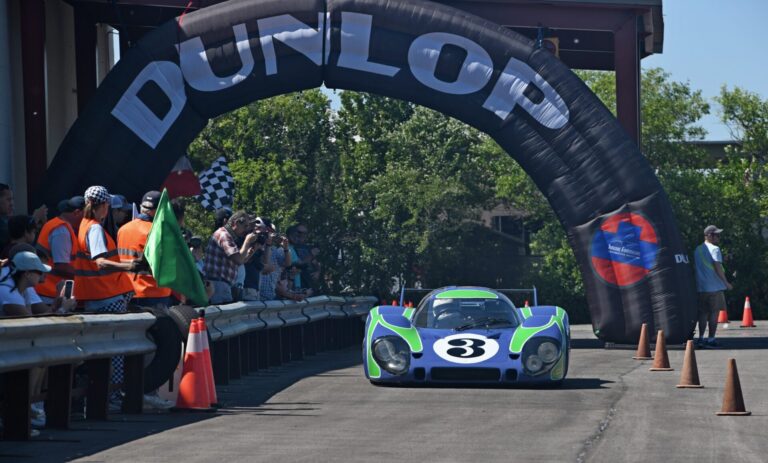
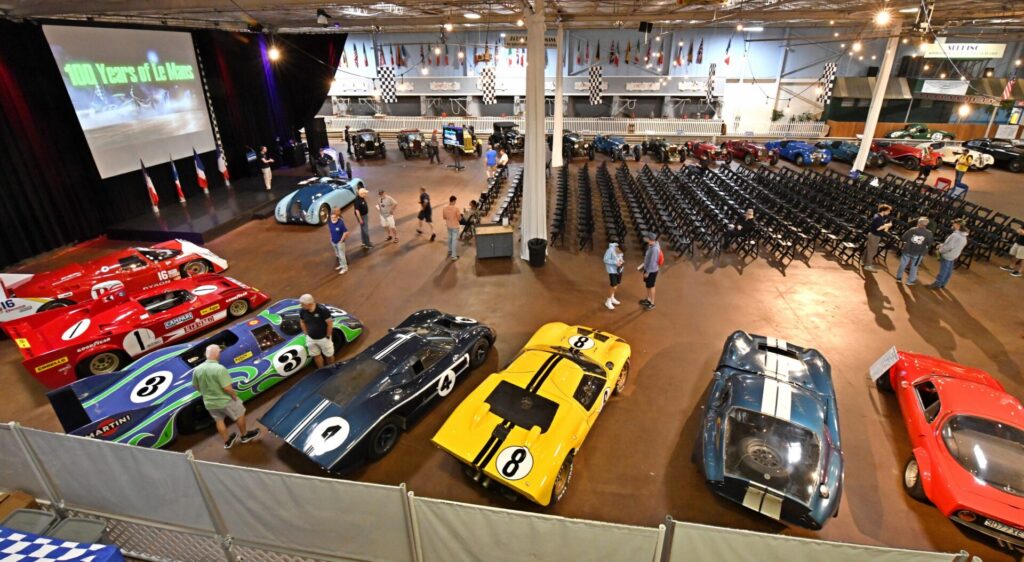
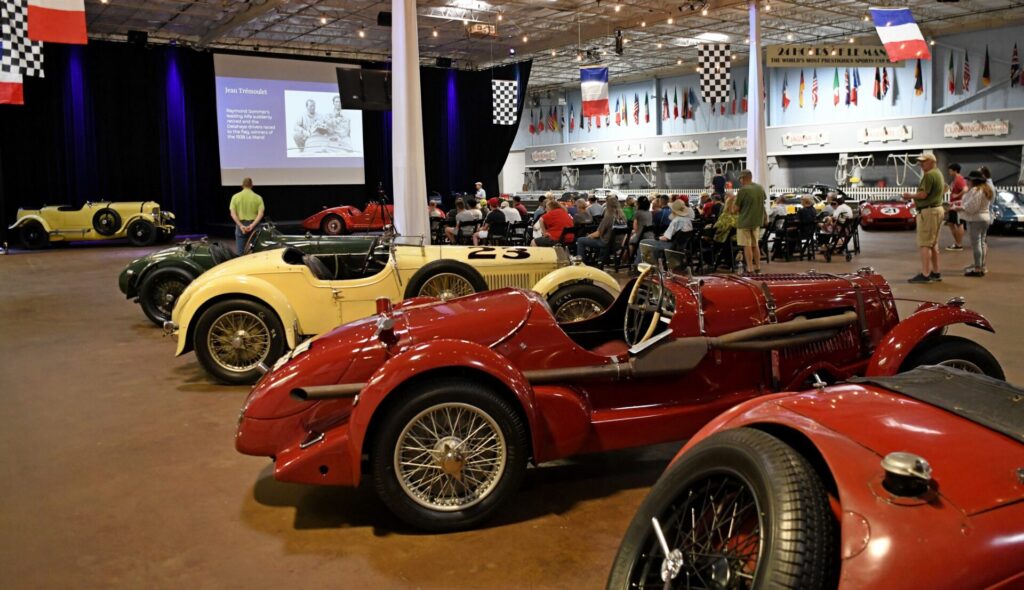

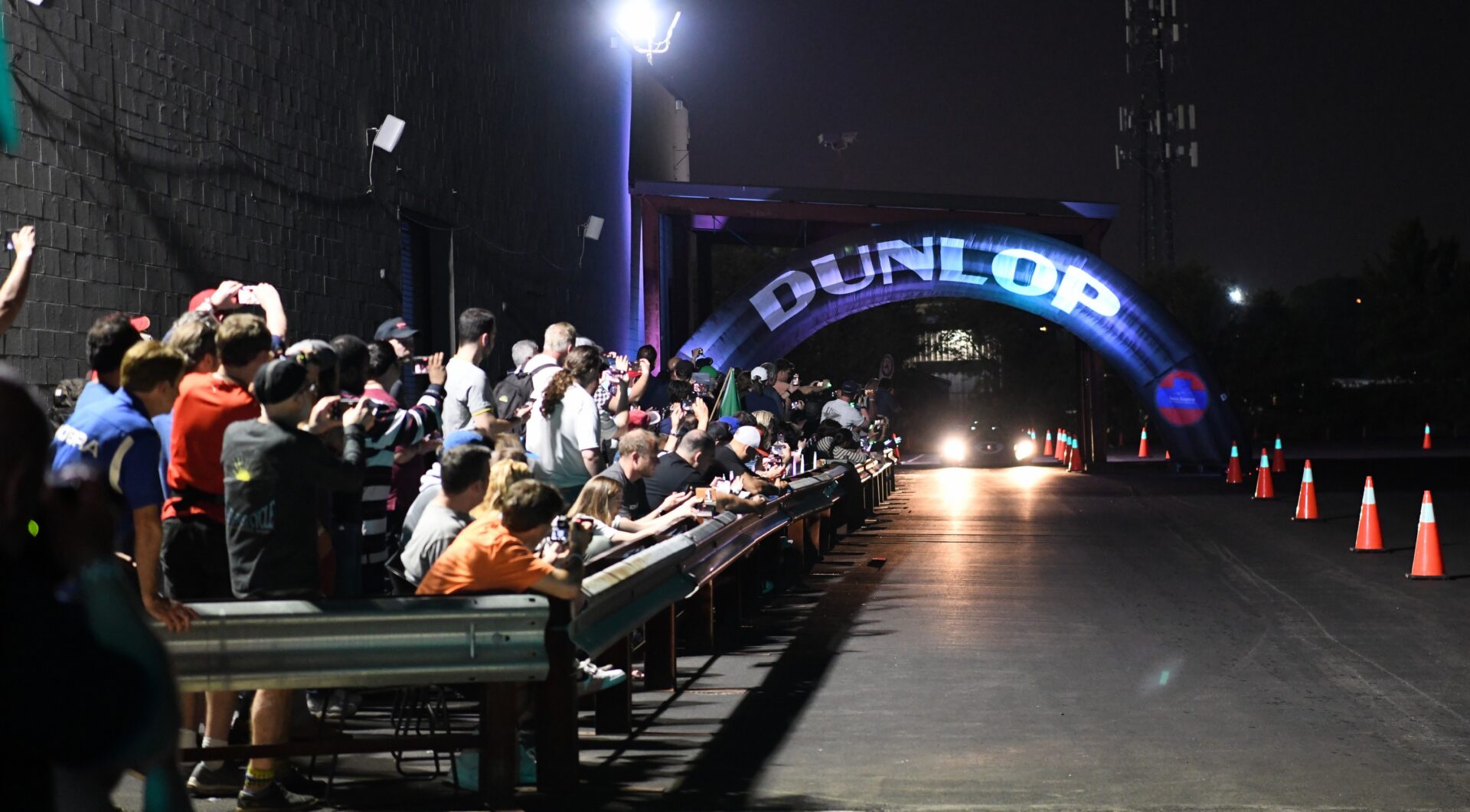

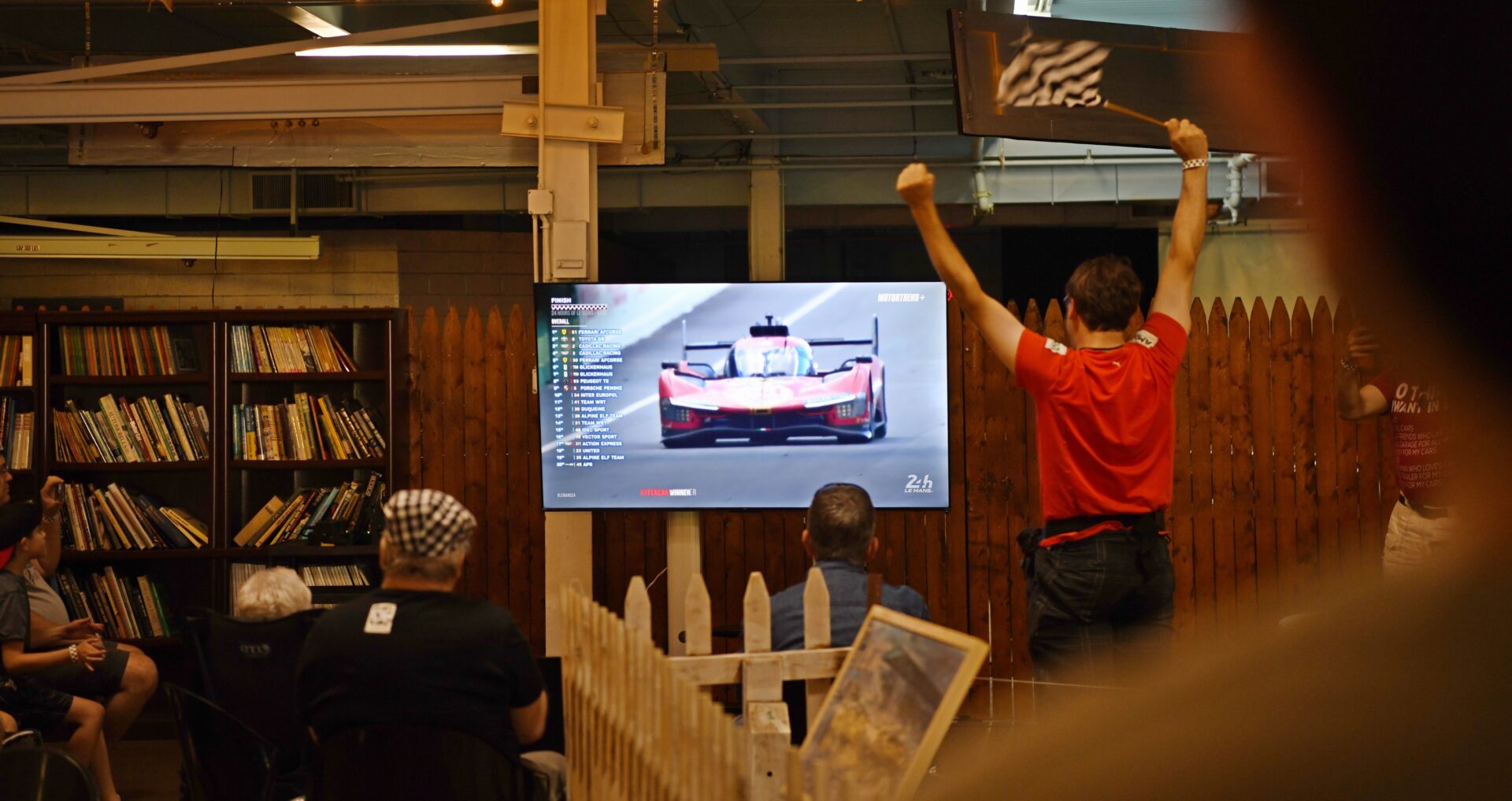
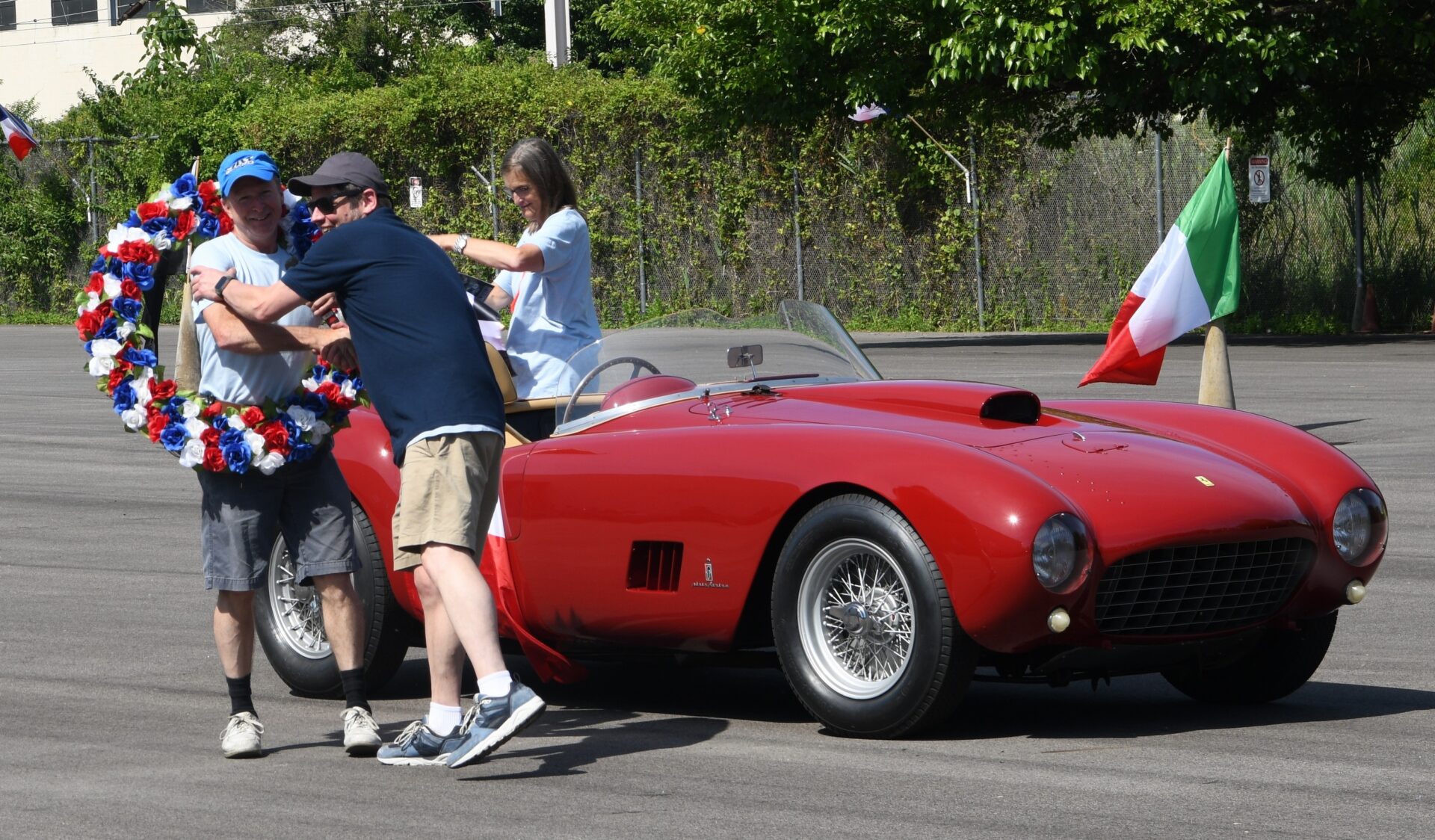
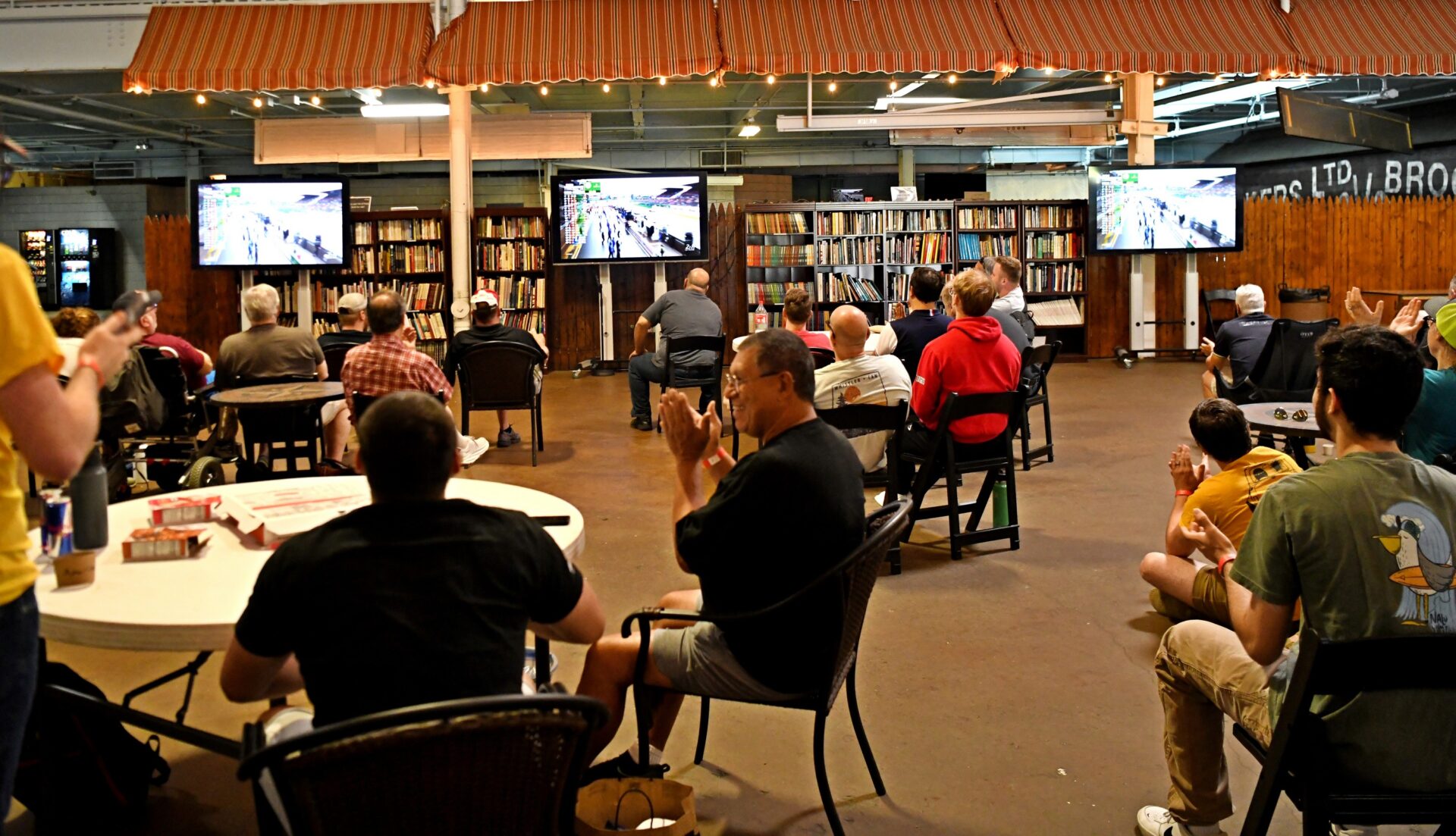
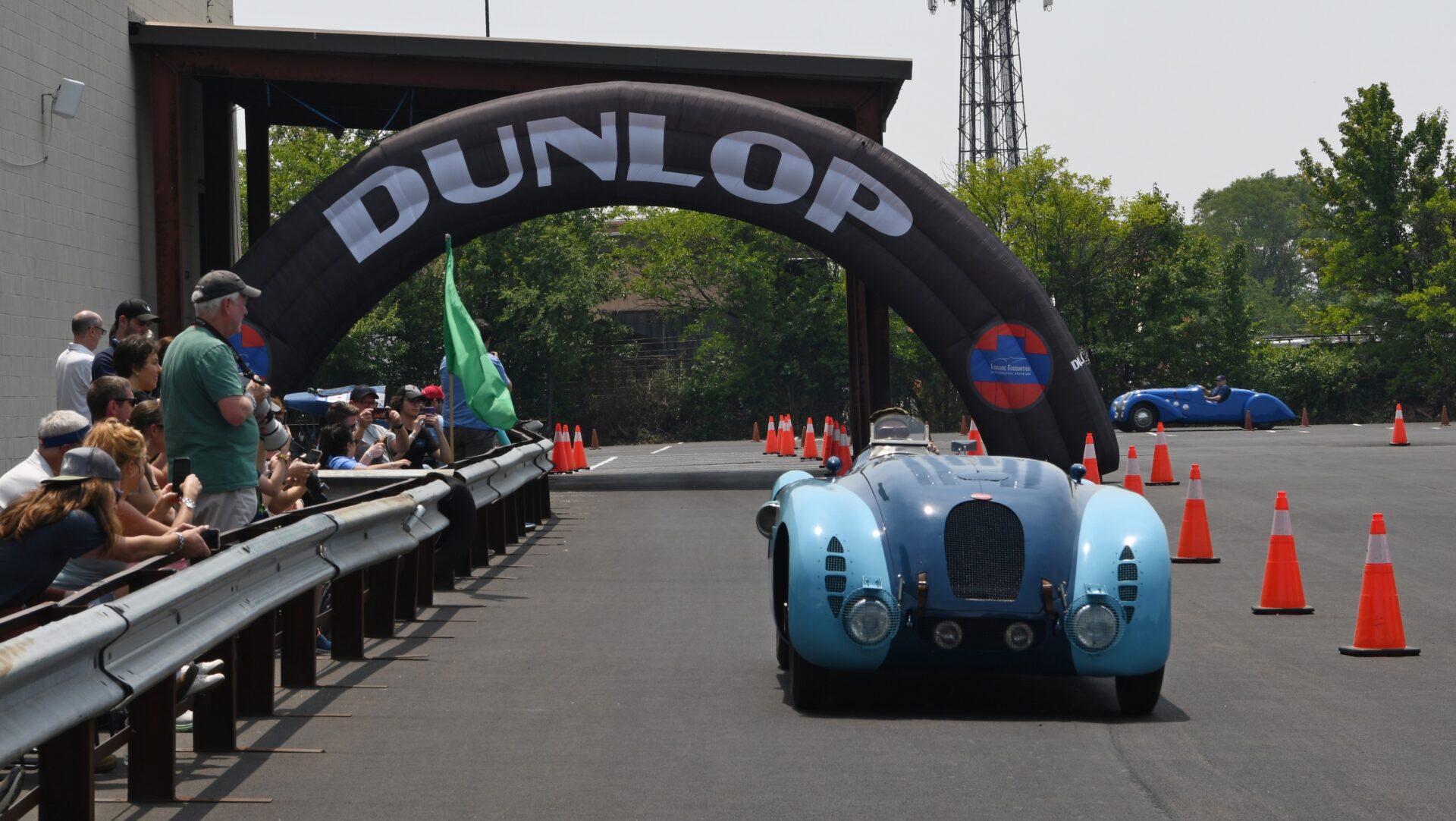
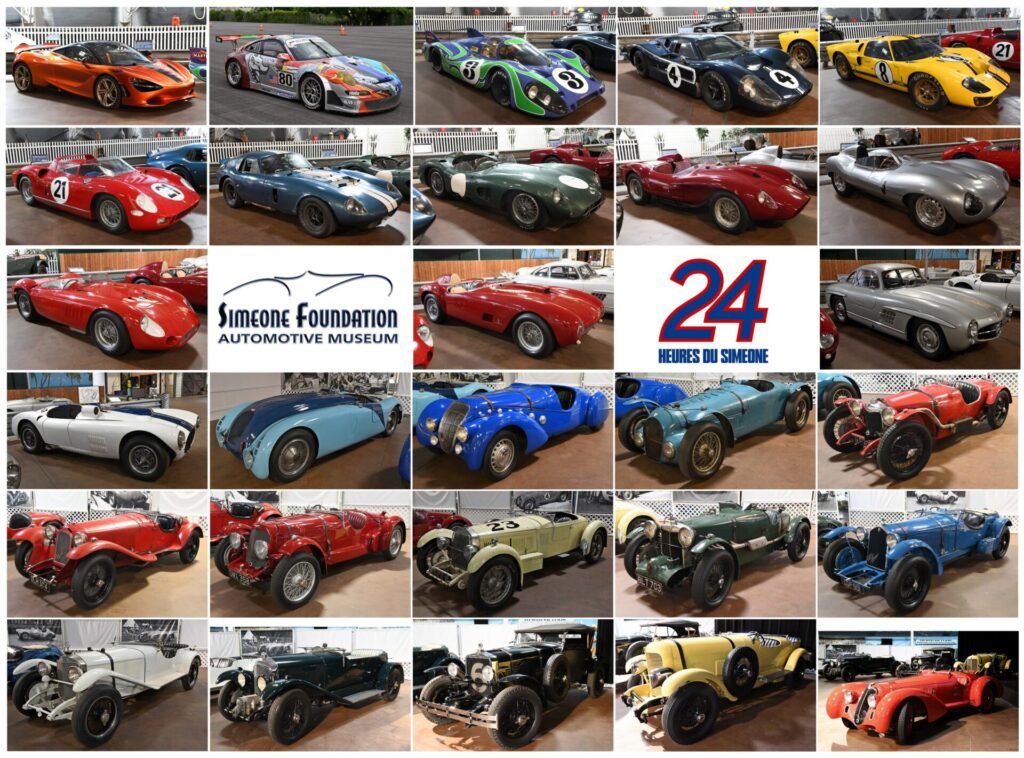

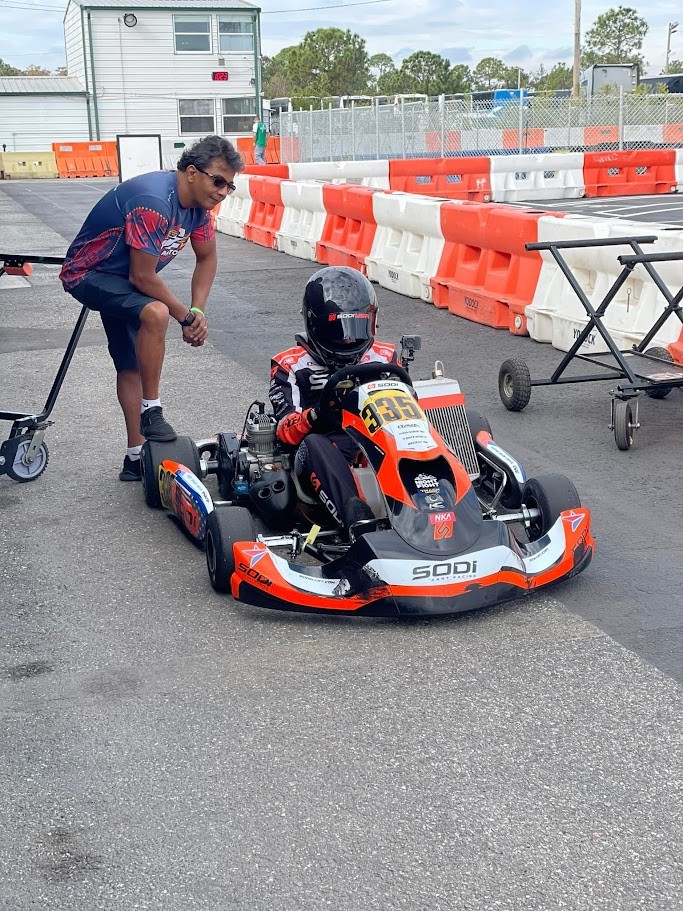


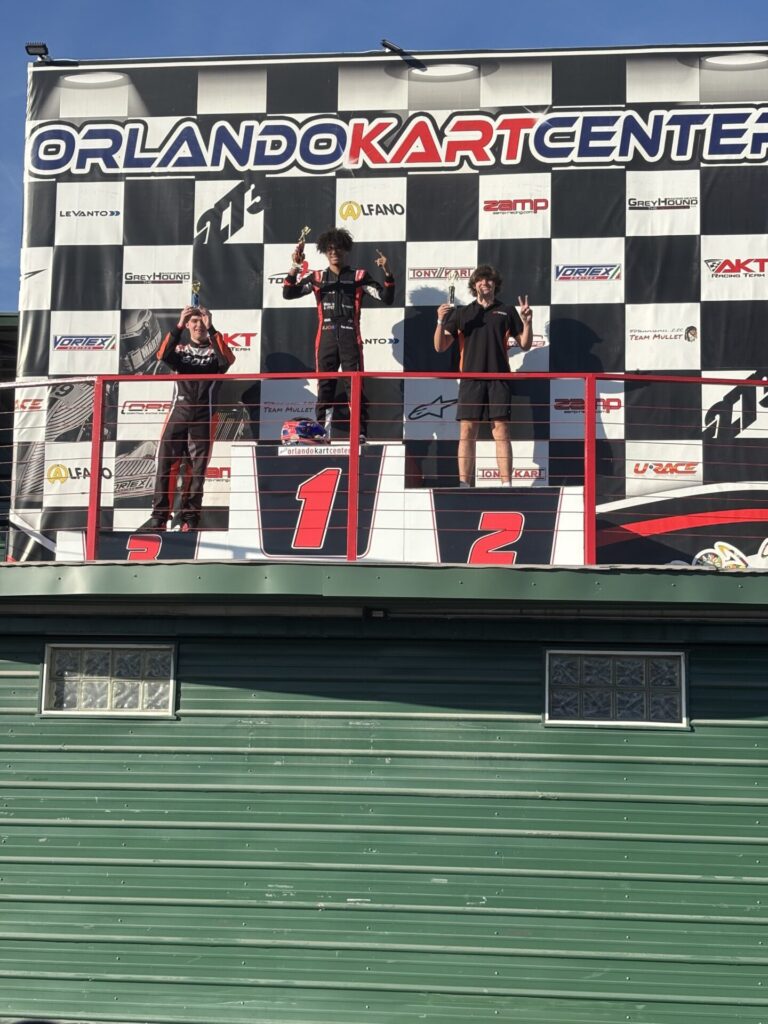
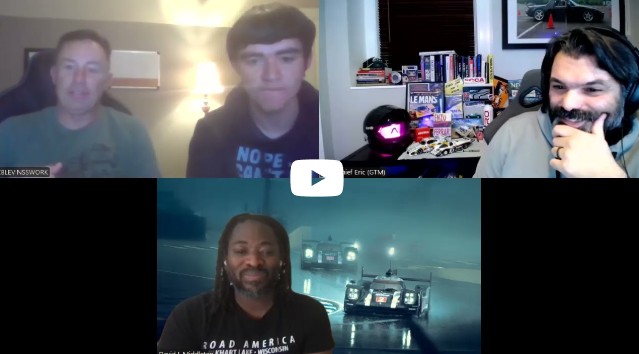

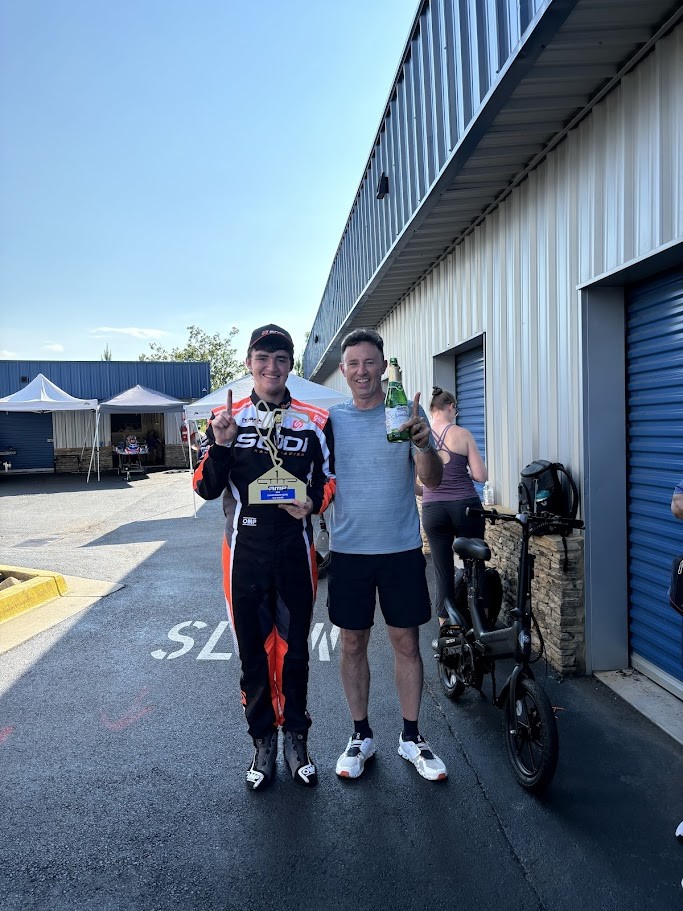
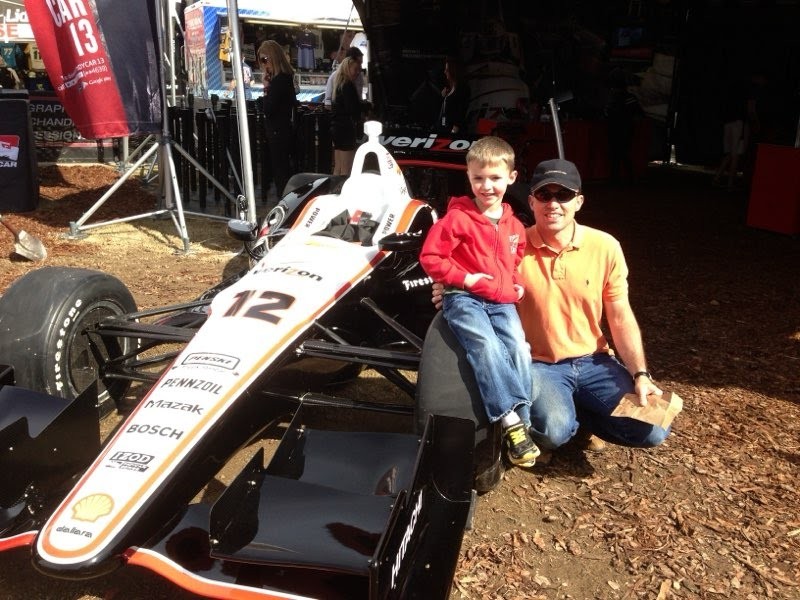
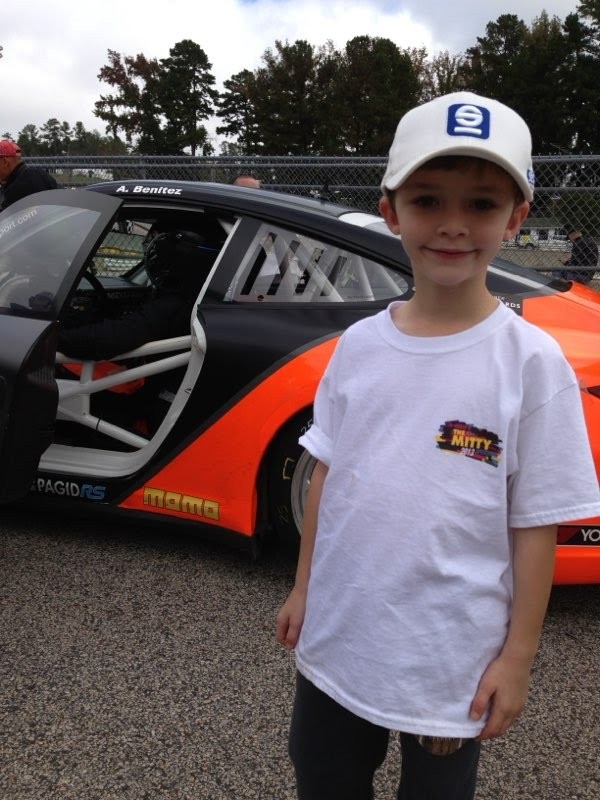
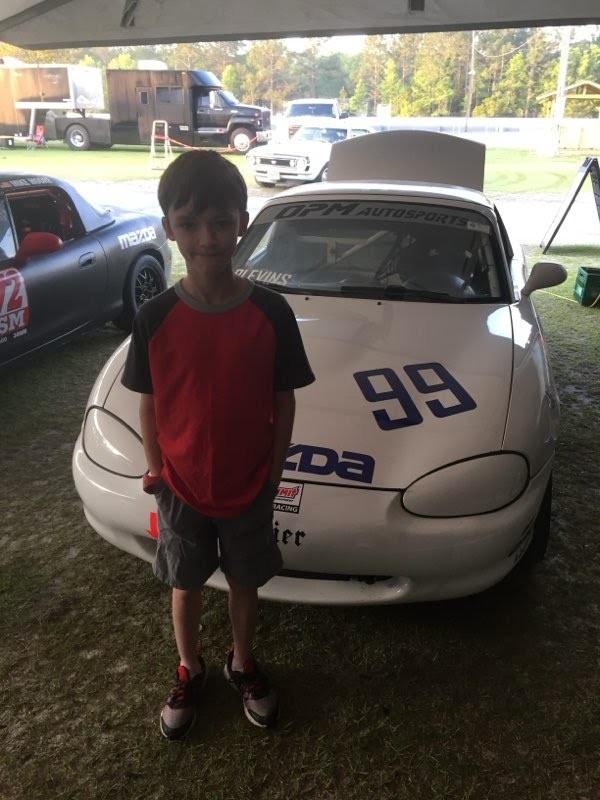
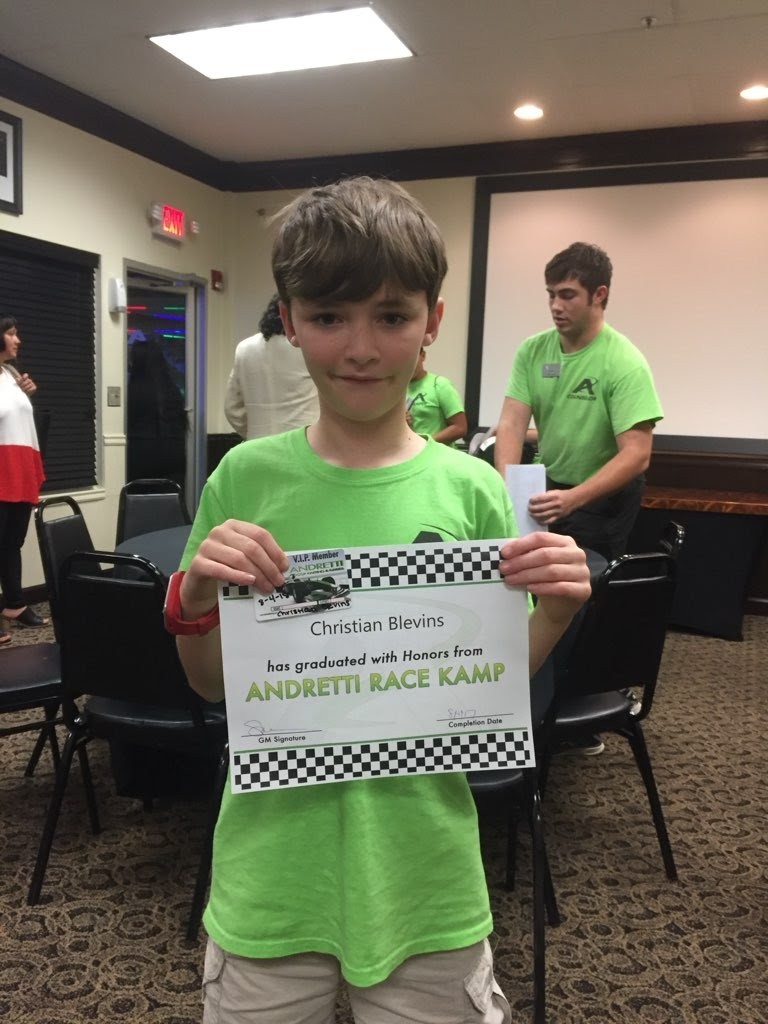
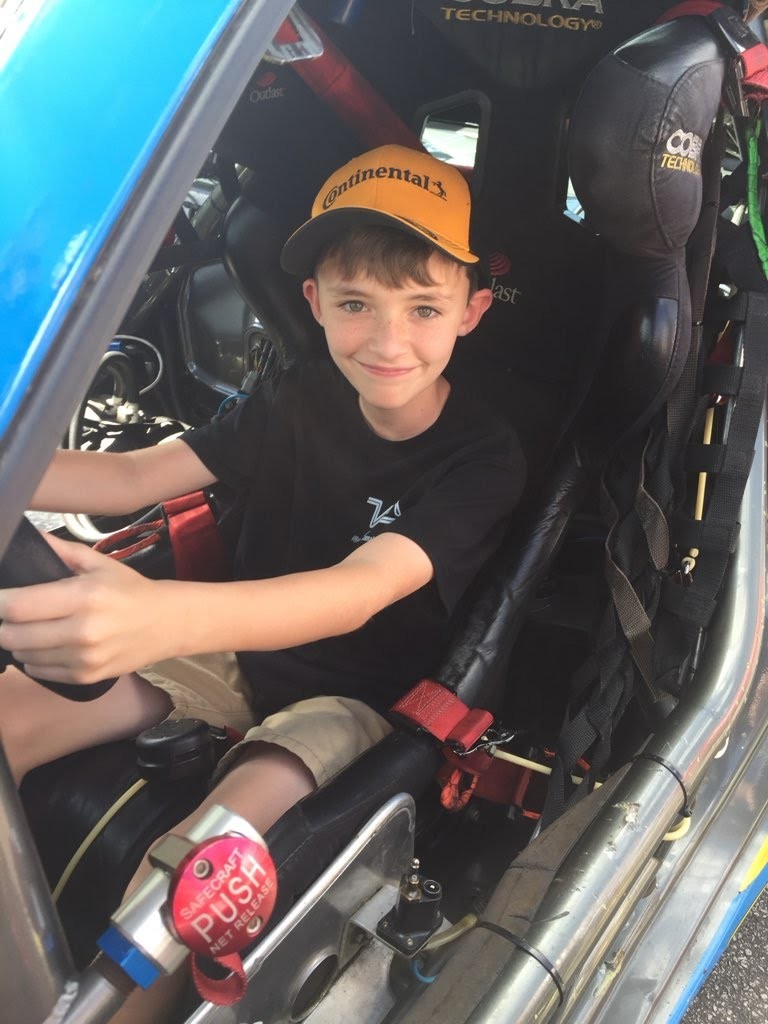
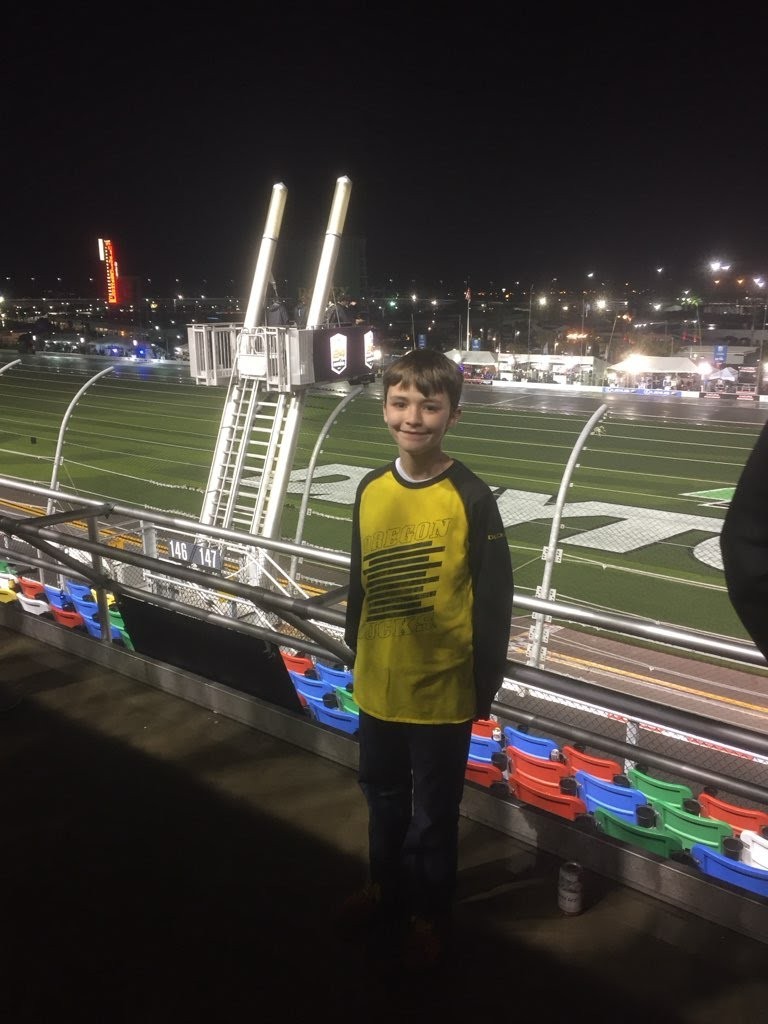
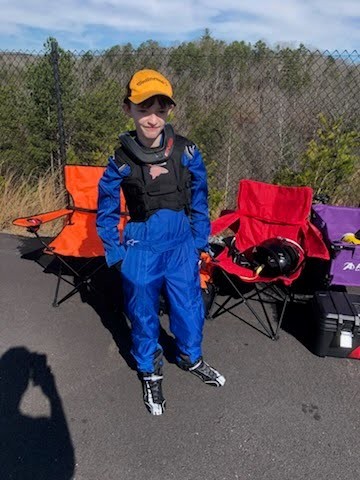



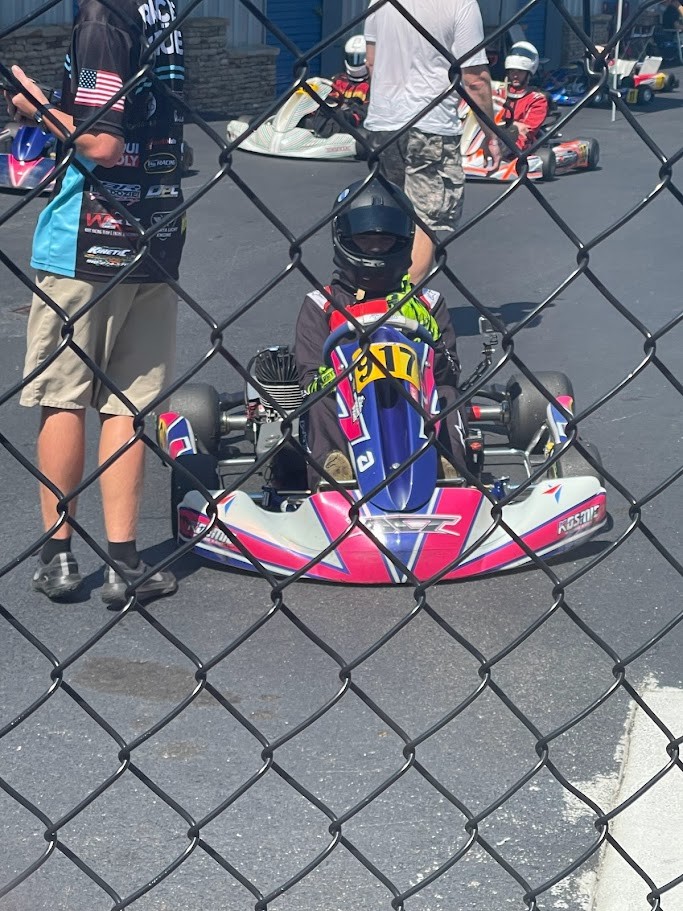


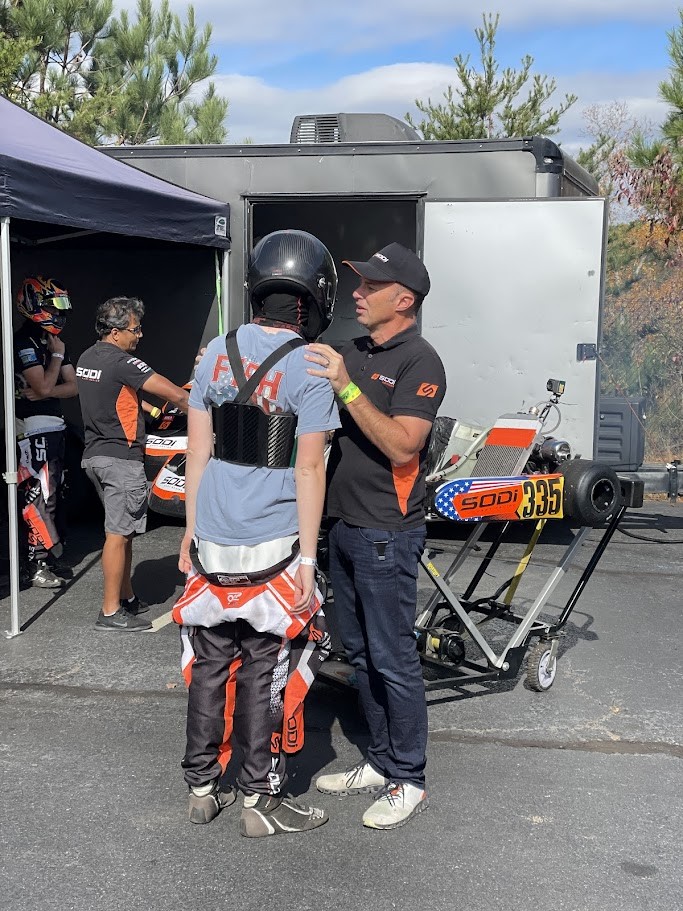

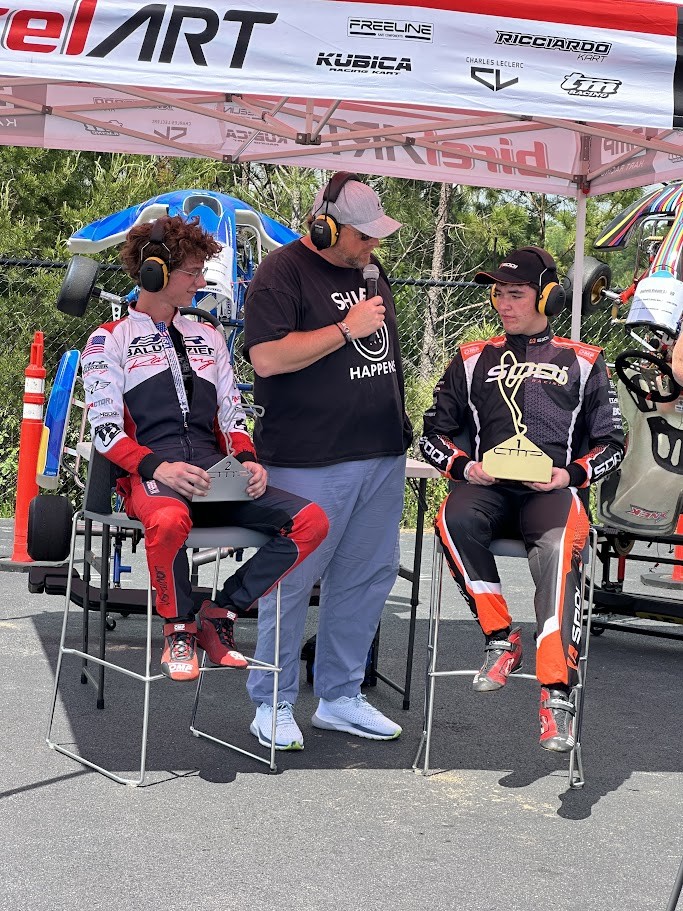
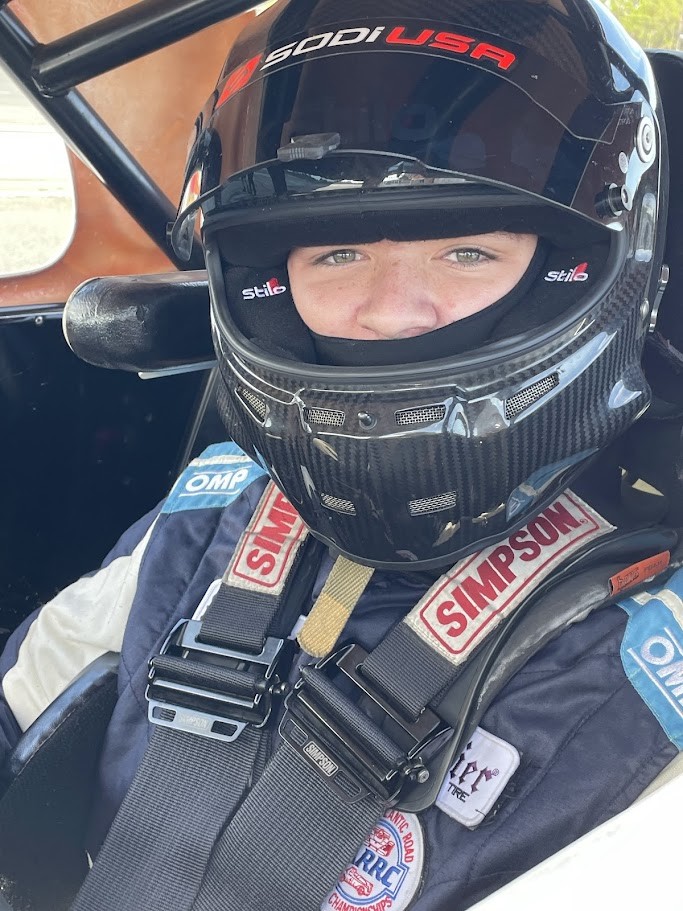
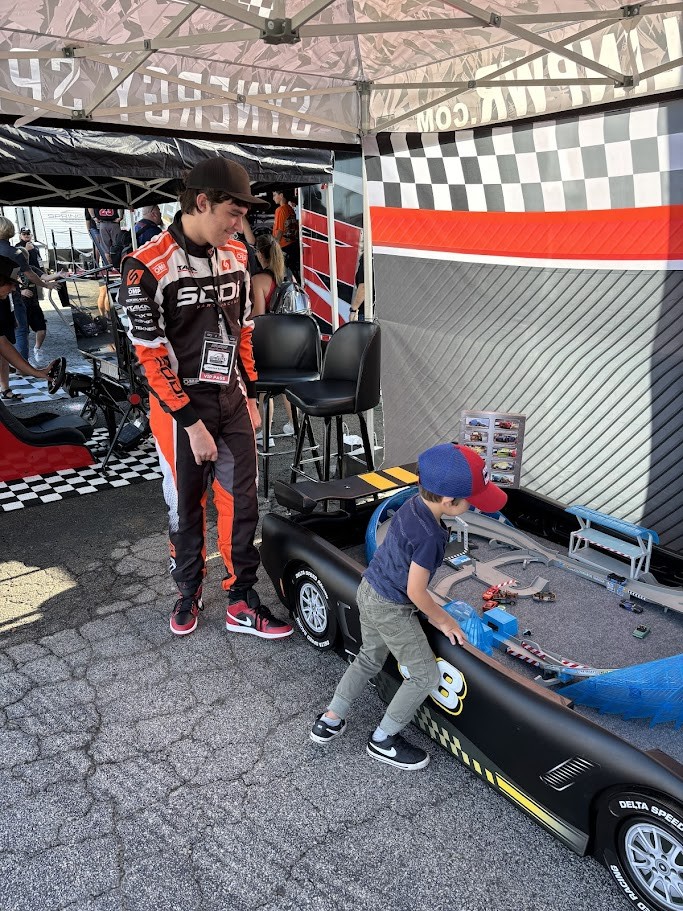
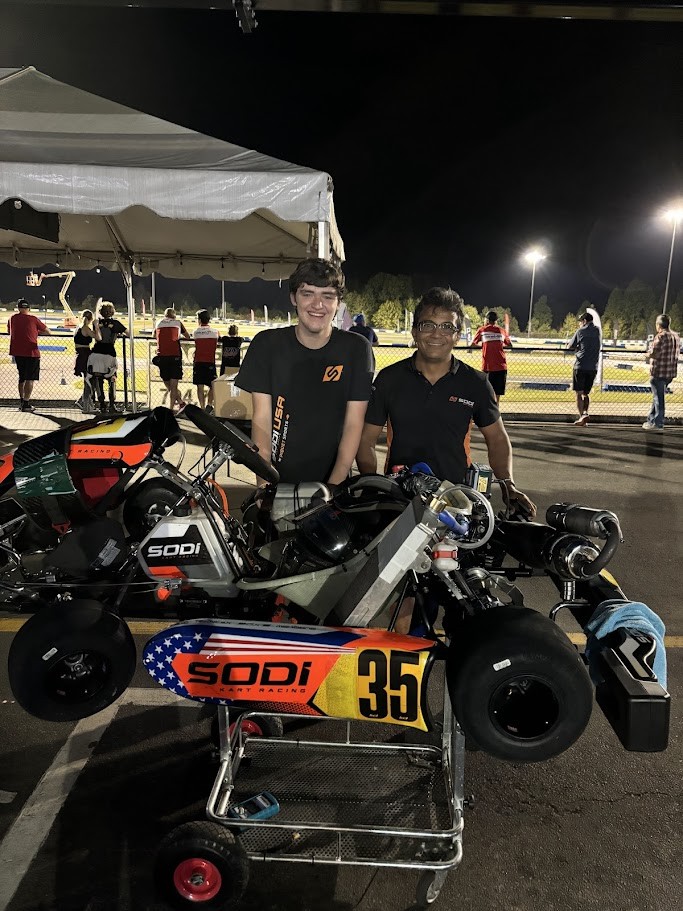

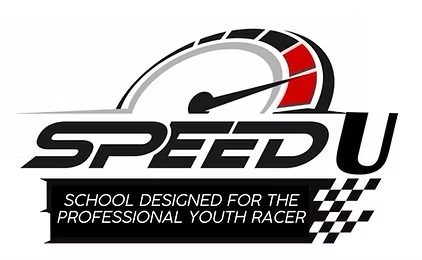









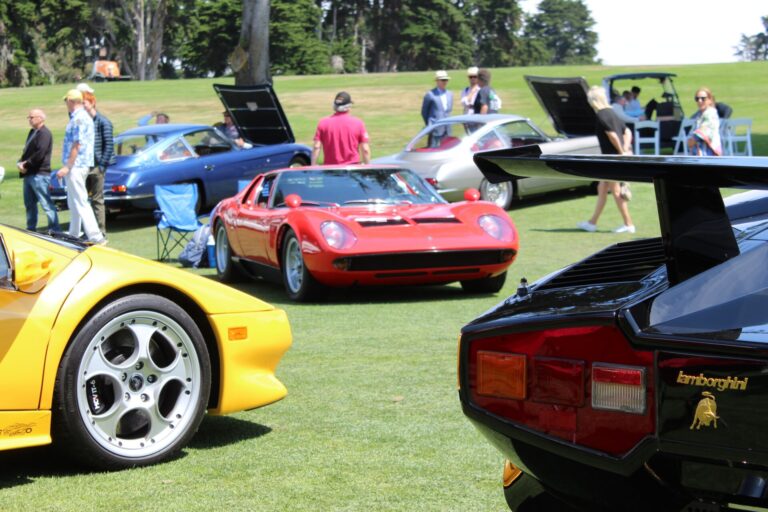



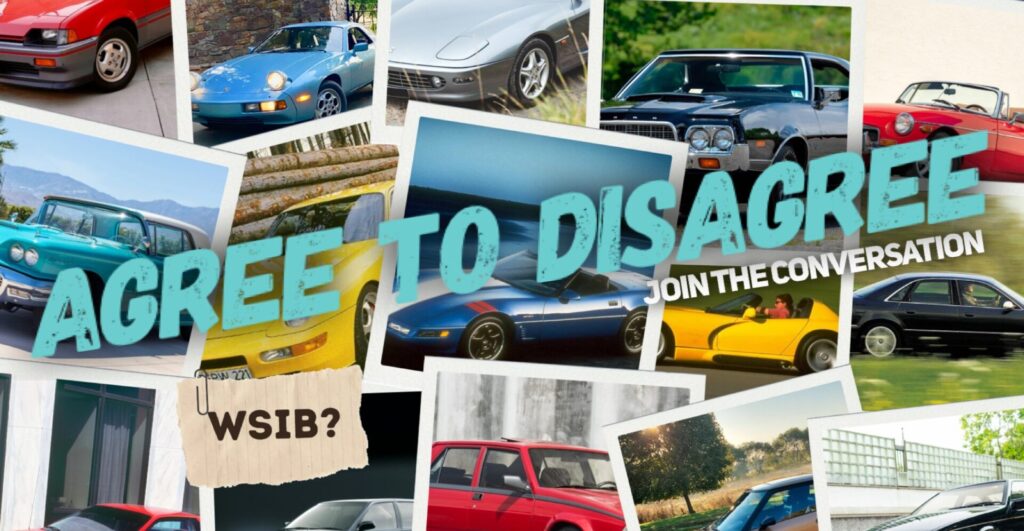
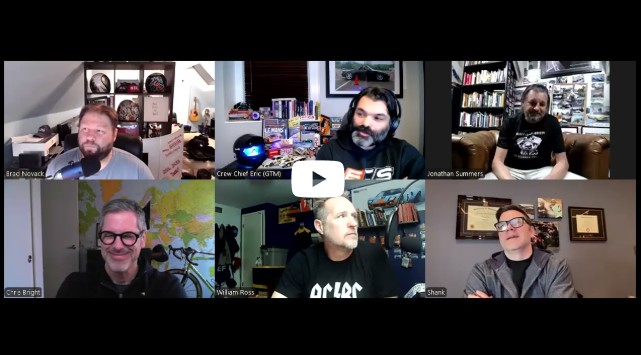

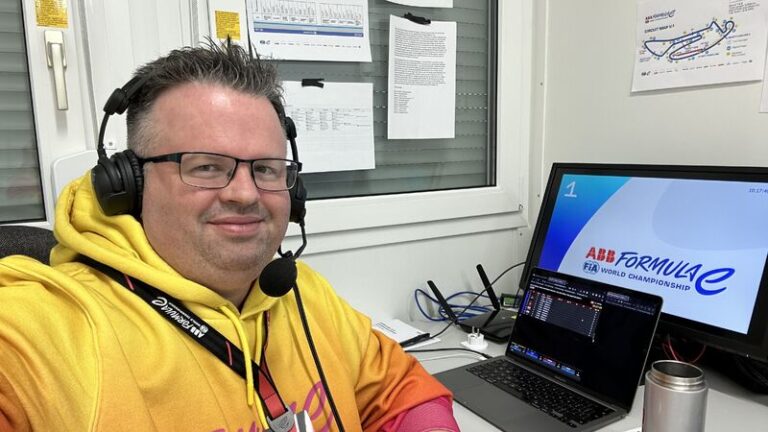
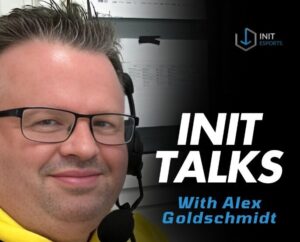


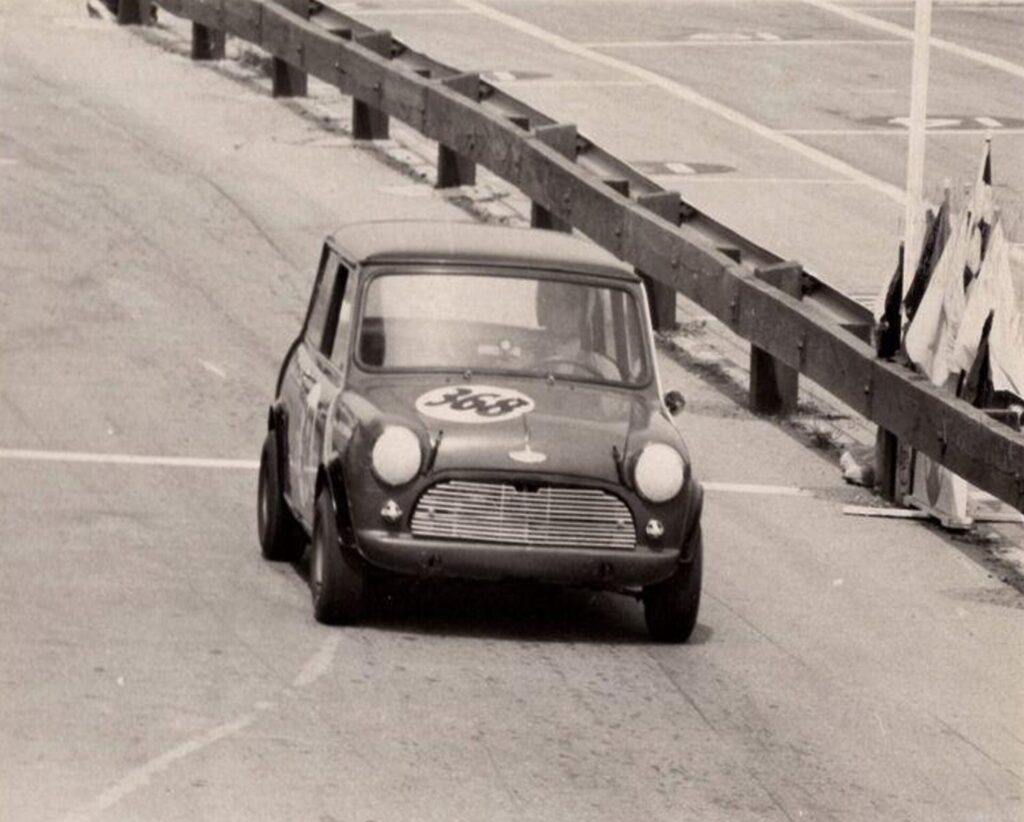
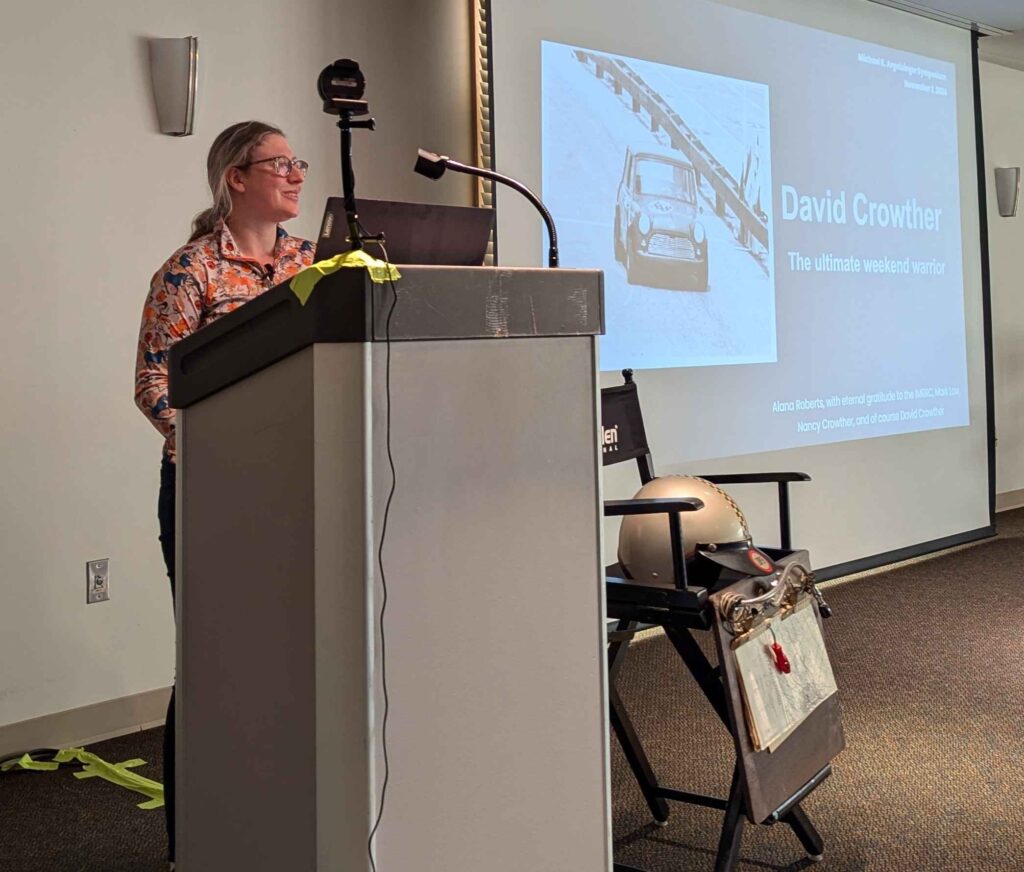






















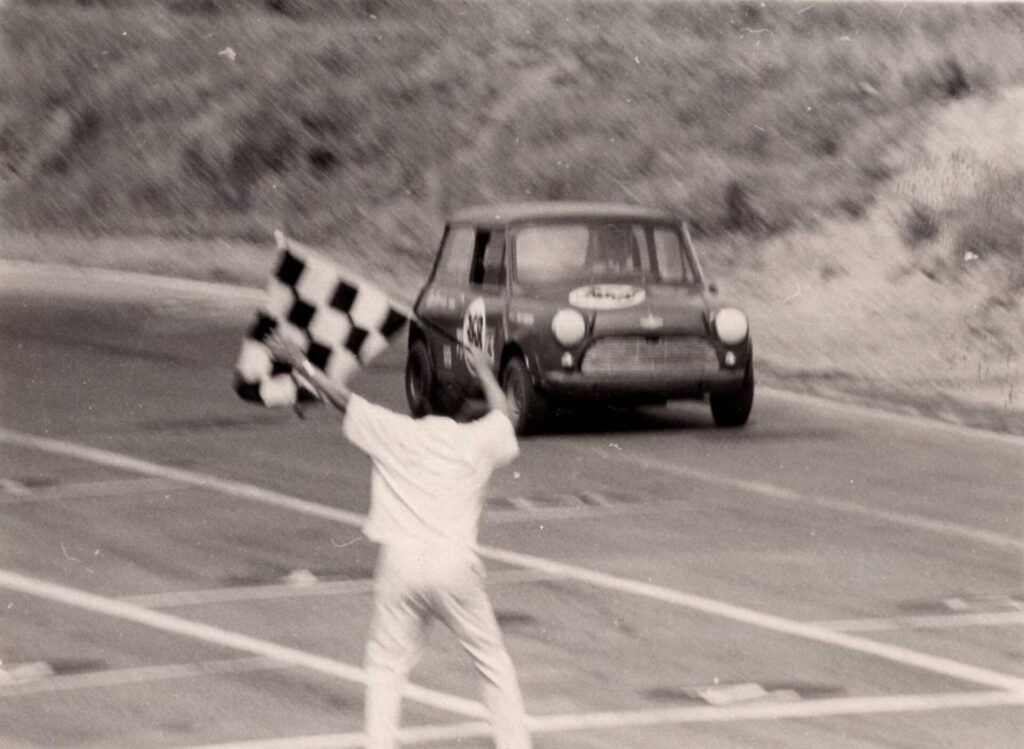
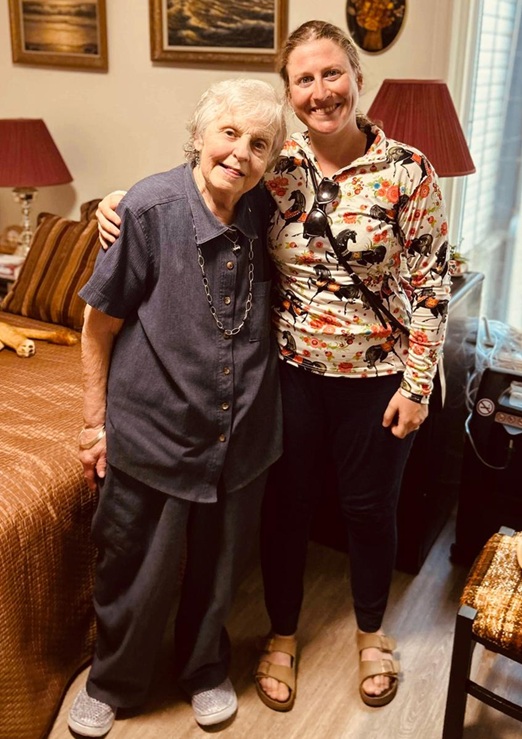
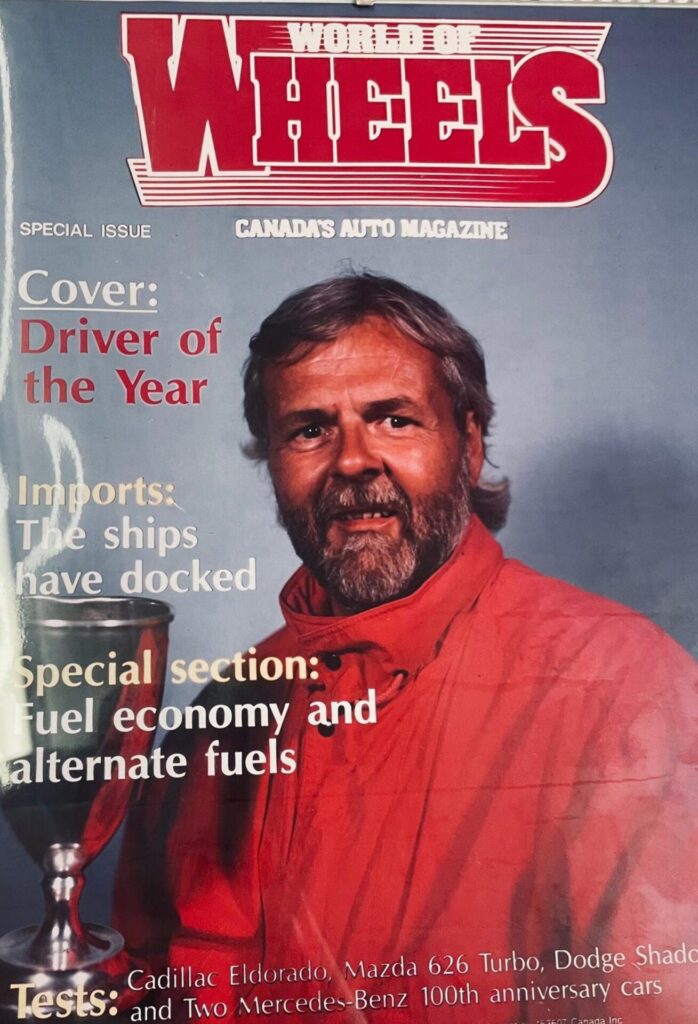
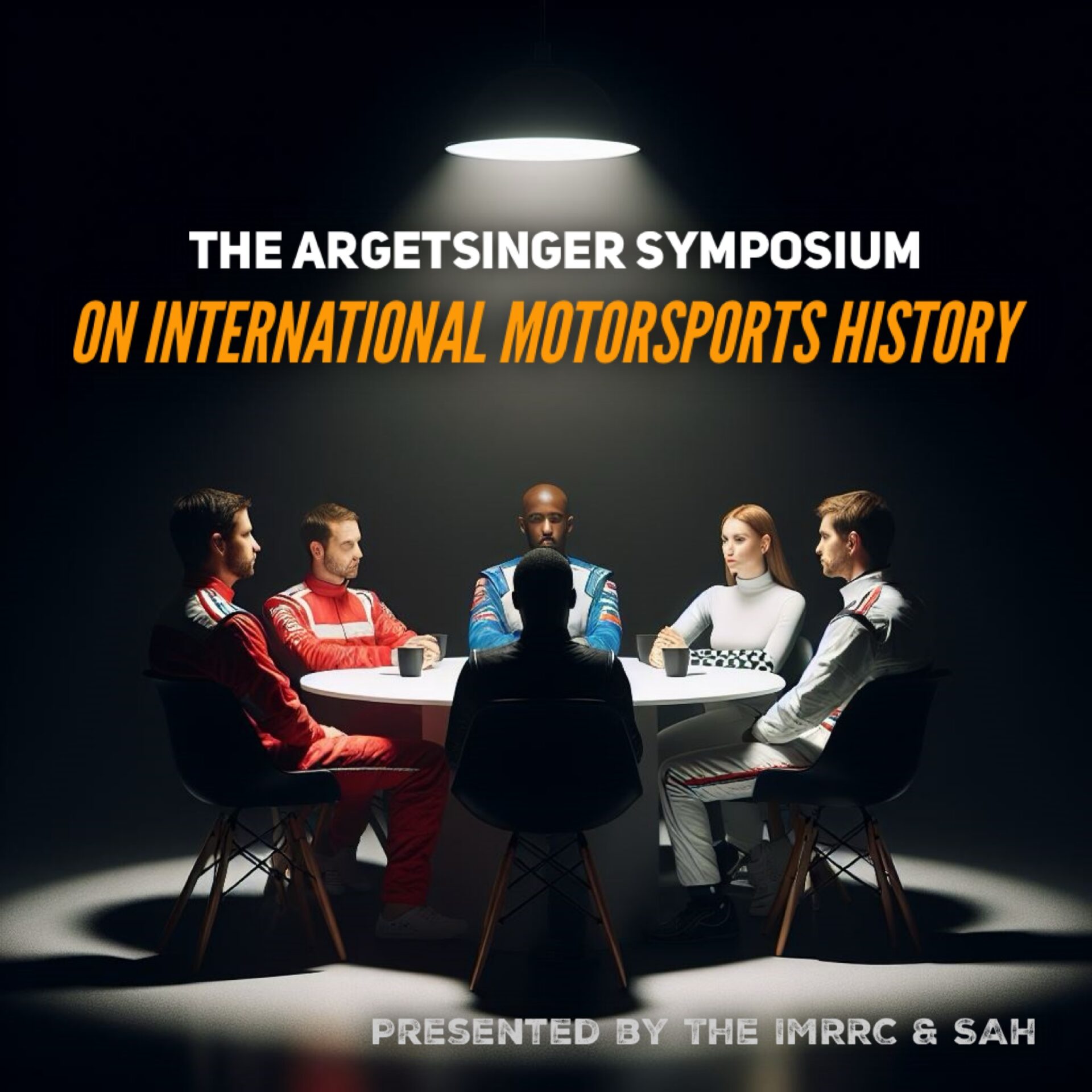
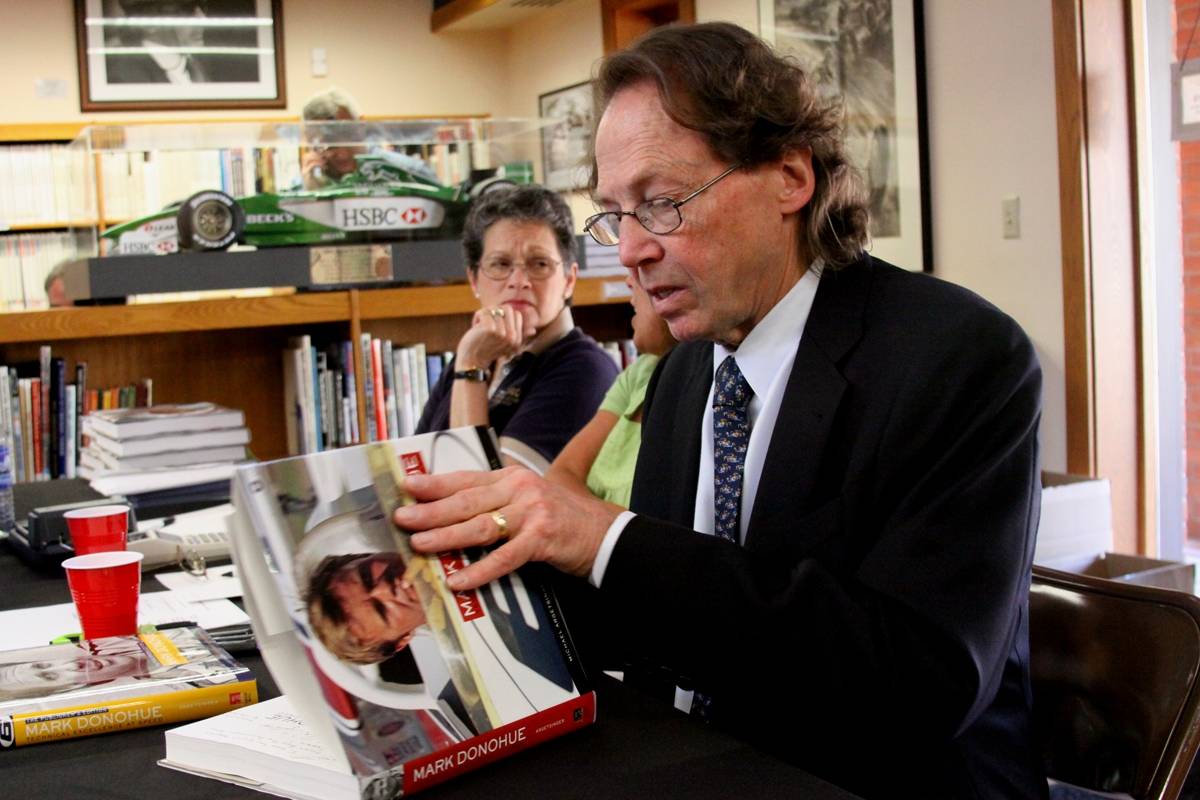 The symposium is named in honor of Michael R. Argetsinger (1944-2015), an award-winning motorsports author and longtime member of the Center's Governing Council. Michael's work on motorsports includes:
The symposium is named in honor of Michael R. Argetsinger (1944-2015), an award-winning motorsports author and longtime member of the Center's Governing Council. Michael's work on motorsports includes:


